big-box store
description: a large retail establishment, usually part of a chain
216 results

Stacy Mitchell
by
Big-Box Swindle The True Cost of Mega-Retailers
and
the Fight for America's Independent Businesses (2006)
“This study shatters the common misperception that any sort of growth creates revenue,” said Christopher Cullinan of TischlerBise.66 These findings are specific to Barnstable. Whether a big-box store will be a net loss or gain for a particular city depends on its tax structure and what services it has to provide. In areas where roads are maintained by the state, a big-box store might be a financial gain for a town, but only because FADING PROSPERITY 69 the additional road costs are borne by all of the state’s taxpayers. Cities that rely on local sales taxes, like those in California and Arizona, are more likely to find big-box stores a financial plus, at least in the short-term, but only if the costs to neighboring jurisdictions and the region as a whole are ignored.
…
As they reorganize the economy for their own ends, mega-retailers are remaking the American landscape. While a one-hundred-thousandsquare-foot store once required an acre of land, because it was two stories and located downtown, today a big-box store of that size, with its moat of INTRODUCTION xv parking, consumes at least a dozen acres. The aggregate eƒect of this is staggering. In the Cleveland metro alone, some nine thousand acres of forest, wetlands, and rich farm fields have fallen to big-box stores and shopping centers, even as the metro’s population has declined. A similar land binge is under way nationwide. Between 1990 and 2005 the amount of retail space per person in the United States doubled, from nineteen to thirty-eight square feet.
…
It certainly is not an economic model designed to foster broad prosperity. THE JOBS MIRAGE New big-box stores and shopping centers are almost invariably sold to communities as job creators. Developers, supportive local o‰cials, and even newspapers routinely refer to the number of new jobs a particular project will bring. The Dayton Daily News reported that a new Target in Sugarcreek, Ohio, “will create 150 to 200 new jobs.” Wal-Mart is “expected to create 250 jobs,” Crain’s Chicago Business reported during the debate leading up to the approval of a superstore on the city’s west side. In Salem, Oregon, “the big-box store the Home Depot envisions could create nearly 200 jobs,” according to the Statesman Journal.
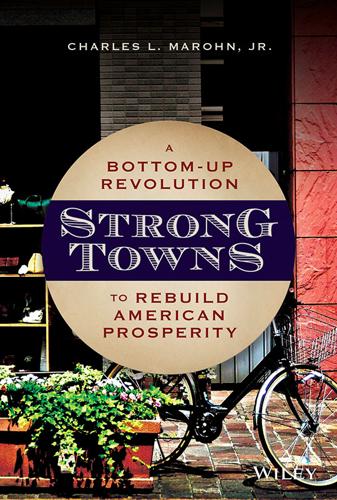
Strong Towns: A Bottom-Up Revolution to Rebuild American Prosperity
by
Charles L. Marohn, Jr.
Published 24 Sep 2019
Even where it is argued that the tax value should be based off the level of investment, a big box store – despite the size – is a marginal investment. Construction costs for big boxes are generally less than $50 per square foot.4 For comparison, the National Association of Home Builders reports average construction costs of $85 per square foot for new, single-family homes.5 An office or retail building can be expected to cost between $100 and $150 per square foot.6 Corporations build big box stores because they are cheap, and that makes them easy to amortize in a short time frame and ultimately easy to abandon. Where big box stores are reused instead of abandoned, the iteration after the big box tenant will generally be of lower intensity and lesser value.
…
Downtown versus the Edge In my home region, the most valuable properties are along the highway corridor, a state highway that provides a bypass around the core of the city. The frontage roads along the highway provide access to the standard collection of big box stores, strip malls, and franchise restaurants. The most valuable of these is the 22.8-acre Mills Fleet Farm complex, a site that includes a double-sized big box store, an auto dealership, and a gas station. Mills Fleet Farm was founded as a general store in downtown Brainerd. Their relocation to the highway corridor, and their expansion to big box locations across the Midwest, is a source of local pride.
…
The way we now build cities in North America would be unrecognizable to an American who lived even a century ago. It would be difficult for them to comprehend a highway, a parking lot, a shopping mall, or a middle-class family in a single-family home with a three-car garage. They would be lost in the world of big box stores, office parks, and cul-de-sacs. Get beyond whether the changes have been positive or not; there is one important aspect of this shift that is critical to acknowledge: It was abrupt. Humans had been living one way for thousands of years, yet within just a couple of decades, Americans transformed an entire continent around a new set of ideas.

Makeshift Metropolis: Ideas About Cities
by
Witold Rybczynski
Published 9 Nov 2010
There are no enclosed common areas—shoppers are not directed, or even encouraged, to visit more than one store; if you want a flat-screen television, you drive to one box; if it’s toilet paper you’re after, you drive to another. The economic rationale for a power center is nearby highway access and a shared parking lot; sociability, that staple of traditional shopping places—even malls—is entirely absent. Big-box stores appeared first in suburban locations, but as retailers sought new markets, the concept migrated to the city. The big-box store has adapted to urban conditions more successfully than the shopping mall, although urban big boxes tend to be smaller than their suburban counterparts (apartment dwellers have less storage space, so they tend not to buy in bulk). Urban big boxes are often organized on several floors and, at least in Manhattan, dispense with parking lots.
…
Despite such logistical challenges, urban density makes big-box stores extremely profitable. In 2008, Home Depot opened its third Manhattan store, in the Bloomberg Tower on Fifty-ninth Street and Third Avenue; Costco, the largest membership warehouse-club chain in the world, has built a 147,000-square-foot store in a new residential development in downtown Vancouver, British Columbia; and IKEA, the Swedish furniture retailer, has opened a 346,000-square-foot store in the Red Hook neighborhood of Brooklyn. I always feel a little depressed when I visit a big-box store. The experience is a considerable step down from even a shopping mall, whose interior at least has natural light, fountains, and trees.
…
Shopping mall developers did not set their architectural sights high compared to the builders of the elegant arcades and palatial department stores, but the design of a big-box store is governed entirely by economy. Basically, a one-story warehouse is built in the least expensive manner: plain exteriors, painted steel columns, utilitarian lighting, no attempt at decoration. The impression given to the shopper, confirmed by the low prices, is that everything possible is done to keep overhead to a minimum and to pass the savings on to the consumer. This is the opposite of the department store’s shopping-as-glamour, or the mall’s shopping-as-fun; this is shopping-as-utility. Although the big-box store signals the triumph of a lifestyle that values convenience, price, and anonymity, it does not signal the end of leisurely shopping.
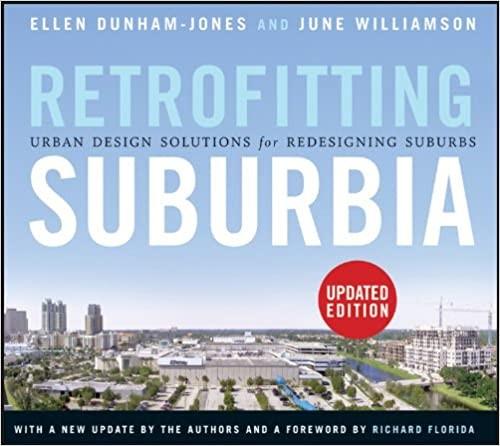
Retrofitting Suburbia, Updated Edition: Urban Design Solutions for Redesigning Suburbs
by
Ellen Dunham-Jones
and
June Williamson
Published 23 Mar 2011
As our suburbs become more clustered, they’ll become more economically energetic—with benefits for us all. While not all of suburbia will have the growth to support greater density and walkability, the examples in this book show how real workable strategies are being implemented at many scales—from making over abandoned big box stores into senior centers and schools and libraries to cutting new streets through formerly walled-off corporate campuses. Whole commercial corridors are being retrofitted into integrated communities and real neighborhoods, as you will see. True, most of these retrofits have a ways to go before they can generate the organic authenticity of older cities that have grown up over long spans of time, but they too are a work-in-progress and an important one at that, as they build community and lay the groundwork for still further development.
…
Not only does adaptive reuse make sense in the framework of green building design, but it is also a winning approach in economically stretched times, either as a stop-gap measure to keep spaces leased or as a way to diversify activities in maturing suburban communities that were already oversupplied with commercial development. As vacancies increase in malls, strip centers, and big box stores—a trend in place for some time but accelerated by the recession—a range of new, highly creative re-inhabitation projects have occurred. For example, a portion of Crestwood Court, a mall in St. Louis, Missouri, has become ArtSpace, where theater groups, dance troupes, artist studios and a children’s museum are leasing vacated stores.
…
The addition of sidewalks and pervious public green space figured into both Meyer, Scherer, and Rockcastle’s elegant transformation of a grocery store into a public library in Texas, and The Beck Group’s award-winning conversion of a Super Kmart into a megachurch in Georgia. Many other vacant big-box stores have been converted to call centers and office space—including the headquarters for Hormel Foods, which includes the Spam Museum in a former Kmart in Minnesota. There are countless additional examples of this kind of recycling that show welcome but minor improvements to the physical and social infrastructure. 5 However, retrofitting’s greater potential goes well beyond incremental adaptive reuse or renovation.
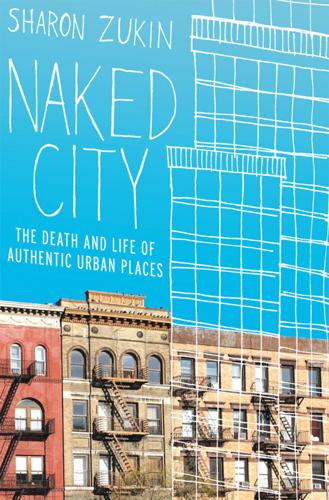
Naked City: The Death and Life of Authentic Urban Places
by
Sharon Zukin
Published 1 Dec 2009
During the past few years each side has developed a claim to be an “authentic” part of Red Hook, a claim that involves capital investment, state power, the media, and consumers’ tastes, but not many longtime residents, whether they are white, brown, or black.3 Give IKEA credit. As much criticism as it has received for traffic, importing and labor practices, it appears poised to successfully open a big-box store in New York City, perhaps the environment most hostile to big-box stores in the United States, one where even Wal-Mart has thrown in the towel. —New York Times, May 16, 2008 Four weeks before the vendors’ opening day, in mid-June, IKEA opened this store, its first in New York City. The event sparked even more anticipation, fanned by IKEA’s reputation for offering well-designed furniture at modest prices and by a long trail of community protests and lawsuits and a rising crescendo of articles in the local media, from the New York Times to Brooklyn blogs.
…
In 2008 alone, the year the Red Hook store opened, another nineteen IKEA clones were born in metropolitan areas from Paris to Shenzhen. All IKEA stores are big—the Red Hook store has almost 350,000 square feet—and each uses a warehouse design to cut labor costs and enhance shoppers’ feeling of getting bargains. Like WalMart and other big-box stores, IKEA depends on most customers providing their own transportation, usually by automobile, and driving their purchases home; for this reason IKEA branches, like other big-box stores, are surrounded by parking lots. The chain’s claim to show corporate social responsibility by encouraging sustainable forestry and forbidding the hiring of child labor stands in marked contrast to the environmental evils of traffic congestion and air pollution they are often accused of producing around their stores.
…
Though Jacobs fought strenuously to preserve an ideal vision of the urban village, and Moses just as strenuously fought to replace it with the ideal of the corporate city, their ideas have been joined to create the hybrid city that we consider authentic today: both hipster districts and luxury housing, immigrant food vendors and big box stores, community gardens and gentrification. Though this city pays its respects to both origins and new beginnings, it does not do enough to protect the right of residents, workers, and shops—the small scale, the poor, and the middle class—to remain in place. It is this social diversity, and not just the diversity of buildings and uses, that gives the city its soul.
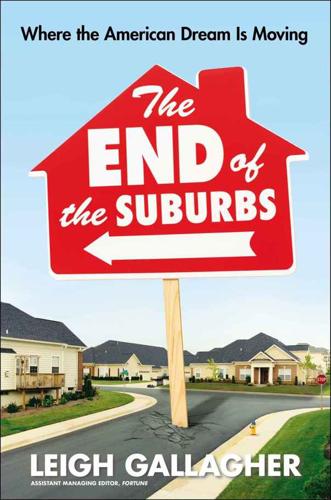
The End of the Suburbs: Where the American Dream Is Moving
by
Leigh Gallagher
Published 26 Jun 2013
Around this time the suburbs started to evolve into a new urban form entirely, sprawling self-sufficient zones that contained all the services one needed instead of being mere residential extensions of metropolitan areas. Whether called “technoburbs,” “à la carte cities,” or “boomburbs,” these areas were characterized by long corridors of mid-rise office parks, strip malls, chain restaurants, and big-box stores; no center or core; and density and populations approaching those of a small city. These areas emerged along major corridors like Route 128 in Boston, in Silicon Valley outside San Francisco, in developments alongside Aurora outside Denver, and, perhaps most notoriously, in Orange County, California, which grew to two million people in twenty-six low-density mini regions.
…
Walmart, the retailer known for its enormous footprint above all else, has been fine-tuning new formats designed for more urban areas: Neighborhood Markets, which are less than a quarter the size of its supercenters, and an even smaller Walmart Express format, which measures about the size of a standard-issue CVS. Walmart has said it is planning “hundreds” of these smaller stores across the country in the coming years. By 2016 Best Buy plans to double the number of its smaller-format Best Buy Mobile stores. Even Target, which more than other big-box stores tied its strategy to the growth of the suburbs, is going in the other direction, opening a new urban format store—called, simply, City—that’s two-thirds the size of its typical store. The first opened in downtown Chicago, and stores are planned for Los Angeles, Seattle, and San Francisco. “You have a massive rush throughout retail to get small,” Leon Nicholas of market research firm Kantar Retail told the Wall Street Journal.
…
By 1981, half of office space: Rodney Jennings, “Dynamics of the Suburban Activity Center: Retrofitting for Pedestrian/Transit Use,” Portland State University, June 1989. By the end of the 1990s: Terry Christensen and Tom Hogen-Esch, Local Politics: A Practical Guide to Governing at the Grassroots, 2nd ed. (M. E. Sharpe, 2006), p. 52. dwarfed only by the size: Many big-box store parking lots are so large, they sublease sections of their asphalt to fast-food chains. Whether called “technoburbs”: The term “technoburbs” was coined by Robert Fishman in Bourgeois Utopias. “Boomburbs” was coined by the demographer Robert E. Lang in a 2001 report for the Fannie Mae Foundation that identified fifty-three boomburbs, defined as incorporated places in the top fifty metropolitan areas in the United States with more than one hundred thousand residents that are not the core cities in their metropolitan areas and that maintained double-digit population growth over consecutive censuses between 1970 and 2010.
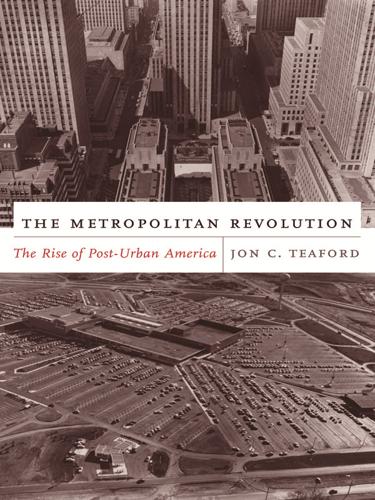
The Metropolitan Revolution: The Rise of Post-Urban America
by
Jon C. Teaford
Published 1 Jan 2006
Instead, it was rich in diversity, a historical accretion of settlement patterns and lifestyles that reflected the felt needs of millions of Americans of the past and present. Metropolitan America included the remnants of traditional cities like Boston, New York, Pittsburgh, and San Francisco, as well as pre–World War II posh enclaves like Scarsdale, post–World War II residential behemoths such as Levittown, edge cities of the 1980s, and an array of malls, big-box stores, office complexes, and chain restaurants and hotels built at the close of the twentieth century. Traveling through a metropolitan region, one did not pass from one hub to another but instead through layers or patches of settlement, each different and catering to different residents and workers and different lifestyles.
…
But a resident of a gated community in the Dallas area boomburb of Irving thought otherwise: “It seems like a secure, established neighborhood where our kids can run around without having to worry about traffic.” Claiming that in a city neighborhood “you never know what’s going to happen,” he concluded that “in a gated community you can control some of that.”13 Another emerging element of the landscape of the edgeless city was the giant windowless retail outlet known as the big-box store. By the close of the twentieth century, fewer large, enclosed malls were being built, and some were standing derelict as shoppers turned from the mall’s department store anchors and headed instead for the big-box emporiums of discounters that lined suburban highways. With low prices and huge inventories, these discount chains lured millions of bargain-hungry shoppers.
…
Another well-heeled Manhattanite told of her discovery of Target in suburban Long Island: “I came out with two shopping carts full of stuff. They had to help me out the door. It’s so cheap! It’s amazing!”16 FIGURE 7.1 Early Target store in Minnesota, with the sprawling low-rise structure and expansive parking lot characteristic of big-box stores. (Norton & Peel, Minnesota Historical Society) Wal-Mart best exemplified this reversal of the traditional pattern prevailing before 1945. Founded by Arkansas’s Sam Walton, it first thrived by catering to underserved small-town customers and then expanded into suburbia. Finally, by the turn of the twenty-first century, it was entering the central cities.
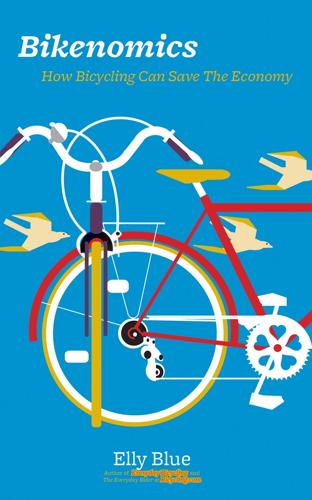
Bikenomics: How Bicycling Can Save the Economy (Bicycle)
by
Elly Blue
Published 29 Nov 2014
Just as an increase in bicycle traffic compresses distances, creating density and retail clusters that strengthen communities, businesses that rely on sprawl lengthen distance and make communities diffuse and isolated. People often cite the ability to access big box stores and their savings as a primary reason that they must own a car. The math on that can’t work out—can even the largest family truly save over $250 a month on the discount for buying peanut butter and diapers in bulk? And that is just the cost of gas. But there’s more to it. Driving a car to a large department store is a recipe for buying more than we need to. Big box stores are designed to seem cheap, but to entice us into impulse purchases. When you are on a bicycle, you are less likely to go to these stores in the first place, much less decide on the spot that you need to buy new bath towels while they are on sale.
…
Cheaper bikes are available at large department stores, but more expensive bikes from local bike shops last longer, so it’s a trade off. Or you could scour the internet, thrift stores and yard sales for a much cheaper vintage bike. A tune up to scrape off the rust might cost $150—about the same as buying that big box store bike new. Helmets, locks, and lights are another expense—you could spend up to $100 for these basics, though it would be easy to spend somewhat less or quite a bit more if you were inclined. On the high end, a fancy European cargo bike might set you back as much as $4,000. If your heart is set on an electric pedal assist, that could add another $2,000.
…
Any business that can be flexible has better chances to thrive—there is, for instance, a mattress shop in Portland that does booming sales by offering free bicycle delivery. But we have had many decades to grow to rely on our current diffuse, asphalt-covered ecosystem. Not everyone is going to be able to shift gears overnight. One summer, I opened my local newspaper every day to a full-page advertisement for a well-known national big box store featuring a photo of a smiling, middle-aged woman riding a bike. The ad was clearly not intended to promote the sale of bicycles but rather to associate the company with the idea of a healthy, active, green lifestyle. This company’s stores are famously located in the most un-bike friendly areas, surrounded by vast parking lots, reliant on giant fleets of trucks to ship all of its products—including its organic ones—from thousands of miles away.
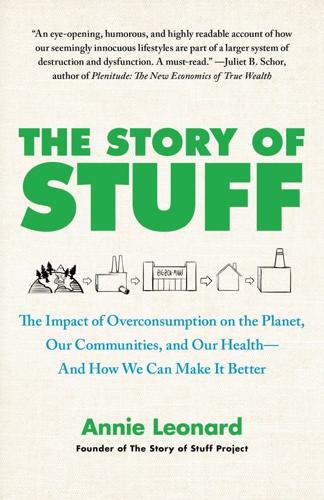
The Story of Stuff: The Impact of Overconsumption on the Planet, Our Communities, and Our Health-And How We Can Make It Better
by
Annie Leonard
Published 22 Feb 2011
Then, in 1954, Congress changed the tax code to make it more profitable for developers to create shopping malls, basically making a tax shelter out of shopping mall construction.89 As Stacy Mitchell writes in Big-Box Swindle, 6 million square feet of shopping centers were constructed in 1953; just three years later that figure had increased by 500 percent; and over the next twenty years, eighteen thousand shopping centers were built across the United States.90 And the owners of these shopping centers often preferred to make chain stores their tenants (considered a better bet for a landlord), some actually going so far as to bar independently owned stores.91 Today, cashing in on local municipalities’ eagerness to have one in their community, big-box stores receive local and state subsidies and tax breaks. Local municipalities hope that having a local big-box store will increase economic growth, provide new jobs, and boost tax revenues, but unfortunately that isn’t always borne out. Instead, big-boxes siphon money out of the local economy so those lucky Walton family members (and other chains’ shareholders) can acquire another private jet for their extensive fleet and build a new wing on their nuclear-disaster-ready underground fortress (it’s true).92 Big-box payroll typically accounts for less than ten cents of every dollar spent at a given store,93 and, in a domino effect, their low wages (16 percent less for Wal-Mart workers than the average retail worker in 2008, for example94) help suppress the wages of retail workers everywhere.
…
And by 2007, CEOs were earning nearly 300 times as much as the average worker.100 And in a cruel turn of a self-perpetuating cycle, as ordinary people have less income, the bargains promised by big-box stores are even more inviting, and so consumers support the very entity that is sucking the life out of their local economy and communities. There’s some hope, though. Local communities have gotten hip to the deception and destruction of big-box development and have been organizing to fight new big-box stores in favor of local businesses, which provide more secure jobs and keep more of the money circulating in the local economy. The highly publicized case of Inglewood, California, going up against Wal-Mart itself was one such victory.
…
Likewise, in many countries in the Global South, some communities enjoy “Northern” levels of resource consumption.) All the terms are imperfect. For simplicity’s sake, I chose to use the “developing/developed” designation. Externalized Costs (and Price versus Cost): Bargains abound: rock-bottom prices at big-box stores, discount outlets, online auction sites, even 99-cent stores. Yet there’s an unhealthy illusion at work there, a serious gap between the price you pay and the costs involved. The number on the price tag has very little to do with the costs involved in making Stuff. Sure, some of the direct costs like labor and material are included in the price, but those are dwarfed by externalized, hidden costs like the pollution of drinking water, health impacts on workers and host communities, even changes in the global climate.

Shadow Work: The Unpaid, Unseen Jobs That Fill Your Day
by
Craig Lambert
Published 30 Apr 2015
“That’s when you call your travel agent and say, ‘Get me on the next flight to Miami so I can be on my way to Rio’—and it’s done in twenty seconds. That is fun.” SHOPPING: THE HUNT FOR A HUMAN Retail merchandising and its handmaiden, customer service, are witnessing the extinction of human workers. In this age of big-box stores, try going into a Wal-Mart, Target, or Staples and finding someone to help you purchase, say, a printer. Good luck. You’re on your own, left to wander the aisles in search of an unoccupied staff person. Tracking down sales staff in a big-box store is like trekking the wilds of the Yukon Territory looking for a human settlement. Furthermore, should you be lucky enough to find someone, he or she will likely know next to nothing about the merchandise.
…
Door-to-door salespeople like the Avon lady, the Fuller Brush man, or the Encyclopedia Britannica sales force were the face of home shopping—that and Tupperware parties. Salespeople who visited your home, like the ones in stores, were thoroughly trained and brimmed with knowledge about their merchandise. They could answer any question you had; it was their job to provide the “research” you now do for yourself when you shop online or even in big-box stores, where finding a salesperson can be like spotting a scarlet tanager in a city park. At the supermarket, the cashier would “ring you up” (the mechanical cash register actually made a ka-ching! sound) and take your money. You did not tip the cashier for accepting your payment. Self-service checkouts did not exist.
…
Typically, the floorwalker was a man in a suit and tie who, as the title suggests, walked the floor of a retail establishment. They roamed freely, supervising sales staff and helping customers find what they wanted. Floorwalkers thrived in a bygone era when retailers hired people to help their customers shop, not only to take their money. In today’s big-box store, the customer has become the floorwalker, minus the supervisory role and the paycheck. This means shadow work. Consumers must educate themselves about the product, including its features, limitations, requirements, competitive advantages and disadvantages, and warrantees. Some do this via online research at home.
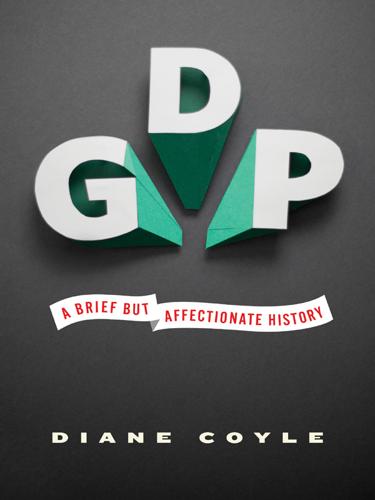
GDP: A Brief but Affectionate History
by
Diane Coyle
Published 23 Feb 2014
The standard surveys used to collect information from businesses do not cover much of the service sector. Another example is the difficulty of keeping track of changing purchasing habits. Consumers have moved progressively from purchasing in local stores to shopping in large stores, including discount “big-box” stores—where businesses may also buy some of their supplies. Now spending is shifting online. A third example is estimating the value of income received in the form of deferred stock options, once a small part of total remuneration but now quite significant. The actual number for GDP is therefore the product of a vast patchwork of statistics and a complicated set of processes carried out on the raw data to fit them to the conceptual framework.
…
Software tends to have a much shorter life than a machine to be installed on a production line, perhaps two years rather than ten, so it is not obviously the same kind of durable purchase. There is no sharp line between purchases of different types of software by businesses and by consumers for personal use. For example, many small and medium businesses might go to Staples or another big-box store to buy accounting software packages, whereas a big corporation would go direct to the vendor. So collecting the correct kind of raw data is a challenge. Finally, there is an overlap between the software sitting on a computer and the performance characteristics of the computer, so there is a risk that adopting both hedonic pricing and software as an investment double-counts the quality improvements.
…
It is almost impossible for the conventional survey methods, involving sending forms to certain businesses or setting researchers to collect information on prices from different outlets, to keep up to date when the structure of the economy changes. To give one obvious example, the spread of shopping either in “big-box” stores or online changes the way price data need to be gathered, as prices are likely to be lower than elsewhere in both cases. The emergence of new sectors of the economy, like digital start-ups or mobile telephony, mean the collection of statistics will lag on their levels of employment and investment.
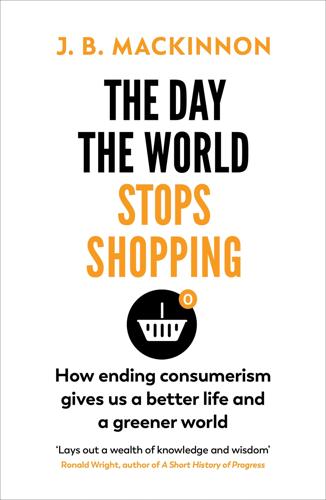
The Day the World Stops Shopping
by
J. B. MacKinnon
Published 14 May 2021
Nail parlours, with their promise of affordable luxury, held their own, though Zell marked the seriousness of the Great Recession in part by the fact that they suffered at all. “Usually, they are an unaffected type of business. It just seems that they roll along.” A decade after it ended, in Phoenix the recession was still visible from the air: dotted around the adobe-coloured city, like tissue paper on shaving cuts, were the blank squares of empty big-box stores. Phoenix lost thirteen linen stores alone, split between the big-box plazas and the malls. Yet Phoenicians quickly forgot what used to fill the abandoned spaces. Circuit City, Linens ’n Things, Kmart—stripped of their brands, the buildings all look the same, their paint paling under the Sonoran Desert sun.
…
When he first moved to Bergen from Brooklyn, in 1955, Paramus was a rural borough—“deer, fox in the backyard”—and people did their shopping on Main Street in county centres such as nearby Hackensack. Today, Paramus is a community of bosky streets, white colonial houses—and an absolute megapalooza of malls, outlet shops and big-box stores. Beginning in the 1950s, discount outlets luring New York shoppers began to toadstool along Paramus’s highways; Bergen also became home to one of the first preplanned suburbs to feature shopping malls. Local mom-and-pop shops, afraid they’d have to work seven days a week to compete, formed a lobby with church groups and residents concerned about traffic congestion, and before the first real mall had even opened, Paramus had passed its own “blue laws” limiting Sunday sales.
…
In 2012, after a long economic lull, the city of Detroit began to turn off some street lights to save money, and that was on top of the nearly half of Detroit’s remaining lights that were broken. On the outskirts of downtowns, where outlet malls, auto dealerships and chain restaurants glow, blocks of darkness begin to appear—picture Phoenix with its dozens of abandoned big-box stores. “It wouldn’t surprise me to see lights shrinking in toward cities to some extent in the US,” Storeygard said. Some of the brightest individual lights seen from space are oil and gas wells (similar to the “very bright” refinery flare John Glenn saw near Perth). One place starred with flaring wells is North Dakota’s Bakken Shale, among the largest oil and gas deposits in the United States.
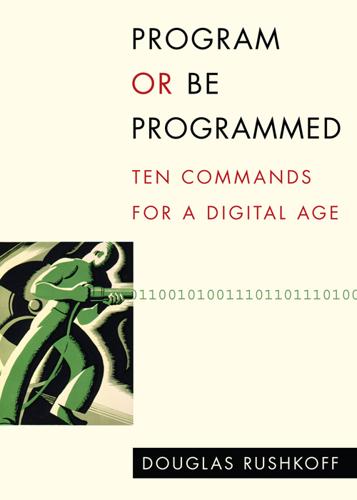
Program Or Be Programmed: Ten Commands for a Digital Age
by
Douglas Rushkoff
Published 1 Nov 2010
The value of transactions became limited to what could be measured in dollars, and ended at the moment of sale. All of the social value of the exchange was lost—and the money itself left the community. This trend reinforced itself as people—embarrassed to have abandoned a local business for the big box store—began to spend less time on Main Street or at local functions where they might run into local merchants. Local bonds deteriorated, and formerly productive towns turned into bedroom communities of commuters. While cable television and, now, Internet marketing give smaller businesses a way to peddle their wares in the same media as their corporate counterparts, it may actually work against their real strength as real world, local companies.
…
The net has turned scalability from a business option to a business requirement. Real world companies have always generally had the choice of whether they want to remain at the “mom and pop” level, or to become a chain or franchise—essentially going into the business of business. Beginning in the 1970s, shopping malls and big box stores changed the retail landscape, putting the pressure of internationally scaled competition onto local businesses. By the 1990s, migrating to the net seemed to many like a way to fight back: No website seemed to be intrinsically advantaged over another. Now the smallest players could have the same reach as the big boys.
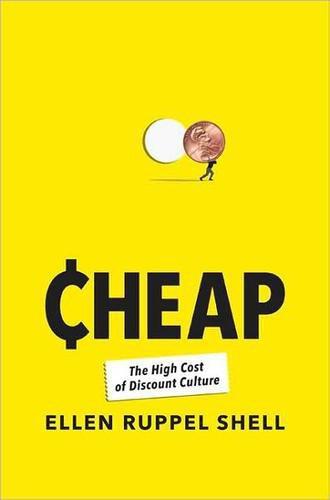
Cheap: The High Cost of Discount Culture
by
Ellen Ruppel Shell
Published 2 Jul 2009
Still, these “deals” are irresistible. Knowing that bargains are ephemeral doesn’t diminish our desire for them. It doesn’t keep us from leaving a warm bed on Black Friday morning to elbow through the post-Thanksgiving mob. It doesn’t stop us from draining gas and time to save two bucks on a case of diapers or Coke at the Big Box store. And it doesn’t prevent us from cluttering our homes, garages, and rented storage units with cheap stuff we may have forgotten we own. As a nation, we’ve come to assume that low price powers both productivity and the gross national product. Under this logic, the ebb and flow of cheap goods underlies progress and rewards us with good jobs and bright futures.
…
“And when consumers have no idea as to the quality of a product, or feel neutral or negative about it, deep discounts can actually discourage them from making a buy.” It is not very surprising that preconceived ideas skew our response to price. A Rodeo Drive or Madison Avenue address predisposes us to anticipate that a shop will be expensive and to be grateful for any price break it offers. Deep discounts at Big Box stores may prompt the opposite reaction: When something is cheap, making it cheaper still might push us to question its value. But behavioral scientists are learning that consumer reactions go beyond this predictable pattern; they are rooted in something deeper than simple preconceptions. It is hard to know what customers are willing to pay for any given item at any given time, and even harder to balance that knowledge with considerations of cost and profit margins.
…
Plausible estimates of the magnitude of the benefit are enormous—a total of $263 billion in 2004, or $2,329 per household.” That is quite a bonus. Among the experts Furman cites as having done the basic work leading to this assessment is Massachusetts Institute of Technology economist Jerry Hausman, coauthor of a highly regarded study of the impact of Wal-Mart on food prices. Hausman concluded that Big Box stores made consumers “better off by the equivalent of 25 percent of food spending.” For the poorest 20 percent of the population, this was estimated to be equivalent to an increase in income of 6.5 percent, a significant sum. I called Hausman to discuss this figure with him. He told me that Furman actually underestimated the Wal-Mart premium: The discounter not only offers low food prices to its own customers but forces other local supermarkets to drop their prices as well.
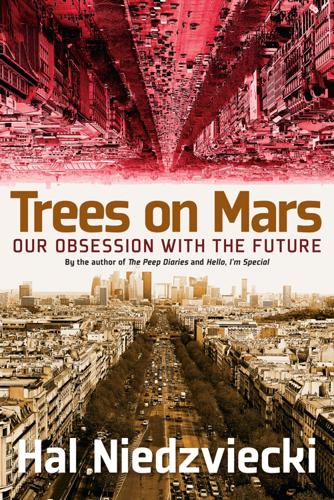
Trees on Mars: Our Obsession With the Future
by
Hal Niedzviecki
Published 15 Mar 2015
The warehouses are a key step in the journey from Asian factories to stores all over North America including, of course, the biggest chains like Walmart, Costco, Target, and even Amazon. Your phone might be conceived in California, but it’s put together in China and has to get into your hands somehow. We take for granted that we can drive to the big-box store—or click a button on a big-box store’s website—and get what we want when we want it. But that assumption involves a complicated process that most of us never see or think about. At Warehouse Workers United, I meet the people whose job it is to unload, unpack, reload, and repack the miracle devices of the future faster than anyone ever could before.
…
They received route optimization—the fastest way to get from point A to point B as they made their way through the massive conference building searching for any particular seminar or showcase. ESRI, in exchange, received data about where every user went when. Moving forward, Hall sees this as being something you could do with malls, big-box stores, and grocery stores—opt in on your mobile device, on an “application to tell me how to move through the stores to efficiently pick up groceries.” Here Wolfgang Hall starts to visibly show his enthusiasm: “You build heat maps based on that: this area is highly frequented, this area is cold.” In doing so, you can solve two problems: the customer has a better experience, and the retailer gets real-time data about where the customer is going in their store.
…
Like Walmart, Amazon has gutted local businesses and sucked money out of small towns, downtowns, and entire regions. Amazon’s unlimited selection, cheaper prices, and free shipping on books on orders of $35 or more has decimated bookstores and severely hurt publishers. First the small bookstores and now bigger bookstores like now defunct Borders Books and struggling Barnes and Noble. Next the big-box stores like Best Buy, which survived the initial gutting of retail by Walmart, are coming under pressure. All this means that Amazon, like Walmart, is more Scrooge than Santa. Again like Walmart, in order to maximize discounts to shoppers and shut down the competition, Amazon has to do a lot of work in the shadows, outside of the prying eyes of customers.
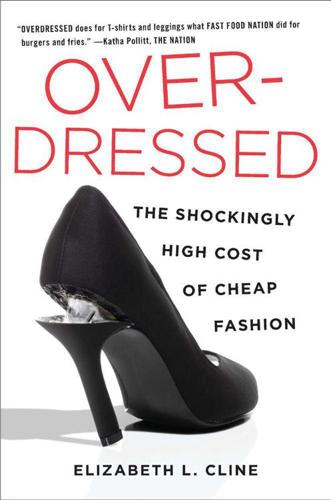
Overdressed: The Shockingly High Cost of Cheap Fashion
by
Elizabeth L. Cline
Published 13 Jun 2012
Ng says, “[The retail price] is not even enough for me to start talking to them and analyze all the details of the project, not to mention to pay the workers to sew it.” He was also approached by Babies “R” Us about producing a line of T-shirts. Ng offered the company a price of $2 or $3 per shirt, but it turned out the big-box store wanted to sell a half-dozen shirts for that price. The expectation of cheap also hurts clothing designers. A drama unfolded in the spring of 2011 on the Web site well-spent.com, a site devoted to handcrafted and locally made products that “don’t cost an arm and a leg.” Independent men’s wear company UNIS, owned by New York–based designer Eunice Lee, was criticized on the Web site’s message boards for the price of her men’s khakis, which retail for $228.
…
When cheap imports started to flow into America in the 1970s, sewing machine ownership and sewing skills started to wane. In recent decades, home sewing and custom clothing have almost gone extinct. It’s generally accepted that cheap imported clothes did in home sewing and made obsolete the professions of dressmakers and tailors. Joyce Perhac, president of the Sewing & Craft Alliance, says, “You can go to a big-box store today and get a T-shirt for $2 or $3 if you want. You could buy a dress today for $10 or $15. In the past you couldn’t do that. When we started importing lesser goods from overseas, then it just changed the balance.” My mother learned how to sew from her mother and made an outfit from scratch in home economics class in high school.
…
My grandmother on my father’s side didn’t make entire garments, but she was very skilled at taking her family’s clothes in and letting them out. I never learned how to sew. In a single generation the skill was lost. I asked Perhac if it really mattered that we don’t know how to sew anymore. After all, we can just go to a big-box store and buy that $2 shirt today. “Sewing is vitally important,” Perhac countered. “People can’t sew their own buttons back on, and that’s such an easy thing to do. So they either wear the garment without a button, or they throw it away and buy a new one. It really is a skill that is being lost in a dramatic way and that’s a shame.”
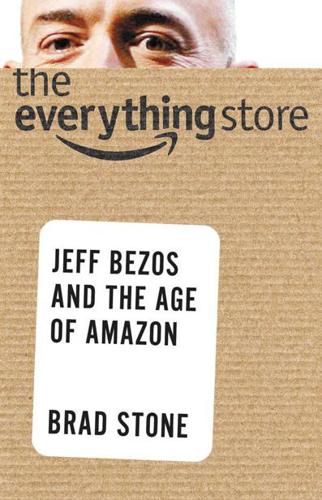
The Everything Store: Jeff Bezos and the Age of Amazon
by
Brad Stone
Published 14 Oct 2013
And he told investors the same thing he told his parents: the company had a 70 percent chance of failing. Though they could not have known it, investors were looking at the opportunity of a lifetime. This highly driven, articulate young man talked with conviction about the Internet’s potential to deliver a more convenient shopping experience than crowded big-box stores where the staff routinely ignored customers. He predicted the company’s eventual ability to personalize a version of the website for each shopper based on his or her previous purchases. And he prophesied what must have seemed like a radical future: that everyone would one day use the Internet at high speeds, not over screeching dial-up modems, and that the infinite shelf space of the Web would enable the fulfillment of the merchandiser’s dream of the everything store—a store with infinite selection.
…
To launch that category, David Risher tapped a Dartmouth alum named Chris Payne who had previously worked on Amazon’s DVD store. Like Miller, Payne had to plead with suppliers—in this case, Asian consumer-electronics companies like Sony, Toshiba, and Samsung. He quickly hit a wall. The Japanese electronics giants viewed Internet sellers like Amazon as sketchy discounters. They also had big-box stores like Best Buy and Circuit City whispering in their ears and asking them to take a pass on Amazon. There were middlemen distributors, like Ingram Electronics, but they offered a limited selection. Bezos deployed Doerr to talk to Howard Stringer at Sony America, but he got nowhere. So Payne had to turn to the secondary distributors—jobbers that exist in an unsanctioned, though not illegal, gray market.
…
But Galli was also making some important contributions. He turned category leaders like Harrison Miller and Chris Payne into general managers who had control over their own profit-and-loss statements and their costs and profit margins. He had experienced the push-and-pull of Black and Decker’s relationship with big-box stores like Home Depot, so he introduced traditional retailing concepts, like the idea of earning cooperative marketing dollars, or co-op, from suppliers in exchange for highlighting their products to customers. Covey was burning out after three years of nonstop work, and Galli helped Amazon hire a new chief financial officer, Warren Jenson from Delta.
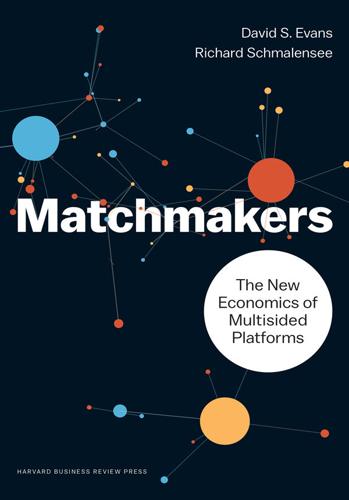
Matchmakers: The New Economics of Multisided Platforms
by
David S. Evans
and
Richard Schmalensee
Published 23 May 2016
Kohan, “Top Retail Trends of 2014-15,” August 26, 2014, http://retailnext.net/blog/top-retail-trends-2014/. Kohan goes on to say that stores are also considering “pop-up shops, vending machines and brand boutiques within their larger stores.” 11. Shan Li, “Best Buy Will Shrink Its Big-Box Stores by Sharing Space,” Seattle Times, July 9, 2011, http://www.seattletimes.com/business/best-buy-will-shrink-its-big-box-stores-by-sharing-space/. 12. From U.S. Bureau of the Census, Latest Quarterly E-commerce Report, http://www.census.gov/retail/mrts/www/data/excel/tsnotadjustedsales.xls. In using the Census e-commerce data, it is important to note that according to Census procedures, sales of all firms with distinct online operations, regardless of the firm’s main line of business, are to be reported under NAICS industry 454, Non-Store Retailers.
…
Those business practices don’t make as much sense when all a consumer wants to do at a brick-and-mortar facility is pay and pick up his merchandise as efficiently as possible. Innovation has given consumers better ways to shop since they don’t need the services that traditional retailers provide, and they can shop at big-box stores and pay lower prices. Not coincidentally, there has been a steady and substantial increase in the relative importance of warehouse clubs and other supercenters since around 2000.16 Innovation has also given retailers better ways to sell. But that doesn’t make it easy for many of them to figure out what to do.
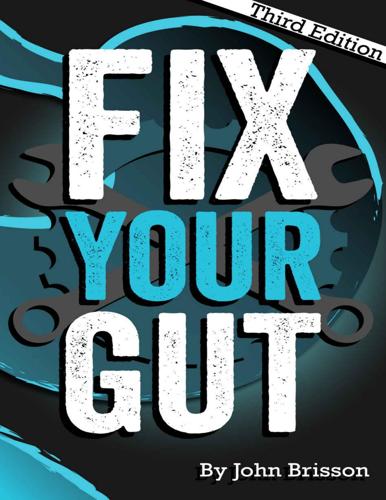
Fix Your Gut: The Definitive Guide to Digestive Disorders
by
John Brisson
Published 12 Apr 2014
Most pharmacists that work for your local compounding pharmacy have average supplement knowledge and make recommendations to improve your health. The only disadvantages of a local compounding pharmacy are that the supplements can be expensive, and the pharmacy can have limited selection depending on the size of the pharmacy. Big Box Store (Walmart, Sam’s Club, Costco, BJ's Warehouse Club) Pros: Everywhere Cons: Everything Do not buy your supplements at any big box store ever, unless they are trusted brands, and you have no other alternative to buy it elsewhere. Chapter 24 Buying your Supplements Online: Risk vs. Reward I do not order my supplements online unless necessary. Even though ordering your supplements online might be less expensive, most of the time you never know the quality of the supplement you might be receiving.
…
Food Poisoning Opportunistic / Infectious Gastrointestinal Bacteria Chapter 15 DIETS Bulletproof® Diet Elemental Diet FODMAP DIET GAPS Diet Standard Ketogenic Diet (Atkins® Diet) Low Acid Diet Low Residue Diet Paleo Diet Perfect Health Diet® Primal® Diet Semi-Elemental Diet SCD Diet Wheat Belly Diet Chapter 16 COLON CLEANSING Fiber Colon Cleansing Protocol Chapter 17 SUPPLEMENTS USED FOR DIGESTIVE AILMENTS 5-HTP Activated Charcoal Allicin-C Bioperine Chlorella Collagen Colloidal Silver Diatomaceous Earth Digestive Enzymes Fish Oil Humic Acid EDTA Lactoferrin Lauricidin Limonene L-glutamine Manuka Honey Melatonin Mitochondrial Support Supplements (Ubiquinol [CoQ10,] PQQ, and L-carnitine) NAC N-Acetylglucosamine Nu-Nefarious Ox bile Oxaloacetate R-lipoic Acid Seacure Undecylenic Acid Zeaxanthin Zinc Carnosine Chapter 18 HERBS / FOODS THAT ARE HELPFUL FOR DIGESTIVE AILMENTS Aloe Vera Astragalus Black Cumin Seed Oil Black Raspberry Powder Black Walnut Hulls Boswellia Butcher’s Broom Cardamom Carnivora Cayenne Cinnamon Chamomile Echinacea Fennel Ginger Goldenseal Horse Chestnut Licorice Marijuana Marshmallow Root Mastic Gum Olive Leaf Oregano Oil Peppermint Oil Sangre de Drago Slippery Elm Bark Swedish Bitters (Gentian) Triphala Turmeric (Curcumin) Witch Hazel Wormwood Chapter 19 ANTIBIOTIC INFORMATION GUIDE Aminoglycoside Class (Tobramycin, Neomycin, and Gentamicin) Carbapenem Class (Imipenem, Meropenem, Doripenem) Cephalosporin Class (Keflex, Rocephin) Glycopeptide Class (Vancomycin) Ketolide Class (Telithromycin) Lincosamide Class (Clindamycin) Lipopeptide Class (Daptomycin) Macrolide Class (Azithromycin, Clarithromycin) Monobactam Class Nitrofuran Class (Macrobid) Nitroimidazole Class (Flagyl) Oxazolidinone Class (Linezolid) Penicillin Class Quinolone Class (Ciprofloxacin, Moxifloxacin) Rifamycin Class (Rifampicin, Rifaximin) Sulfonamide Class (Sulfamethoxazole) Tetracycline Class Chapter 20 MEDICINE PRESCRIBED FOR DIGESTIVE AILMENTS Antacids Azathioprine 5-ASA Biological agents (Infliximab, Adalimumab) Bismuth Subsalicylate Calcium Channel Blocker Cholestyramine Colace Corticosteroids Dicycloverine (Bentyl) H2 Antagonist Laxatives Linaclotide Loperamide Lubiprostone Mebeverine Methotrexate Metoclopramide (Reglan) / Domperidone (Motilium) Misoprostol Nystatin Proton Pump Inhibitors Ondansetron Sucralfate Chapter 21 COMMON DIAGNOSTIC TESTS AND PROCEDURES FOR GASTROINTESTINAL PROBLEMS Anoscopy Barium Swallow Test Blood Tests Colonoscopy CT Scan Endoscopy Endoscopic Retrograde Cholangiopancreatography Esophageal pH Monitoring Test Esophagogastroduodenoscopy Gastric Emptying Test (Barium Meal) HIDA Scan Lower Gastrointestinal Series (Barium Enema) Manometry (Esophageal) MRI Sigmoidoscopy Sitz Marker Study Stool Test Ultrasound Upper GI Series X-ray Chapter 22 THE DIFFERENCE IN SUPPLEMENT COMPANIES Top Five Supplement Companies Niche Companies That I Trust Supplement Company Tier System (Non-Niche Companies) Chapter 23 BUYING LOCALLY: LOCAL HEALTH FOOD STORES AND CORPORATIONS Local health food store Vitamin Shoppe GNC Vitamin World Whole Foods Big Box Pharmacy Stores (CVS, Walgreens, Rite Aid) Local Compounding Pharmacy Big Box Store (Walmart, Sam’s Club, Costco, BJ's Warehouse Club) Chapter 24 BUYING YOUR SUPPLEMENTS ONLINE: RISK VS. REWARD Amazon.com PureFormulas.com Iherb.com Swansonvitamins.com eBay.com Brick and Mortar Supplement Company Websites (Vitamin Shoppe, GNC, Vitamin World) Big Box Brick and Mortar Supplement Companies Websites (Pharmacies, Walmart, Target, Warehouse Clubs) Appendix / Sources General Source Information Difference in Supplement Companies How the Digestive System Works Zinc Magnesium Increase Stomach Acid Probiotics Opportunistic / Infectious Bacteria Supplements Herbs Antibiotic and Medicine Guide Common Diagnostic Tests GERD SIBO H. pylori and Gastritis GMO Information, Posture, Clothing LES Candida albicans Constipation and Chloride Gallbladder, Liver, and Pancreas Parasites D-Limonene LERD Gastroparesis Cyclic Vomiting Syndrome Barrett’s Esophagus Esophageal Spasms Nutcracker Esophagus SIBO IBS Chronic Functional Abdominal Pain Intestinal Renewal Celiac Disease IBD Appendix Hemorrhoid Colon Cleansing Colon Cleansing Protocols Chapter 1 My Story For twenty-two years of my life, I thought natural medicine was a sham.
…
I prefer that instead of ordering from a brick and mortar supplement company online, you get your supplements from a local brick and mortar supplement company store. Support your local economy whenever possible! Big Box Brick and Mortar Supplement Companies Websites (Pharmacies, Walmart, Target, Warehouse Clubs) Pros: None Cons: Plenty Do not buy your supplements at any big box store website ever unless they are trusted brands, and you have no other alternative to buy them elsewhere. Appendix / Sources General Source Information Balch, Phyllis. Prescription for Nutritional Healing, Avery Publishing, 2010. Balch, Phyllis. Prescription for Herbal Healing, Avery Publishing, 2012.

Enshittification: Why Everything Suddenly Got Worse and What to Do About It
by
Cory Doctorow
Published 6 Oct 2025
The world of non-bookstore sales (the mass market) is dominated by a handful of big-box stores, which exercise enormous buyer power. When any part of an industry’s supply chain is captured by a monopolist, the whole supply chain has to monopolize, lest it fall victim to a powerful buyer or a powerful seller. After a supply chain has undergone this consolidation, only two groups remain, fragmented and disorganized, easy pickings for the cartels that have sewn up the industry: workers and customers. Writers have five major publishers to turn to, as do workers in the publishing industry. Readers overwhelmingly get their books from a big-box store, Amazon, or the one remaining chain.
…
Thus we see mass consolidation throughout many supply chains, creating ever-larger firms that are scaled up to fight Amazon on fairer terms. The publishing supply chain is a regrettably clear example of this phenomenon. When I started my career, New York trade publishing was composed of dozens of publishers. Today, that number is five. Publishers have gobbled one another up, first to resist the buying power of the big-box stores like Walmart and the major chains like Barnes & Noble (booksellers that grew by acquiring lots of other booksellers). Today those mergers continue in the name of resisting the power of Amazon. In 2023, the US Federal Trade Commission successfully sued to prevent one such merger, between Penguin Random House and Simon and Schuster, which would have created a conglomerate composed of so many smaller publishers that its full name would have been “Viking–Putnam–Berkeley–Avery–Ace–Avon–Grosset and Dunlap–Playboy Press–New American Library–Dutton–Jove–Dial–Warne–Ladybird–Pelican–Hamish Hamilton–TarcherPerigee–Bantam–Doubleday–Dell–Knopf–Harold Shaw–Multnomah–Pocket–Esquire–Allyn and Bacon–Quercus–Fearon–Janus–Random House–Simon and Schuster.”3 Penguin Random House is by far the largest of the Big Five publishers, dwarfing the rest by orders of magnitude.
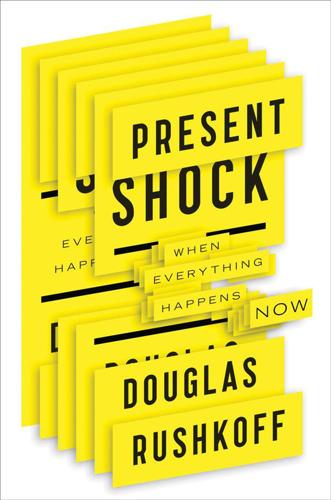
Present Shock: When Everything Happens Now
by
Douglas Rushkoff
Published 21 Mar 2013
Knowing they are being judged in advance and eager to get a jump on their competitors, retailers edge toward increasingly earlier opening times. While the earliest Black Friday sales used to begin Friday morning at 9 a.m., by the early 2000s they had moved up to 6 a.m. or even 5 a.m. Customers lined up in the cold outside their favorite big-box stores on Thursday night, and local news shows showed up to cover the spectacle. By 2011 some of the most aggressive stores, such as Target, Best Buy, and Macy’s, decided that they would push the envelope even further and start Black Friday at midnight. Walmart rolled Black Friday all the way back to Thursday evening at 10 p.m.
…
Others felt the expanded hours just lengthened the shopping day beyond their endurance levels. Some even seemed aware of their complicity in overworking store clerks, and of how the fun of Black Friday had turned into more work for everyone. Employees complained, too, and those at some of the big-box stores were fired for refusing to come in for the overnight Thanksgiving shift. Memories of late-nineteenth-century union fights over workers’ hours were retrieved by the press: “Even though it’s a desperate time doesn’t mean that we should trade all that ground that our fathers and our grandfathers, everyone that came before us, fought really hard for,” a Target worker told the New York Times.18 JCPenney, in a nod to these sentiments, kept their opening time at a respectable 4 a.m., because “we wanted to give our associates Thanksgiving Day to spend with their families.”19 The extreme overwind has pushed many shoppers and workers over the edge, and even threatened the Christmas shopping season as a whole.
…
Starting the Christmas season the day after Thanksgiving was already at the very boundary of spring-loading; pushing into Thanksgiving itself was an overwind. It broke through the patina of holiday spirit, masking this otherwise crude effort to get people to go further into credit card debt by encouraging them to purchase more electronics and other goods manufactured in Chinese plants and sold in big-box stores that kill local business. All this, we must remember, on borrowed money and borrowed time. No wonder our consumer economy went into present shock. In the process, many consumers and workers alike came to realize the artificiality of the whole affair and simply turned away. Anticonsumerist Adbusters magazine’s “Buy Nothing Day” had already morphed into the lifelong commitment to Occupy Wall Street.
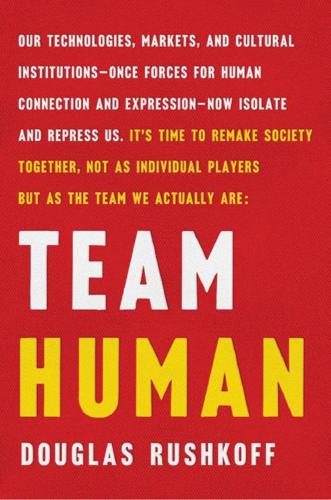
Team Human
by
Douglas Rushkoff
Published 22 Jan 2019
Once those people and places started to push back, digital technology came to the rescue, providing virtual territory for capital’s expansion. Unfortunately, while the internet can scale almost infinitely, the human time and attention that create the real value are limited. Digital companies work the same way as their extractive forebears. When a big box store moves to a new neighborhood, it undercuts local businesses and eventually becomes the sole retailer and employer in the region. With its local monopoly, it can then raise prices while lowering wages, reduce labor to part-time status, and externalize the costs of healthcare and food stamps to the government.
…
The bookselling website doesn’t care if authors or publishers make a sustainable income; it uses its sole buyer or “monopsony” power to force both sides to accept less money for their labor. The initial monopoly can then expand to other industries, like retail, movies, or cloud services. Such businesses end up destroying the marketplaces on which they initially depend. When the big box store does this, it simply closes one location and starts the process again in another. When a digital business does this, it pivots or expands from its original market to the next—say, from books to toys to all of retail, or from ride-sharing to restaurant delivery to autonomous vehicles—increasing the value of its real product, the stock shares, along the way.

Futureproof: 9 Rules for Humans in the Age of Automation
by
Kevin Roose
Published 9 Mar 2021
But it makes those kinds of businesses more fragile, and easier to compete with. And it gives the competitive edge to the businesses that sell experiences, which can’t be copied or programmed into a machine nearly as easily. Several years ago, Best Buy learned this lesson out of necessity. Like lots of other big-box stores, Best Buy was struggling to keep up with Amazon and other online retailers. Sales of big-ticket items like TVs were falling, and many of the products that once lured customers into stores, like new-release CDs and DVDs, were becoming obsolete. When customers did come into stores, they were increasingly “showrooming”—that is, looking at an item, then going online to buy it for a lower price elsewhere.
…
The company invested in more training for store associates, and started an In-Home Advisor program that allowed customers to get personal consultations from trained Best Buy experts, who would come to their house to help them choose the right big-screen TV for their living room, or figure out which stereo system would sound best on their patio. The program, which launched in 2017, was an immediate hit, and created a core group of hyper-loyal customers who began treating Best Buy as a kind of personal tech concierge, rather than just a big-box store. “The business we’re in is not simply selling products—it’s connecting human needs with technology solutions,” Joly told me. “So, our focus is on these human needs.” Joly’s humanist strategy brought Best Buy back to life. Sales skyrocketed, customers stopped showrooming, and within a few years, the company’s stock price was at an all-time high, with happy workers and satisfied shareholders.
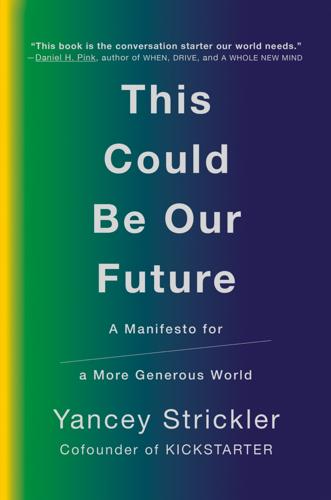
This Could Be Our Future: A Manifesto for a More Generous World
by
Yancey Strickler
Published 29 Oct 2019
But there was a problem with this feel-good story. The downtowns of the towns and cities that these shopping centers surrounded began to die. From 1954 to 1977, the percentage of retail in American city centers dropped by 77 percent. Many downtowns never recovered. And then Walmart, Target, and other big-box stores came along. Because of their scale, big-box stores are able to offer lower prices and a wider selection than local, smaller stores. Consumers notice. Studies have found that new Walmart stores derive 84 percent of their sales by taking them away from existing local businesses. Another study found that the expansion of three thousand Walmart stores caused the closure of twelve thousand other stores.

The Unwinding: An Inner History of the New America
by
George Packer
Published 4 Mar 2014
Most people still worked—it was rare to find employable locals on disability—and the crack and meth scourge hadn’t yet made it to Rockingham County. In the center of Madison, McFall Drug was still open with its lunch counter, alongside a men’s clothing store, two furniture shops, a shoe store, and a couple of banks. Kmart had brought the first big-box store to the area back in the 1980s, but there was not yet a single Wal-Mart in Rockingham County. Still, most people knew that large forces were bearing down and the area might be left behind. Dean always said that ambition wasn’t in the DNA down here, but those who had a little and were still young didn’t stay around.
…
Brandon’s main street was West Brandon Boulevard, or U.S. 60, and in the half mile between stoplights, the shops passed by in an uninterrupted blur: Einstein Bros Bagels Florida Car Wash State Farm Dairy Queen Express Lube Jesse’s Steaks McDonald’s Five Star Paint Ball Aquarium Center Sunshine State Federal Credit Union Mister Car Wash Weavers Tire + Automotive Wendy’s. The growth machine became the employment agency. Other than minimum wage jobs at restaurants and big-box stores, it was hard to find work outside the real estate industry. In the hierarchy of the boom years, the poor were Mexican day laborers on construction sites; the working class had jobs in the building trades; the lower middle class were bank tellers; the middle class were real estate agents, title insurance agents, and civil engineers; the upper middle class were land use attorneys and architects; and the rich were developers.
…
Around the farms and small towns of Southside, the aide found signs of life in renewable energy: a dairy farm outside Danville that was making electricity out of manure; a nursery just across the road where a former Goodyear engineer was testing crops for energy yield; a landfill in Martinsville where officials wanted to turn methane gas into electrical power. No one had told these people to do any of it, and they were just the kinds of businesses that Perriello wanted to highlight, tangible examples of a new economy in the Piedmont that didn’t look like the past. Instead of enormous factories and big-box stores that sucked the wealth out of a community before abandoning it, these were small-scale projects that created five or ten jobs at a time and kept the money local. Eventually, Perriello found out about Red Birch Energy. * * * Dean had worked up a pitch, a PowerPoint slide presentation, and he was taking it to any audience that would listen.
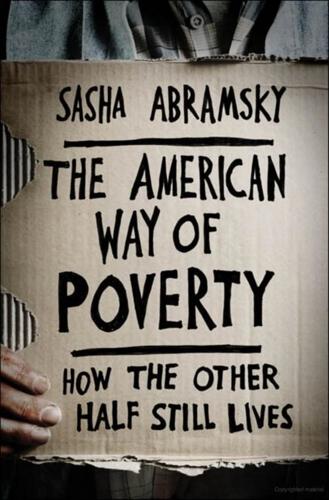
The American Way of Poverty: How the Other Half Still Lives
by
Sasha Abramsky
Published 15 Mar 2013
The lucky ones might snag a job at Parchman Prison, a huge penal complex in the nearby countryside that housed 3,000 inmates; or they might drive further afield, to the casinos one and a half hours north of town—where locals worked nonunionized jobs, with few benefits, at near-minimum wage. Most, however, stayed closer to home. And, said Blockett, they either remained jobless, or they ended up with dead-end work at fast food chains and big box stores. “[They work at] McDonald’s and Wendy’s and Walmart and Kroger. Some Dollar Generals. Different things like that.” HURRICANES, TORNADOES, AND SOME AWFULLY BIG BILLS Were he to return to life, Michael Harrington wouldn’t be pleased that modern-day poverty in a place like Mississippi, or in the Appalachian towns studied by Jim Ziliak, or in the urban community of North Philadelphia, still survived; but, nevertheless, as a student of the history of poverty he would understand it.
…
Believe that, dear readers, and you can find me after you’ve finished this book for a discussion about a bridge that I want to sell you in Brooklyn. The lesson from Chicago: Large corporations do respond to public protests about working conditions. But for such an intervention in the labor market as a living wage law aimed at big box stores to really work, it would have to be done at least at the state level, and ideally at the federal one. In this context, bigger is indisputably better: The larger the area covered by the law, the harder it is for companies simply to up the stakes and move their business elsewhere in response. How would consumers be impacted by these laws?
…
Partly, we fund such programs through paring other areas of the budget—for example, limiting defense spending increases and restricting the percentage of healthcare dollars that can be used to feather the nests of insurance company executives. And by asking consumers to pay marginally more—for goods bought at big box stores and fast food restaurants, for example—so as to provide mechanisms to boost the wages of the working poor. And partly, through designing them well, we make sure that these programs help fund themselves: Increasing the EITC, for example, by providing low-income families more money to spend on nutritional food and on preventive healthcare, reduces the medical costs associated with large numbers of low-weight and premature babies.
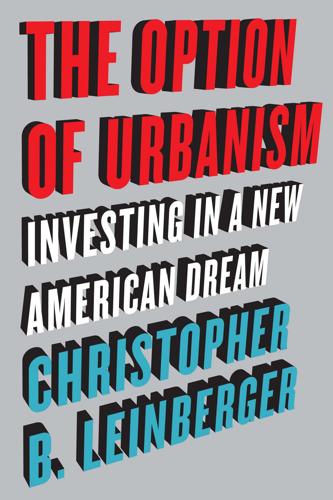
The Option of Urbanism: Investing in a New American Dream
by
Christopher B. Leinberger
Published 15 Nov 2008
Somewhere in between driver and follower products are those that must have some demand in place before they open, and the developers and tenants are confident the market will fill in quickly. Those in-between products include regional-serving office and industrial development, bigbox power centers (clusters of big-box stores), regional malls, and hotels. I have found that the drawing radius of these products in a drivable suburban environment tends to be three to seven miles (one to three miles in a walkable urban environment). As the initial limited-access highways were being built, it was housing that led the way to the suburbs.
…
The high-density mixed-use office and housing over retail, such as West Village, will emerge as a conforming, standard product type. There is the “bury-the-box” mixed-use product type, which puts a big-box retailer in the center of a block surrounded with “liner” buildings. These liner buildings have retail on the ground floor and office or housing on the upper floors. The big-box store, movie 110 | THE OPTION OF URBANISM FIGURE 5.5. West Village was one of the pioneering mixed-use lifestyle retail centers with housing on the upper three floors when it opened in 2003. The structured parking is buried behind the buildings with only a small amount of teaser parking on the streets.
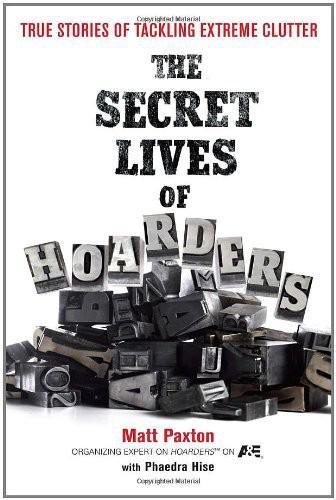
The Secret Lives of Hoarders: True Stories of Tackling Extreme Clutter
by
Matt Paxton
and
Phaedra Hise
Published 3 May 2011
If it’s not in the house, hoarders worry that they can’t locate what they need instantly. Surprisingly, information hoarders can usually find what they’re looking for—or at least know where it is in the piles, though it may be buried three feet deep. ▶ The Shopaholic Marcie’s house was packed floor to ceiling with unopened plastic bags of items from discount and big-box stores. This stout, gray-haired grandmother who dressed in flowery polyester pantsuits loved to shop. Her hoarding had progressed to the point where she’d go shopping to replace things she couldn’t find in her mess, but then she would also buy extra stuff while she was at it. For years, Marcie would come home from her latest spree, put her shopping bags down on the nearest pile, and then never look at them again.
…
Kurt liked nothing better than to deck himself out in a suit, gold chains, and watch; spritz on a little cologne; style his toupee—and go shopping. He felt important and totally in control. Kurt admitted that he knew he was getting himself into debt and worsening his hoarding, but the act of shopping made him feel so good that he justified it to himself. On any given day he’d head off to his favorite big-box store, and he might tell himself that he’d just see what the sales were but wouldn’t actually buy anything. But then he would come home with hundreds of dollars’ worth of items. One could imagine his rationalization: “I know I shouldn’t do this; my credit card is maxed out. But this jacket fits me perfectly and it’s such a bargain.
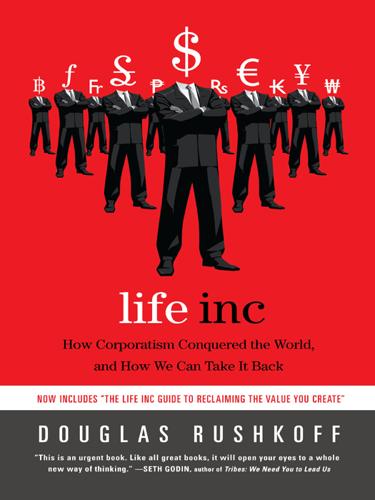
Life Inc.: How the World Became a Corporation and How to Take It Back
by
Douglas Rushkoff
Published 1 Jun 2009
The downtown area he’s located in has been slated for redevelopment, and only corporate chain stores appear to have deep enough pockets to pay for storefront leases. It sounded like a good idea when Marcus supported it at the public hearing—but the description in the pamphlet prepared by the real-estate developer (complete with a section on how to compete more effectively with “big box” stores like Wal-Mart) hasn’t conformed to reality. Marcus’s landlord doesn’t really have any choice in the matter. He underwent costly renovations to conform to the new downtown building code, and needs to pass those on to the businesses renting from him. He took out a mortgage, too, which is slated to reset in just a couple of months.
…
While Dunning first conceived Birkdale as a real residential community with a few small shops, its financiers required a level of funding that only big anchor stores could provide. The ratio was gradually tilted in favor of commercial space, making the remaining residences less a functional town than an ornamental addition. (“Look, honey,” a shopper says to her husband as she notices the apartments over Victoria’s Secret, “people live here!”) The big box stores demanded the big parking lots, visibility from the “major arteries,” and the humongous signage already familiar to the automotive American consumer. Where Jacobs had always advocated building towns around the needs of people instead of the needs of cars, Birkdale was being constructed at the intersection of NC-73 and I-77, a ribbon of highway that is Birkdale’s natural environment, forcing many concessions by this walking town to the primacy of the automobile.
…
While Parker made some great TV commercials, they weren’t enough to put better clothes on the racks, and under pressure, Pressler resigned in 2007. The company is now struggling to stay alive. Other companies seek to remain competitive by dismantling the private sector’s social safety net—pensions, benefits, and the steady salary increases won by long-time employees. In 2007, Circuit City came under pressure from big box stores such as Wal-Mart and Best Buy, whose young employees earned less than its own. The company decided to dismiss 3,400 people, about 8 percent of its workforce. They weren’t doing a bad job, nor were the positions being eliminated entirely. It’s just that the workers had been employed for too long and as a result were being paid too much—between ten and twenty dollars per hour, or just around the median of American workers.
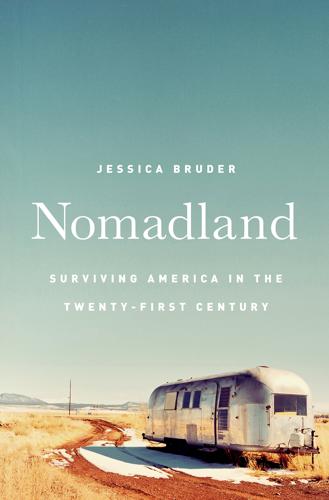
Nomadland: Surviving America in the Twenty-First Century
by
Jessica Bruder
Published 18 Sep 2017
Some will journey clear across the continent. All will count the miles, which unspool like a filmstrip of America. Fast-food joints and shopping malls. Fields dormant under frost. Auto dealerships, megachurches, and all-night diners. Featureless plains. Feedlots, dead factories, subdivisions, and big-box stores. Snowcapped peaks. The roadside reels past, through the day and into darkness, until fatigue sets in. Bleary-eyed, they find places to pull off the road and rest. In Walmart parking lots. On quiet suburban streets. At truck stops, amid the lullaby of idling engines. Then in the early morning hours—before anyone notices—they’re back on the highway.
…
(At this wage, even if Linda convinced her employer to give her full-time, forty-hour weeks all year long—and didn’t take any vacations—her annual salary would amount to $17,680, with no benefits.) Linda was only a half day’s drive from the Home Depot in Lake Elsinore where she’d been a cashier, but the wilderness felt utterly remote. This new camp hosting job was the antithesis of running a checkout line under the sallow lights of a big-box store. It felt nothing like her gigs at restaurants, construction sites, casinos, or corporate offices, all the other places where she’d traded time for money. Best of all, she’d be getting paid while living rent-free. Though the campsite lacked utility hookups, her supervisor lent her a generator and dispatched a water truck each Tuesday to fill the fifty-five-gallon tank on her RV.
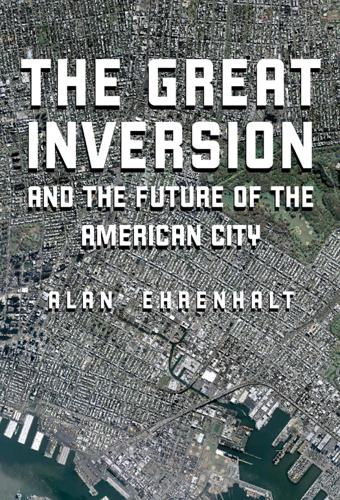
The Great Inversion and the Future of the American City
by
Alan Ehrenhalt
Published 23 Apr 2012
The commercial middle of Cleveland Heights can be a bit of a shock to those who haven’t seen it before. Where one might be expecting a 1920s main thoroughfare of heavy car and foot traffic, shops, and restaurants, there is an immense sea of asphalt parking lot and a sprawling mall filled with big-box stores: Walmart, Home Depot, Best Buy. It is called Severance Town Center, and it includes the Cleveland Heights City Hall on its outside edge, but it is not a community center in any meaningful suburban sense. It is difficult even to get from one end of the project to the other without driving. To anyone who believes in the virtues of human-scale commercial life, Severance Town Center is a hideous eyesore.
…
Walking from the station to the Walmart is not only a difficult experience, it is barely a feasible one. CityCenter Englewood is essentially a small, pleasant enclave masking oceans of asphalt. Perhaps the most remarkable thing about the project is that a few blocks beyond all of it, beyond the town green and the town hall, the power center with the big-box stores, there is an old, slightly seedy, but interesting prewar downtown, with locally owned businesses still open. Unless you are driving, you have to take a shuttle bus from the front entrance of the town hall even to discover that it is there. Instead of sprucing up the historic center that already existed, the town planners and developers razed the development of the 1960s and built on top of that.

The People's Platform: Taking Back Power and Culture in the Digital Age
by
Astra Taylor
Published 4 Mar 2014
Cosmetology is “more psychologically rewarding, creative work,” he explains.28 It’s tempting to dismiss such a broad definition of creativity as out of touch, but Florida’s declarations illuminate an important trend and one that helped set the terms for the ascension of amateurism. It is not that creative work has suddenly become abundant, as Florida would have us believe; we have not all become Mozarts on the floor of some big-box store, Frida Kahlos at the hair salon. Rather, the point is that the psychology of creativity has become increasingly useful to the economy. The disposition of the artist is ever more in demand. The ethos of the autonomous creator has been repurposed to serve as a seductive facade for a capricious system and adopted as an identity by those who are trying to make their way within it.
…
What do we lose if we let the middle go missing, if the creative sphere splits in two, a few megahits orbited by trillions of megaflops? The topology of our cultural landscape has long been twisted by an ever-shrinking number of corporations. Powerful entertainment companies have bought up their competitors, consolidating into a handful of colossi, much the way big-box stores have decimated mom-and-pop shops, paving America over with brand-name sameness and dictating social and economic terms to our society. For years we have understood that this dynamic is detrimental and citizens have pushed back. What is the effect of the expanding corporate goliaths and super-celebrities online?
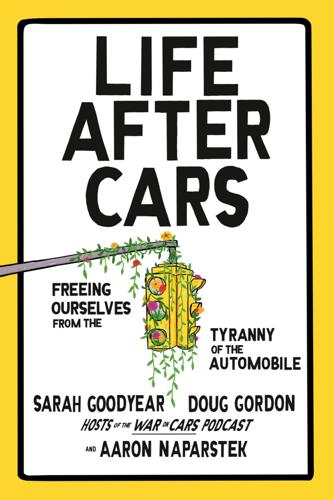
Life After Cars: Freeing Ourselves From the Tyranny of the Automobile
by
Sarah Goodyear
,
Doug Gordon
and
Aaron Naparstek
Published 21 Oct 2025
Bauters and his allies on the city council and city staff were committed to pushing through better bike and pedestrian facilities. The city had been changing and growing for the past couple of decades, with Pixar and major biotech employers setting up shop since the early aughts, new condo developments, and big-box stores. And while Bauters and his colleagues did encounter opposition to their plans to create a comprehensive bike lane network around the city, they also gathered strong and robust support for the changes. Now, elected officials from around the country come to Emeryville to ask him how he got it done.
…
Sit in a park, close your eyes, and start to listen—chances are your ears will never be free of the sound of passing cars not far away. Look at the car storage along the curb on your street and imagine what that space could be used for if those gigantic hunks of metal weren’t there. (And start calling it car storage, not parking. Speaking is its own form of seeing.) Leave your car at the edge of the lot at the big-box store, walk across the asphalt, and ask yourself whether this can be considered a place worth being in, and if this is the best use of our precious land. Once you see the true nature of cars, you won’t be able to unsee it. Engage with local government. Go to those planning meetings about the new bike lane or the highway widening or the street redesign, if you can get there.
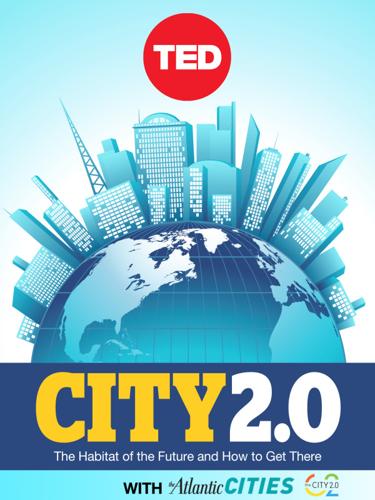
City 2.0: The Habitat of the Future and How to Get There
by
Ted Books
Published 20 Feb 2013
Steinberg had helped develop Philadelphia’s first cohesive plan for revitalizing the city’s postindustrial waterfront, and I listened excitedly as he explained how those piers overgrown with shrubs and thin trees would soon become parks reconnecting citizens to this oft-ignored waterway and how a suburban-style collection of big-box stores, including the country’s only waterfront Wal-Mart, would be reimagined as a pedestrian-oriented neighborhood with new housing. Bike paths would line the river, and Philadelphia’s historic street grid, like outstretched arms, would extend all the way to the water as it once had. Interstate 95 slices along the Philadelphia shoreline, dividing the Delaware River from downtown.

30 Days to a Clean and Organized House
by
Katie Berry
Published 13 May 2014
Add 1 teaspoon of Ivory or Dawn Original dish soap and 20-30 drops of your favorite essential oil (optional). Discard unused solution after cleaning. Bathroom Disinfectant Spray This spray relies on borax and washing soda, which is different than baking soda. You can find borax and washing soda in the laundry aisle of most big-box stores like Wal-Mart and Target. Both amplify the disinfecting power of white vinegar while helping the solution cling to surfaces a bit longer. For added disinfecting power, use tea tree or lavender essential oil. Ingredients: 1 tsp Borax 1 tsp of washing soda 2 cups hot water 1/2 cup white vinegar 10-15 drops of essential oils Directions: 1.
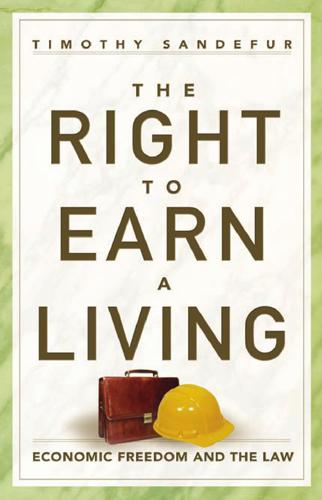
The Right to Earn a Living: Economic Freedom and the Law
by
Timothy Sandefur
Published 16 Aug 2010
For example, an ordinance designed to prevent a Wal-Mart Supercenter from opening in Los Angeles was recently estimated to cost neighborhood families an average of $482 per year because the cheaper groceries that the store would have provided were kept out of the market.85 Unfortunately, two recent cases from California illustrate the way courts turn a blind eye on laws that injure consumers for the benefit of private industries. In 2004, the city of Turlock adopted an ordinance relegating “big-box” stores like Wal-Mart to a specified area of the city and prohibiting them anywhere else. City officials were quite explicit in their protectionist motive: the ordinance declared that a Wal-Mart would “negatively impact the vitality and economic viability of the city’s neighborhood commercial centers by drawing sales away from traditional supermarkets located in these centers”86—in other words, it would be cheaper than “traditional” supermarkets, and customers would want to shop there.
…
Merrifield v. Lockyer, 547 F.3d 978, 991 (9th Cir. 2008). 79. Ibid. 80. Ibid. at 991, n. 15. 81. “Wal-Mart 2007 Annual Report,” Wal-Mart Stores, Inc., Bentonville, AR, http:// walmartstores.com/Media/Investors/2007_annual_report.pdf. 82. Richard Vedder and Wendell Cox, The Wal-Mart Revolution: How Big-Box Stores Benefit Consumers, Workers, and the Economy (Washington: AEI Press, 2006). 83. Eric R. Claeys, “Euclid Lives? The Uneasy Legacy of Progressivism in Zoning,” Fordham Law Review 73 (2004): 731–70. 84. Anthony B. Sanders, “The ‘New Judicial Federalism’ before Its Time: A Comprehensive Review of Economic Substantive Due Process under State Constitutional Law since 1940 and the Reasons for Its Recent Decline,” American University Law Review 55 (2005): 457–540. 85.
…
Timothy Sandefur, “Plunder Gets a Boost,” The Freeman 50, no. 2 (February 2000): 25–26. 336 Notes for Pages 200–204 49. Robert Scally, “Calif. Retailers Defeat Big Box Legislation,” Discount Store News, October 4, 1999, p. 1, http://findarticles.com/p/articles/mi_m3092/is_19_38/ai_ 56229578; and James Burger, “Big-Box Stores Urge Veto of California Legislation,” Bakersfield Californian, September 16, 1999. 50. Redish and Wasserman, “What’s Good for General Motors,” 296. See also Martin Redish, “First Amendment Theory and the Demise of the Commercial Speech Distinction: The Case of the Smoking Controversy,” Northern Kentucky Law Review 24 (1997): 583.
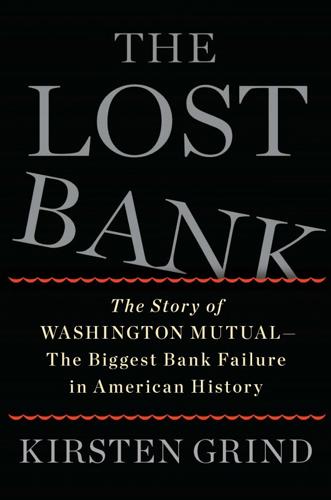
The Lost Bank: The Story of Washington Mutual-The Biggest Bank Failure in American History
by
Kirsten Grind
Published 11 Jun 2012
WaMu’s board was a mix of longtime Seattle business leaders (“local yokels,” noted one critic) and executives from across the country with little hands-on banking experience. This scenario was not unusual. Corporate boards are frequently made up of well-known executives who don’t have extensive knowledge of the industry they oversee. In theory, this setup provides a company with access to expertise that transcends all industries. A board member of a growing big-box store, for example, might have no experience ordering crates of diapers and cranberry juice, but he might be skilled at acquisitions. Only one of WaMu’s board members had true banking experience: Mary Pugh, the chair of the finance committee. Pugh was one of Pepper’s hires in the 1980s, a young Yale graduate who had been tasked with figuring out the new, complicated developments in the banking industry.
…
The FDIC was spending time and money preparing for the failure of a giant U.S. bank, even though it had been a record two and a half years since any bank in the country had failed. “But who’s counting?” Bair joked at the time. She had spent much of her first year at the helm of an agency that oversaw some 8,500 banks dealing not with banks at all but with a big-box store that wanted to become a bank. Wal-Mart had filed what’s known as an “industrial loan company” application, which would allow it to offer limited bank services. The application was controversial.3 Wal-Mart claimed it was just trying to cut the costs of processing customers’ checks, but banks and credit unions were sure the company was trying to find a way to run its own commercial bank.4 Bair solved this problem in an unusual fashion—by doing nothing at all.
…
Bair describes the bounty: a polka-dot snail, a fruit hat, and a big mustache! (The last purchase nicely rhymes with “cash.”) Brock, as you might guess, saves hundreds of dollars, while Rock ends up with no money at all. Other regulators, bankers, and industry watchers, however, viewed Bair as out of her league. Some saw the whole big-box-store-trying-to-become-a-bank episode as her first major “gaffe.” “I thought the job of banking regulators was to regulate,” quipped Tom Brown, the Bankstocks.com hedge fund manager. Said one of her harshest critics, bank consultant Burt Ely, “Quite frankly, I wish she would spend more time doing her job of running the FDIC.

Designing for Emotion
by
Aarron Walter
Published 4 Oct 2011
In the present day, we can see a few parallels. In a quest for higher crop yields and lower production costs, farms have become headless corporations pitting profits against human welfare. But local farmers are finding new markets as consumers search for food produced by people for people. While big-box stores proliferate disposable mass-market goods, websites like Etsy and Kickstarter are empowering artists, craftspeople, and DIY inventors who sell goods they’ve designed and created. And their customers love the experience. When you buy from an independent craftsman, you support creative thinking and families (not corporations), and you gain the opportunity to live with an object that has a story.

Home Building Secrets: Save Thousands Building Your Next Home: For the first time homeowner or the second time homeower who did not learn from their first mistakes
by
Ronald Jones
Published 22 Dec 2015
He meets you at the sight, breaking the news that he has installed the $5000.00 worth of landscaping. Now, you are no dummy and know the price of sod, shrubs, and bedding material. You ask for an itemized accounting. The contractor e-mails you the statement: $1000.00 for tractor grading work; $1000.00 for fill dirt; $1000.00 for shrubs that you could buy at the big box store for $300.00; $2000.00 for sod. Communication and clarity is the key to avoiding this type of situation. Do not settle for vague specifications. I have read contracts that stated, “Sod front yard.” One would assume that would mean the front yard would be sodded, yet the contractor sodded from corner to corner of the house to the front lot line, not to the street.
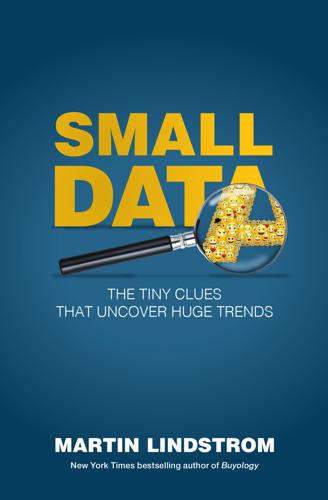
Small Data: The Tiny Clues That Uncover Huge Trends
by
Martin Lindstrom
Published 23 Feb 2016
In a country with the world’s highest incarceration rate, that spends around $640 billion a year on its military,3 which is more than the next seven countries combined, and where 37 percent of all Americans say that they, or someone in their household, owns a gun,4 I couldn’t help but find this paradoxical. America is a military superpower whose prevailing design aesthetic does everything it can to muffle, discourage and eradicate any trace of conflict. Most American malls, motels, hotels, big-box stores and fast-food chains are climate-controlled, mood-controlled, secure, antiseptic and completely the same. Sharpness and angularity have been smoothed out. Whether you’re entering the lobby of a Holiday Inn or sitting down at a table at Chili’s, guests can be assured they are in for no surprises at all.
…
In both countries, men escape. In Russia, men disappear on fishing boats weighed down with cases of vodka. In American, men go golfing. In an era of pervasive solipsism, where we hear the continuous refrain that technology has unified the world as never before, community in America was vanishing, eroded by big-box stores, a homogenous landscape and the Internet. The American women I met were kind, generous people, but they seemed as isolated as the women I’d met in Russia. They spent most of their time inside their cars. They traveled in lockstep to malls and shopping centers whose density falsely replicated that of cities.
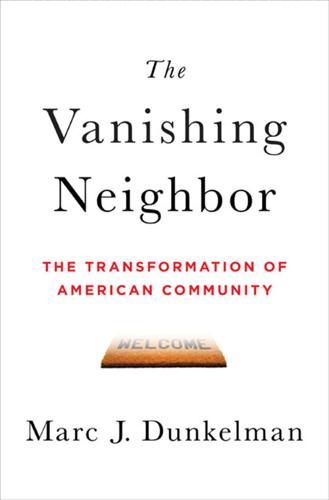
The Vanishing Neighbor: The Transformation of American Community
by
Marc J. Dunkelman
Published 3 Aug 2014
As cars allowed Americans to migrate out into the “crabgrass frontier,” a term Columbia historian Kenneth Jackson once used to describe the new bedroom communities popping up outside city centers, the shopping patterns that had defined my mother’s childhood disappeared.8 New neighborhoods began to boast Main Streets of their own, obviating the need for residents to go downtown. In the decades that followed, outdoor shopping strips, enclosed malls, and big-box stores emerged as the nation’s primary retail outlets.9 The newer venues offered consumers the opportunity to shop without having to sort through racks geared for other demographics—it cut down the hassle of searching for a new outfit. Years later Chris Rock would joke that in every town in America there are two malls: “they’ve got the white mall, and the mall where the white people used to go.”10 To an uncomfortable degree, Rock got it right.
…
Amid all the changes wrought by the last several decades, have the sorts of gangs that Gordie, Chris, Teddy, and Vern joined become relics of the past? Admittedly, friendships are still forged among adolescent boys. But the landscape has inarguably changed. Today, just as we’re less likely to shop along the local strip because we can order what we want online or travel to the mall or a big-box store that caters specifically to our demographic, we’re less likely to befriend the kid sitting in the seat next to us because we can text our closest pals. We’re less likely bump into a neighbor on the street because, in the growing suburbs, we tend to drive everywhere we go. A comic-book aficionado who loves Batman doesn’t need to befriend the Superman fanatic down the street, because there’s a whole world of Batman-lovers is just waiting to kibitz with her at the other end of a broadband connection.
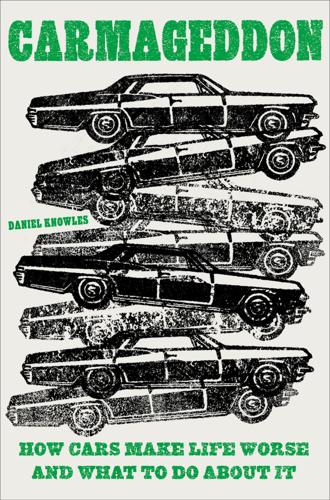
Carmageddon: How Cars Make Life Worse and What to Do About It
by
Daniel Knowles
Published 27 Mar 2023
But they also were built by demolishing lots of homes much like the one I currently live in—the Eisenhower led to 13,000 families being relocated—and now they run like a scar through the city. If you are on foot or on a bicycle, when you cross over or under them you go through whole blocks of what is essentially wasteland—half-used parking lots, derelict buildings, and a lot of awful big-box stores surrounded by acres of tarmac. Just a fifteen-minute walk from some of the most expensive real estate in Chicago, it can feel like an outer suburb. If you travel by car, you will probably miss the colossal waste of space, but if you walk or cycle around, it is impossible to ignore. When the freeways were built, West Town, the neighborhood Wicker Park is a part of, fell into decline.
…
That is, it is designed for cars to move fast (to get somewhere, along the road), but it also has businesses, homes, and the like all along it (like a street). Stroads are essentially highways within cities. If you have driven anywhere on the edge of a big American city, you know what they look like: six or eight lanes of traffic, lined by fast-food joints, big-box stores, and gas stations, all with plentiful parking. And stroads are insanely dangerous. As Speck notes, when you think about it, what makes highways safe is precisely that pedestrians and cyclists cannot use them; exits and entrances are rare, and everyone is going in the same direction. That is incompatible with city driving.

The Rise and Fall of American Growth: The U.S. Standard of Living Since the Civil War (The Princeton Economic History of the Western World)
by
Robert J. Gordon
Published 12 Jan 2016
The final evolution of postwar retailing of food involved a bifurcation between small convenience stores that challenged the supermarkets for size, quick check-out, and convenience, and the evolution of the Target, Costco, and Walmart supercenters, which combine under one roof shopping not just for food, but also for clothing, appliances, drugs, and almost everything else. Now shoppers could avoid the supermarkets altogether, using nearby convenience stores and large chain drugstores for small purchases of staples, together with the big-box stores for major shopping trips. Among the early victims of the large variety of items available at the big-box stores were the lower-priced department stores and the chains of small variety stores such as Woolworth’s and Ben Franklin. The controversy about the growth of Walmart is similar to the traditional economic classroom analysis of free trade. Imports benefit consumers with lower prices, and free trade benefits owners and workers of firms selling exports.
…
This tax deduction, which grows with the size and expense of a home, has been called “the mansion subsidy” and is widely interpreted as a major cause, together with zoning laws, of the much larger house sizes in the United States than in Japan or Europe.64 The suburban sprawl in the United States compared to that in Europe has advantages in productivity that help to explain why the core western European countries never caught up to the U.S. productivity level and have been falling behind since 1995. Careful research studies of the sources of the European productivity advantage focus on the retail and wholesale trade sectors.65 The ease in the United States of building highly efficient “big-box” stores near suburban interstate highway junctions raises productivity through economies of scale and the ease of segregating truck traffic from customer entrances. One only need drive through central Milan or Rome to be impressed with the small sizes of the shops and to gaze in amazement as several men carry a single mattress out of a tiny shop for delivery in a small truck to a customer who may live in a walk-up fourth-story apartment.
…
The postwar era involved mainly a transition in styles, both at home and at work, toward a more casual and less expensive wardrobe. Retail options blossomed as Walmart and Target allowed customers to browse through large selections of clothing at rock-bottom prices, and the arrival of inexpensive imported clothing at these and other big-box stores contributed to a sharp decline in the relative price of clothing. The rise of the big-box chains had negative consequences, including the decimation of central-city department stores and the flood of imports that virtually eliminated textile and clothing manufacture as a part of the American economy.
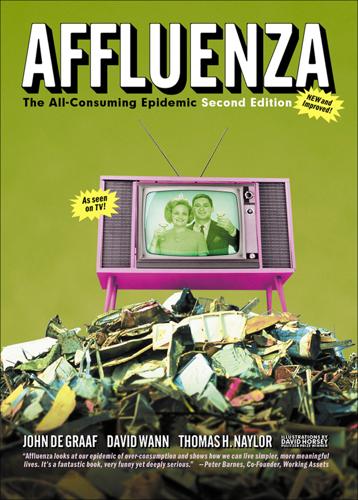
Affluenza: The All-Consuming Epidemic
by
John de Graaf
,
David Wann
,
Thomas H Naylor
and
David Horsey
Published 1 Jan 2001
“I bought a lot more than I planned to,” another woman admitted. “You just see so much.” Yes, you do, and that’s the idea. It’s why big malls sell much more per square foot than do their smaller counterparts. Seeing so much leads to impulse buying, the key to mall profitability and to the success of big-box stores like Wal-Mart. Impulse: a devilish little snake that cajoles first, then bites later when the credit card bill comes due. Only a quarter of mall shoppers come with a specific product in mind. The rest come just to shop. “What else matters?” asked one of the ladies from Dallas, only half in jest.
…
Thomas even wants the quarantine to begin around his state, Vermont. He’s been leading a campaign called the Second Vermont Republic, which actually calls for that state to secede from the United States, to protect its unique quality of life. Vermont may be less infected by affluenza than any other state. It’s almost Wal-Mart-free, and few other big-box stores or tacky mini-malls mar its quiet beauty. Vermont towns still have the feel of permanence and livability; citizens still participate regularly in public forums; everybody in the state has a guaranteed right to health insurance. Shopping locally and buying wholesome food is encouraged. Many Vermonters, like Thomas, who moved there because of Vermont’s quality of life, want to prevent their good life from being overtaken by affluenza.
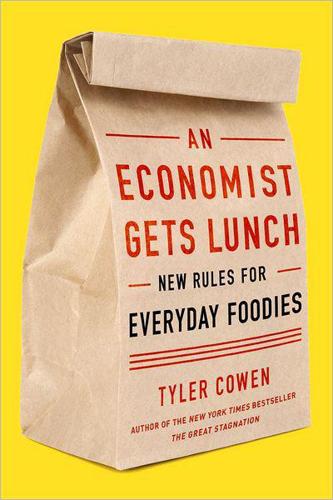
An Economist Gets Lunch: New Rules for Everyday Foodies
by
Tyler Cowen
Published 11 Apr 2012
They’re not mostly looking to date or pay for fancy, frilly, or “cool” locations. If I am in a hitherto unknown part of the United States, the region has immigrants, and I am looking to eat, I head away from the center of town. I look for the strip malls. The best strip malls, for food, are usually those without Wal-Mart, Best Buy, or other big-box stores. Large anchor stores bring high rents and large crowds, which are typically not the right combination for interesting ethnic food. The ultimate low-rent venue is the food truck. New York City, Portland, Oregon, and Austin, Texas, have started allowing food trucks to sell their wares, and it has greatly improved food in those cities.
…
That being said, longer supply chains will give San Diego a much more varied supply of seafood. San Diego can sell seafood from around the world, whereas Tijuana, and Mexico more generally, is better at handling the purely local product. Both the United States and Mexico also offer frozen fish products through supermarkets and big box stores like Wal-Mart. In this category the United States is usually superior, again because of American specialization at handling long supply chains. Our average fish will be better in America than in Mexico, even though fresh fish of a particular kind will be much better and much cheaper in any part of Mexico that has access to that fish in a fresh form.

Ghost Work: How to Stop Silicon Valley From Building a New Global Underclass
by
Mary L. Gray
and
Siddharth Suri
Published 6 May 2019
They hope to avoid long commutes and hostile work environments. And they hope to gain experience that refreshes their résumé or opens a door to new possibilities. Also true is that many saw few other options for themselves or their families. Full-time employment in their towns often meant an hourly wage at a big-box store, working a fixed shift, adapting to unpredictable work schedules, and without meaningful opportunities to advance. On-demand jobs gave them real-world experiences scheduling meetings, testing and debugging websites, developing computer expertise, finding sales leads, and managing full-time employees’ HR files.
…
Those jobs led to the growth of a middle class that had hit its zenith in the United States by the late 1970s. In the decades that followed, the middle class was hollowed out by deindustrialization and outsourcing.3 What was left behind was the burgeoning growth of service jobs. This new form of employment rose from the thousands of retail chains, fast food outlets, and chain big-box stores that filled, first, American malls and suburbs and, not long after, their global equivalents. But service jobs weren’t designed to replace the stable salaries and lifelong careers anchored to Cold War–era full-time work. Without the will among the business class to split profits with service industry employees or the strength of organized labor to push for the same safety nets put in place for manufacturing, service work arrived with low pay, uncertain schedules, long commutes from affordable housing, and a new set of customer service demands.4 Working with the public was now a part of the job, too.5 As sociologist Gina Neff argues, by the beginning of the dot-com bubble, in the early 1990s, a generation of college-educated young people, particularly white men, faced a crowded job market made even more competitive by the GI Bill, post–Jim Crow, and second-wave feminism.

Ghost Road: Beyond the Driverless Car
by
Anthony M. Townsend
Published 15 Jun 2020
Smart shuttles hold high appeal for the ride-hail generation, especially as the value of safe screen time grows. And shuttles are already becoming just another cost of doing business for brick-and-mortar organizations of all kinds trying to lure in these distracted customers. Universities, office parks, hotels, hospitals, and even big-box stores already use them to bring students, shoppers, patients, and guests through the front door. Costs are falling—thanks to companies like San Francisco-based Ridecell, which sells web-based dispatch software complete with rider apps. And automation could slash costs further. So what if microtransit were just another perk, offered by schools, employers, and housing developments to fill in the gaps in conventional transit?
…
If you change your mind once you have something in hand, a few more gestures will take it back to where it came from in a jiffy. Once unleashed by freight-hauling AVs, continuous delivery will have more rapid and far-reaching impacts on our communities than any future yet imagined by either autonomists or car-lite communards. Shopping malls and big-box stores will continue to go dark. Some, wrapped in mysterious-looking cocoons, will metamorphose and reopen as fully automated distribution centers. As forward-operating bases for global retail giants, they’ll serve as depots for swarms of conveyors, mules, and cargo-carrying caravans that schlepp stuff into the surrounding territory for as little as four to seven cents per package per mile.

The Gated City (Kindle Single)
by
Ryan Avent
Published 30 Aug 2011
Blame San Franciscans and their Bay-area neighbors. The region around the Bay is home to some of the country’s most aggressive opponents of new development -- NIMBYs (for Not-In-My-Backyard). Residents use government zoning rules, historical designations, and public pressure to block changes of all kinds: from skyscrapers and big box stores to fiber optic cable hubs and trauma helicopters.[1] Their actions aren’t necessarily nefarious. Most just want to protect neighborhoods, views, and buildings they love from changes they fear. But the cumulative effect of this battle against change is dramatic. In 2005, the San Francisco metropolitan area issued permits for just under 15,000 new housing units.
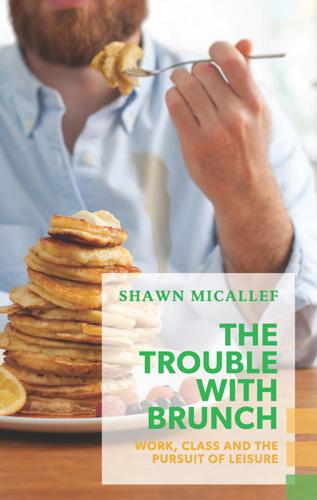
The Trouble With Brunch: Work, Class and the Pursuit of Leisure
by
Shawn Micallef
Published 10 Jun 2014
Kensington Market is exactly the kind of place that mounts campaigns against Walmarts in other cities and towns, analogous to neighbourhoods like Greenwich Village, San Francisco’s Mission or Hackney in London: traditionally working-class neighbourhoods that have become playgrounds for the middle class, with just a bare vestige of those working-class roots still visible. Around the same time the Walmart was proposed, an immense and infamous big-box store called Honest Ed’s was quietly put up for sale in a neighbourhood a few blocks north. This retail upheaval inspired a hue and cry from many Torontonians, all of whom lamented its imminent end. To paraphrase another Morrissey song, there was panic on the streets of Kensington. But if someone made a Venn diagram of these two emotional responses, the overlap would have been considerable.

Freedom
by
Daniel Suarez
Published 17 Dec 2009
As Loki brought his huge pickup and trailer rig through the sleepy town's main street--if such a loose collection of a dozen houses could be called a town--he marveled at what some people accepted as living. The downtown consisted of a single convenience store, a weather-beaten gas station, and a down-in-the-mouth auto-parts store. Loki knew the big-box stores thirty miles off near the interstate had killed most of the local businesses. He imagined the auto-parts store survived primarily because you couldn't get to the big-box stores if your car was broken down. With gas rising past six dollars a gallon, that dynamic would likely change soon--as would the shipment of cheap, plentiful parts from China. Beyond the old commercial center of Garnia, there were new businesses sprouting, and ironically much of that life seemed to be sprouting out of the same shipping containers that had helped to destroy the local economy in the first place.
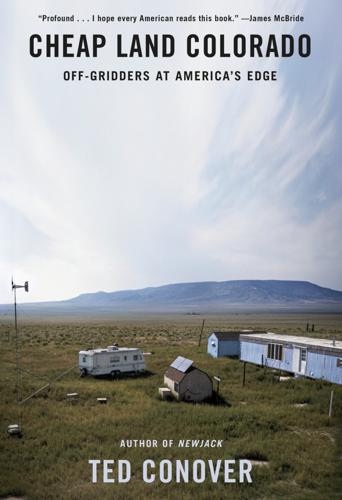
Cheap Land Colorado: Off-Gridders at America's Edge
by
Ted Conover
Published 1 Nov 2022
Frank had discovered it near the burn pit, a midden several feet across that was filled with shiny pieces of the girls’ toys—a bit of lamé from a Barbie dress, some neon-colored mane from a My Little Pony doll. Terry had collected not the eye-catching but, rather, the potentially useful, in a way known to generations of those raised in a time when screws and nuts and bolts were sold by the piece, instead of in packets hanging in plastic packages in big-box stores. There were cans and jars and boxes of hardware. Though I’d asked him to help me carry everything outside, Joseph kept getting distracted and looking a little too hard for stuff he wanted to keep for himself—a vinyl gym bag, a frame backpack, a fleece-lined denim jacket. (I said yes to everything.)
…
And even if you’re not a nineteenth-century-style homesteader, the wide-open spaces of the valley evoke a sort of ongoing frontier, virtuous because unsettled, pure because off-grid. However, these days the grid is not far away. Convenient sources of manufactured energy, such as gasoline and propane, change everything, as do the big-box stores in Alamosa, military flyovers, and cell phones. Another change in our lifetime is a reassessment of humankind’s relationship with nature. Ideas of dominating the natural world, of taming and subjecting it to the human will, are in retreat as Americans, with some foot-dragging, join other countries in responding to climate change, a crisis that our country, in producing so much carbon dioxide, has had such a big hand in creating.

Simple Matters: Living With Less and Ending Up With More
by
Erin Boyle
Published 12 Jan 2016
And feeling like there might be something that we could buy to make our work easier is tempting. But it’s not always the path to thoughtful purchasing. My best advice is to slow down. Mull it over. Let it marinate. Choose whatever metaphor for taking your time that best works for you, and do it. Consider the first trip to a big box store after a move to a new apartment. Do you know the one I mean? The one that you take while half of your things are still in boxes, but you find yourself stymied by the cabinet layout in the kitchen, or realizing that your old bath mat has gotten tattered and worn and a new one would just make you feel so much better about the slightly scummy mess left by the previous tenant.

Arriving Today: From Factory to Front Door -- Why Everything Has Changed About How and What We Buy
by
Christopher Mims
Published 13 Sep 2021
Walmart also borrows from this model. If you’ve ever noticed the shipping pallet under a big box of goods in the middle of a wide aisle in a Walmart, you’ve experienced a retail experience designed not so much for you as for the distribution center–centric supply chain that put it there. The reign of big-box stores might have continued indefinitely were it not for the internet. E-commerce hasn’t exactly been the asteroid strike to end all lumbering retail dinosaurs, but then again the actual dinosaurs didn’t die out as quickly as once thought, either. As of this writing, e-commerce sales in the United States are, by the most commonly cited official measure, about 16 percent of all retail sales, after growing an astonishing 50 percent in the first half of 2020, thanks to the pandemic.
…
See also automation, at ports; intersection of humans and automation; robotic warehousing; self-driving trucks automation, at ports, 77–86; automated stacking cranes, 73, 79–81; autostrads (automatic straddle carriers), 78, 79, 80; container yards and blocks of containerized shipping, 79–88; Covid-19 pandemic, effects of, 76; dwell time of containers in ports, 83–84; electrification and, 75–76; gantry cranes, 78–79; intersection of humans and, 69, 70–71, 77, 79, 85–86; labor/employment and, 76; lasers identifying and locating cargo, 84; of longshoring, 70–76, 85–86; order of stacking containers, queuing theory, and grooming, 81–83; STS (ship-to-shore) cranes, 20, 23, 34, 68–71, 77–78, 81; trucks/truck drivers and, 74–75, 79, 81, 84–85 autopilot systems for ships, 41–42 autostrads (automatic straddle carriers), 78, 79, 80 Avalon National, 134–35 Awood Center, Minneapolis, 171 AWS (Amazon Web Services), 162, 222 Baidu, 153 Ball, Lucille, 191, 213 Baltimore, MD, Amazon fulfillment center at, 161, 180, 192, 203, 220, 227 Bandstra, Jan, 5, 19 Bannerjee, Ashis, 238–39 Bayer, 266 Bayesian analysis, 151–52 bell curve, ranking workers on, 204, 205–6 Bernard, Brett, 148, 149, 150, 156 Bethlehem Steel, 12, 97 Better Homes Manual, The (1931), 103 Betz, John, 50–51, 53–55, 57–59, 62–65 Bezos, Jeff: Amazon warehouses and, 166, 169, 170; Bezosism and other management systems, 198, 199, 201, 209, 216, 221, 223–24, 236; Joy Covey and, 275–76; robotic warehousing and, 241, 246; supply chains and, 7, 14, 15; Sam Walton and, 281 Bezosism, 3, 197–220; accidents/injuries and, 197–98, 200, 202, 206–9, 213–14, 235, 275–76; algorithmic drivers of, 198, 200, 203, 234; compared with other management systems, 198–99, 207, 214, 231, 232; Darwinism and employee turnover, 203, 209–11; deliberate nature of, 199; delivery of goods to customers and, 275–76; deskilling, 214–15, 217; enabling technology, 199, 200–202, 211–21; failure of Amazon to come to grips with consequences of, 199; geographic placement of Amazon facilities and, 217–19; “making rate” and its consequences, 197–98, 202–9, 213; robots, treating workers like, 208, 216, 219–20; stressful work conditions due to, 214–16; surveillance, automation, and work intensification, 203, 211–14, 231–32; worker experience of, 197–98, 200, 202. See also management systems Bien Hoa, Vietnam, 17, 19 big-box stores, 167 Binh Duong port, Vietnam, 19 BlackBerry, 284, 286 Borges, Jorge Luis, 142 the box. See containerized shipping Brady, Tye, 247–48 Brandeis, Louis, 87, 98, 103 Braun, Wernher von, 144 Brookings Institution, 76, 235 Brooks, Rodney, 218 Bruder, Jessica, Nomadland, 187 Brussels (shipping vessel), voyage of, 26–27, 29–43 Bureau of Labor Statistics, 111 business unionism, 278 BuzzFeed News, 276 Cai Mep International Terminal, Vietnam, 11, 16, 19–23, 26, 27, 30, 32–34, 37 Čapek, Karel, 219 cargo plans, 32–35 carpal tunnel syndrome, 200 Carter, Jimmy, 110 CDC (Centers for Disease Control and Prevention), 9, 68 CDL (commercial driver’s license), 115, 220 cell phones.

City on the Verge
by
Mark Pendergrast
Published 5 May 2017
Born in a northern Atlanta suburb in 1982, Griffith held a bachelor’s in ecology from the University of Georgia and a master’s in city planning from Georgia Tech. He had studied invasive species in Chile, done desert restoration in California, and worked for an environmental engineering firm in Norcross, Georgia. But he hated that job, which helped build big box stores, so now he drove a mobile food truck for Waffle House and taught tennis part time.* He used to live in the Old Fourth Ward, but it got too expensive, so he rented a room with two other men in this house. It didn’t look like the landlord did much maintenance, since water from a recent heavy rain dripped into the kitchen.
…
Back to the City While the city of Atlanta faces crucial choices, its suburbs also face a daunting task, as Georgia Tech architect and urban design professor Ellen Dunham-Jones observed in her 2009 book, Retrofitting Suburbia: Urban Design Solutions for Redesigning Suburbs, which offered examples of how to remodel dying shopping malls, big box stores, and acres of surrounding parking lots.* Despite the dramatic titles of other books, such as Leigh Gallagher’s The End of the Suburbs: Where the American Dream Is Moving (2013), the suburbs aren’t going away; they are, however, scrambling to adjust. Most planners and developers recognize that empty-nest baby boomers and young Millennials disdain cars and want to be able to walk to a restaurant, park, or grocery store.
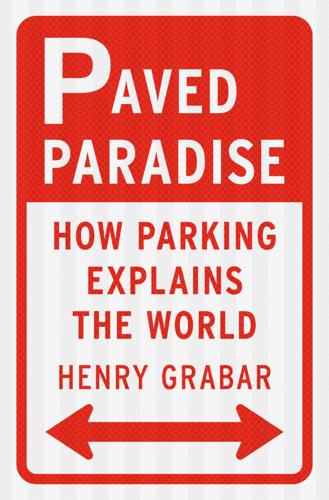
Paved Paradise: How Parking Explains the World
by
Henry Grabar
Published 8 May 2023
At their proposed shopping center nearby, Gruen and Krummeck included a nursery school, a post office, a clubhouse, a library, and a pony stable. It was less a shopping center than a town center—with better parking. Gruen carried this idea forward as he honed his vision for the mall. As downtown’s star fell, Gruen’s rose. In 1949, he designed a big-box store for Milliron’s on Sepulveda Boulevard in Los Angeles. Three hundred parking spaces on the roof, accessed by eye-catching X-crossing ramps running up the building’s sides. Then he convinced the Detroit department store Hudson’s to embark on a campaign of suburban expansion, which began with the opening of Northland shopping center in 1954.
…
See shopping centers management, 85, 202, 260–61 mandates, costly parking, 209 Manhattan, New York, 87, 101–2, 107, 148, 254–55 street parking in, 31–33, 35–36, 37–39, 41, 45, 99–100 traffic agent in, 33–34, 37–39 Manville, Michael, 157, 167, 193 Marina City, Chicago, 128 market demand, parking policy compared to, 86 Markowitz, Marty, 256 Marsden, Brett, 112 Marusek, Sarah, 22 Maryland, Silver Springs, 68 Massachusetts, 76, 85, 109, 205 Boston, xii, 20, 86, 94 mass production, of automobiles, 55 Matta-Clark, Gordon, 251 Maxis, SimCity of, 76 McCahill, Chris, 82 McCardell, William, 95–96, 98 McClintock, Miller, 53 McClure, Paul, 23 McCourt, Randy, 159 McGlockton, Markeis, 23 McKenna-Foster, Daniel, 155–57, 160 McNew, James, 93 Mebrahtu, Freweyni, 95 Melbourne, Australia, 21 Mell, Richard, 126 merchants, in downtown, 29, 54, 58–59, 72 meter maids, police attacking, 36–37 meters, parking, 161–62, 163, 165, 166–67, 168–69 in Chicago, 121–22, 123–24, 127, 132–34, 137–38, 139, 140, 143, 198–99, 203–4, 260 Mexico City, minimum parking laws in, 273, 274 Meyer, Chris, 204 Miami Beach, Florida, 92 Michigan, 59–60, 63, 65, 74, 152–53 Millard-Ball, Adam, 83 Millennium Park, Chicago, 122–23 Miller, Bella, 110 Milliron’s, big-box store of, 59 Minneapolis, Minnesota, 55, 204, 214 Minnesota, 55, 60, 111, 204, 214 mismanagement, of commercial parking, 19–20 Missouri, Ferguson, 163–64 Mister Softee, 248–50 Mitchell, Joni, 160 mixed-use buildings, 217 models, parking, 128, 180, 183, 219 Mohammad Abu-Salha, Yusor, 23 monopolies, in commercial parking, 109–10 Moore, Joe, 134 Moore, Michael, 9 Morgan Stanley, 125, 126, 136, 140–41, 142 parking meters of, 121–22, 123–24, 132–34 Morono, Leon, 103 Mumford, Lewis, 72 municipal parking, 67–68, 73 murders, 22–23, 37, 150 N Najdovski, Christophe, 274–75 Naqvi, Ali, 113–14 National Conference of Housing (1929), 237–38 National Municipal League, 64 National Parking Association (NPA), 105, 106–7, 112 Neal, Esther, 35 Neumann, Adam, 110 Nevada, Las Vegas, 181, 243 Newark, New Jersey, 98–99 Newport News Shipbuilding, Virginia, 25 Newsom, Gavin, 212 New York, 20–21, 52, 66, 85–86, 238, 262 bicycles in, 256, 257–58 during coronavirus pandemic, 270–72 Dumbo in, 252, 254 Genovese crime family in, 101–3 government employees in, 43, 45 Manhattan, 31–34, 35–36, 37–39, 41, 45, 87, 99–100, 101–2, 107, 148, 254–55 Operation Meltdown in, 250, 259 parking garages in, 99–103 parking requirements in, 215 parking supply in, 75 parking whisperer in, 26 pedestrians in, 253–55 Queens, ix–x, xiv, 82 Rochester, 63 Rockaway Beach, 9 street parking in, 247–48, 258, 263–64, 271 Syracuse, 58–59 towing service in, xv traffic in, 53 New York Daily News (newspaper), 48–49, 264–65 New York Ice Cream, 249–50 New York Police Department (NYPD), 40, 47, 48, 50 New York-Presbyterian Healthcare System, 107 The New York Times (newspaper), 37, 48, 64, 264 Nichols, Chrissy Mancini, CPM relation to, 198–99 Nichols, Mike, 15 Nixon, Richard, 92, 228 Norris, Mary, 41 North Carolina, Charlotte, 216–19 Northland shopping center, Detroit, 59–60, 65 North Plano, Texas, 223 Norway, Oslo, 274 NPA.

Habitat
by
Lauren Liess
Published 27 Aug 2015
It can be challenging to accessorize a home when starting from scratch. Some of us may be just beginning our decorating journey and have only a few special, loved possessions, and some of us may even have nothing at all. How do we develop a meaningful collection of things rather than instantaneously filling our home with trendy impulse purchases from big-box stores? In my own home, I like to mix newer pieces with older ones. For example, in the kitchen, I use vintage tableware and antique ironstone and sturdy, hand-blown drinking glasses, along with basic and practical pieces from chain retail stores such as Pottery Barn or Target, and, overall, it looks as if it’s been collected over time, even though I have new pieces mixed in.
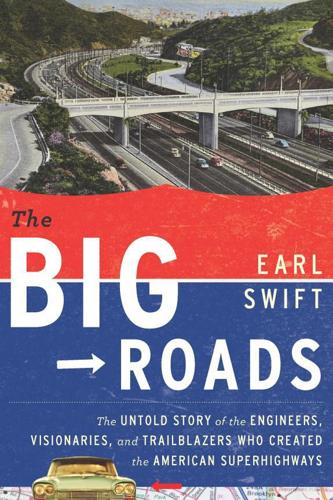
The Big Roads: The Untold Story of the Engineers, Visionaries, and Trailblazers Who Created the American Superhighways
by
Earl Swift
Published 8 Jun 2011
But the dinner correctly recognized that the interstates had turned out to be more than fancy roads—that, often in ways unanticipated by their creators, they had been agents of far-reaching change and had reordered the American landscape. That we could thank the interstates for shrinking the distances between our cities, and the untidy growth of those cities beyond Lewis Mumford's worst nightmare; for the "Edge City" of shopping and office space springing up on beltways in any number of metropolitan areas, and the "big-box" stores that were fast becoming ubiquitous features of suburban interchanges. They'd tamed rivers and bays, high plains and remote reaches of blackwater swamp where earlier roads dared not venture. You could set your cruise control (an automotive feature that would have been needless had the interstates not come along) and at seventy miles per hour, in climate-controlled comfort, summit the Sierra Nevada pass that claimed the Donner party.
…
My second-floor window looked onto the Shoney's rooftop air conditioners and satellite dishes; farther away, beyond the immediate craze of lights and traffic and the expressway's rumbling blur of red and white, lay the mercantile glut served by Exit 82-B, along northbound Highland—strip malls, chain restaurants, big-box stores. Jackson itself was a mile or two away. South on Highland, past the Old Hickory Mall and a mammoth hospital, a compact, red-brick downtown clustered around a dignified county courthouse. When I visited, a live band's country-rock covers were spilling onto a street busy with pedestrians, a good many of them, no doubt, students from Jackson's Union University.
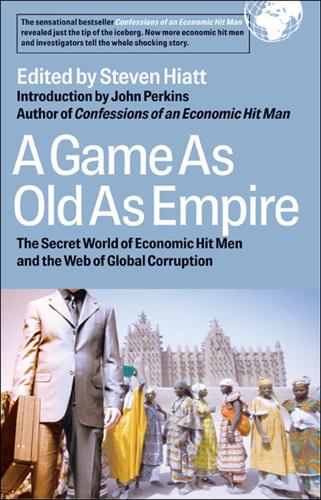
A Game as Old as Empire: The Secret World of Economic Hit Men and the Web of Global Corruption
by
Steven Hiatt; John Perkins
Published 1 Jan 2006
In June 2006, California’s Humboldt County took this legislation one step farther, passing a resolution that not only directly challenged corporate personhood but also banned all out-of-county corporations from making political contributions in local campaigns. In 2005, Charlevoix Township in Michigan was one of dozens of cities to approve ordinances giving local government the authority to limit the size of big-box stores. That same year, Maryland passed legislation requiring organizations with more than 10,000 employees in the state to spend at least 8 percent of their payroll on health benefits. The only enterprise affected by this legislation is Wal-Mart. Similar legislation has been proposed in several other states.
…
Index Abacha, Sani 44, 125 Abedi, Agha Hasan 69, 70, 75, 77, 86, 87 Abu Dhabi 69, 73, 75, 76 Adham, Kamal 75, 86, 87, 88 Afghanistan 26 drug trade in 70 civil war in 70–71 African Development Bank 251 Africa Oil Policy Initiative Group 119 Akbayan 192–93 Alamieyeseigha, Diepreye 121, 123 Algeria 15, 200, 266 Allende, Salvador 27 al-Qaeda 77, 89 and offshore banks 24 al-Taqwa Bank 71, 89 Altman, Robert A. 78, 79, 86, 88 American Express Co. 268 American Mineral Fields 99 Amin, Idi 27 Annan, Kofi 126 AngloGold 244 Anglo-Iranian Oil Company 14 Angola 27, 95 foreign debt 243, 244 Aquino, Benigno 26 Aquino, Corazon 190 Arbusto Energy, Inc. 76 Argentina 236 defiance of IMF 273 foreign debt 228, 230, 233, 241, 244, 273 popular movements in 276 World Bank lending in 169–73 Asari, Alhaji 121, 123, 128–29 Asian “tiger” economies 21, 229, 257n16, 258n27 Azerbaijan 200 Bahamas, as offshore banking haven 45, 89 Baker, Howard 100 Baker, James 239, 256n12 Baker Plan 228, 239–40 Balfour Beatty 211 Banca del Gottardo 71 Banca Nazionale del Lavoro 72 Banco Ambrosiano 71 Bank of America 69–70, 74, 77 Bank of England 84 Bank of Credit and Commerce International 24 accountants and 83–84, 86 arms trade and 72–73, 90 CIA and 69, 70, 71–72, 73, 76 drug trade and 70, 80, 87, 90 indictments 86–88 Iran-Contra 72 money laundering 69, 79–81, 90 operations 73–75, 86 owners 69–70, 75, 76 as Ponzi scheme 75 terrorism and 70, 72, 73, 88–90 U.S. operations 77–79 Bank of New York-Inter-Maritime Bank 83, 88–89 Barrick Gold Corp. 99, 244 Bath, James R. 76 Bechtel Corp. 3, 99, 138, 278 Belgium 101, 104 Bello, Walden 186–87, 273 Ben Barka, Medhi 26 Benin, foreign debt of 249 Berlusconi, Silvio 54 Bernabe, Riza 191 “big-box” stores, campaigns against 278 bin Faisal al-Saud, Prince Turki 75, 78 bin Laden family enterprises 71–72, 89 bin Laden, Haydar Mohamed 89 bin Laden, Osama 26, 77, 88, 89, 42 and BCCI 71 Binladen, Yeslam 89 bin Mahfouz, Khalid 76, 77, 78, 86, 87, 88, 89 bin Sultan al-Nahyan, Sheikh Zayed 69, 75 Blair, Tony 219, 250 Blandón, José 80 Blum, Jack 79–81, 85–86 Bolivia 236, 273 foreign debt 230, 246, 247, 249 gas industry 154, 208 water privatization in 277 Boro, Isaac 122 Brady, Nicholas 80, 256n12 Brady Plan 221, 227, 228, 240–41, 259n35 Brazil 18, 27, 130, 208, 216, 236 foreign debt 227, 228, 230, 241, 244 Bretton Woods agreements 63 Bretton Woods institutions see World Bank, International Monetary Fund British Gas 139 British Petroleum 139, 144, 153 British Virgin Islands, as offshore banking haven 54 Brown & Root 99 Brown, Gordon 126, 127, 219, 250 Burkina Faso, foreign debt of 246, 249 Burundi 95, 247, 249 Bush, George H.W., and administration 27–28, 69, 72, 77, 80, 87, 88, 91n10, 100, 138, 206, 271, 272 Bush, George W., and administration 66, 271, 278 and Iraq War 13, 28 Bush Agenda, The (Juhasz) 4, 275 Cabot Corporation 104, 112n32 Cameroon, foreign debt of 249 Canada 99, 101, 201, 268, 271 Canadian Export Development Corp. 201, 202, 203, 204, 206 capital flight 24, 43–44, 231–36, 253, 258n27 Carter, Jimmy 76, 140 Casey, William 70, 82, 90 Cavallo, Domingo Felipe 238 Cayman Islands, as offshore banking haven 65, 72, 73, 74, 75, 86 Center for Global Energy Studies 145 Center for Strategic and International Studies 119, 120 Central African Republic 231 Central Intelligence Agency 3, 5, 15 Afghan rebels and 70–71 BCCI and 69, 70, 71–72, 73, 76, 78, 79–82, 85 Saudi intelligence services and 75 Chad, foreign debt of 249 Chavez, Hugo 3, 25, 273 Cheney, Dick 28, 133 Chevron Oil 135, 138, 139, 144, 153 in Nigeria 123–24 Chile 236 1973 coup in 27 China 4, 229, 236 foreign debt 222–23 Third World resources and 5, 117–18, 120–21, 124, 126–27, 130 Chomsky, Noam Hegemony or Survival 4 Christian Peacemaker Team 96, 106–8 Citibank, Citigroup 75, 100, 130, 138, 226, 238, 268 Clifford, Clark 78–79, 85, 86, 88 Clinton, Bill, and administration 119, 120, 126, 212, 271 Coalition of Immokalee Workers 272, 280 COFACE 201, 205, 212 Cogecom 100 cold war 4 and decolonization 16–17 Colombia, human rights in 107 colonialism, decline of formal 13–14 coltan: efforts to control 5, 26, 95 shortages of 95 uses for 94 Commission for Africa 251 Communism: appeal of 14 fall of 4, 13, 27, 137–38, 238 Confessions of an Economic Hit Man (Perkins) 1–4, 6, 17 Congo, Democratic Republic of (Zaire): civil war in 26, 94–96, 108n3 corruption in 24, 254 foreign debt 220, 230, 247, 249 human rights in 107–8 rape as a weapon of war in 93, 96–98 Western role in 98–105, 109n4, 111n29 World Bank and 158 Congo Republic 230, 247, 249 cooperatives 276–77 corporations, as legal persons 277 CorpWatch 278 corruption: culture of 51–54 IMF/World Bank and 24–25, 157–74 offshore banking and 44–45, 52- power and 24 privatization and 24–25, 256n12 COSEC 209–10 Council on Foreign Relations 119–20 dam projects, 209–12 Dar al-Mal al-Islami 89 Daukoru, Edmund 125–27, 128 Davos see World Economic Forum DeBeers Group 101, 103 decolonization 13, 16–17 debt/flight cycle 231–36, 253, 258n27 debt relief, campaigns for 246, 252–55, 268 in U.S. 235 debt, Third World 32, 35 amount of relief 224–29 banks and 226–27, 229, 232–34 business loans 35–37, 227 cold war strategy and 17 corruption and 230, 231, 232, 253, 254, 257n23 1982 crisis 39, 55 disunity among debtor nations 237–39 dubious debts and 230, 235, 247, 253, 257n23, 261n68 growth of 18–19, 181, 229–36 as means of control 17, 23, 183–84 payments on 19, 190–91, 223, 228, 231, 247–48, 275 relief plans 220–22, 225–29, 239–52, 274 size of 221–24, 259n37, 260n46 social/economic impacts of 190–91, 231–36, 247–48 democracy: debt crisis and 236 economic reform and 276–79 global justice and 279–81 in Iraq 151–54 Deutsche Bank 226 drug trade 70, 80, 87 Dubai 73 Dulles, Alan 15 Eagle Wings Resources International 104 East Timor 205 economic development strategies: “big projects” and 16–17 debt-led 18–19 state-led 16–17, 19 economic forecasting 3 economic hit men 5 definition 1, 3, 18 John Perkins and 1–4, 17 types of 5, 18 Ecuador 236, 266 foreign debt 244 Egypt 14 Suez Crisis 15–16 Eisenhower, Dwight, and administration 15 elites, wealthy 4, 18, 57, 176, 183, 228, 232, 253 use of tax havens 43–44, 54–56, 65–66, 226, 232–34 El Salvador 26 empire see imperialism Eni SpA 144, 153 Enron 53, 54, 208–9 Ethiopia 230, 249 European Union 51 agricultural subsidies 22 environment degradation: development projects and 199, 200–211, 257n23 oil production and 115–16 export credit agencies: arms exports and 204–5 campaigns against 209–16 corruption and 200, 202–3, 205, 207–8 debt and 200 environmental effects 199, 200–211 nuclear power and 202, 205–6 operation of 197–201 secrecy of 205, 210–12 size of 201 World Bank and 199, 201, 202, 204 Export Credit Group 210, 215 Export Credits Guarantee Department 201, 205, 211 Export Finance and Investment Corp. 203, 204 export processing zones 178 Export Risk Guarantee 203, 211, 213 ExxonMobil 144 fair trade movement 280 Faisal, Mohammad al-89 Faux, Jeff Global Class War, The 4 Federal Bureau of Investigation 71 Federal Reserve Bank of New York 87 Federal Reserve System 78, 82, 88 Ferguson, Niall 13 First American Bankshares 78, 79, 82, 83, 85, 88 First Quantum Materials 101 First, Ruth 26 Focus on the Global South 187, 273 foreign aid 19 in Congo civil war 99–100 France 236, 244 empire 13 Suez Crisis and 15 free trade 4, 19, 21–23, 268, 271 British development and 21 U.S. development and 21 Free Trade Area of the Americas 271 Friends of the Earth 104, 269 G8 summits 212, 213, 219–20, 221, 246, 250, 271, 275 Gambia 243, 249 García, Alan 74 Gates, Robert 85 Gécamines 100, 104 General Agreement on Tariffs and Trade agricultural trade 186–87 establishment of 267 TRIPS 23 Uruguay Round 23, 267 General Union of Oil Employees 135–36, 141–44 Georgia 207 Germany 212, 213, 216, 236 export credit agency 201, 202, 203, 205, 206, 207, 209–11, 212, 215–16 Green Party 206, 215 Ghana 16 development projects in 16, 207 foreign debt 230, 247, 249 impact of IMF SAP 5, 22 Giuliani, Carlo 271 Global Awareness Collective 278 Global Class War, The (Faux) 4 Global Exchange 278 globalization 3 alternatives to corporate 275–79 economic 176–79, 230, 236 impacts of 185–90, 234, 236, 263–65 of the financial system 55, 63–66 Globalization and Its Discontents (Stiglitz) 3, 4 Global justice movement: achievements of 276–79 campaigns 269–72, 274–75 in Global North 268–69, 271–72, 274 in Global South 271–74 origins of 268–69 proposals of 275–79 protests by 265–66, 270–71 Global South see Third World Gonzalez, Henry 72, 90 Gorbachev, Mikhail 137 Goulart, João 27 Groupement pour le Traitment des Scories du Terril de Lubumbashi 104 Guatemala 14, 236 Arbenz government 26 Guinea, foreign debt of 249 Guinea-Bassau 26, 247, 249 Guyana: export credit agencies and 203 environmental problems 203 foreign debt 241, 243, 244, 246, 247, 249 Haiti 236, 249 World Bank and 158 Halliburton 3, 133, 278 Hankey, Sir Maurice 145 Harken Energy Corp. 77, 78 Heavily Indebted Poor Countries initiative 221, 225, 226, 230, 242–48, 275 conditions of 243–45 results of 248–50 Hegemony or Survival (Chomsky) 4 Hekmatyar, Gulbuddin 70 Helms, Richard 82 Henwood, Doug 23, 177–79 Heritage Foundation 121 Heritage Oil and Gas 100 Hermes Guarantee 201, 202, 203, 205, 206, 207, 209, 211, 212, 215–16 Honduras, foreign debt of 249 Hope in the Dark (Solnit) 281 Hungary, Soviet intervention in 16 Hussein, Saddam 28, 90, 141–42 and BCCI 72 Hutu people 94–96 Hypovereinsbank 209 Ijaw people 116, 121–23, 128 Illaje people 123 immigrant rights movement 281 imperialism 13–14 coups d’état and 27 divide-and-rule tactics 25, 26, 265 post-cold war changes 4–5 pressure on uncooperative countries 25, 142 resistance to 28, 115–17, 121–30, 143–44, 151–54, 176, 191–92, 265–66 resources and 98–106, 118–21, 133–34, 136, 139–40, 145 as system of control 17–28, 176 use of force 5, 25–28, 111n22, 113–14, 115–17, 123, 111n22 India 16, 119, 229, 236, 266 foreign debt 222, 223 export credit agencies and 206, 208 Maheshwar Dam 209–10 Indonesia 236 corruption in 202–3 export credit agencies and 200, 202–3, 205, 207, 216 foreign debt 228, 230, 244 inequality 44 Institute for Policy Studies 278 International Bank for Reconstruction and Development 157 International Development Association 157, 242 International Forum on Globalization 266 International Monetary Fund 3, 4, 19, 135, 275 conflicts of interest 244 debt relief and 221–22, 224, 226, 237, 240, 243–46, 250–51, 252 Iraq and 151–53 Malaysia and 273 neoliberalism and 176–79, 222 offshore banking and 43, 234 protests against 266 structural adjustment programs 22, 23, 245, 265–66 Rwanda and 100 Uganda and 100 International Tax and Investment Center 134–35, 138–39, 144–54 International Trade Organization 267 Iran 14, 90, 145, 200 coup against Mossadegh 14–15 nationalization of oil industry 14 Iran-Contra affair 71–72 Iraq: BCCI and 72 foreign debt 152 Gulf War and 28, 72, 140, 141, 146 human rights in 105–6 oil production and reserves 135–36, 139–54 production sharing agreements in 147–54 sanctions against 72, 142 social conditions in 135, 142, 143 U.S. occupation of 28, 140, 141–42, 146, 250, 275, 278 Israel: and Suez Crisis 15 Yom Kippur War and 17 Ivory Coast 230 foreign debt 244, 249 “jackals” 25–26 James, Deborah 273 Japan 216, 236 Japan Bank for International Cooperation 201, 202, 203, 241 Jersey 88 banking boom in 46–47 impact on island 46, 51–52, 56–62 as offshore banking haven 43, 45, 56–61 Johnson, Chalmers Sorrows of Empire 4 Jordan 241, 266 Jordan, Vernon 100 JPMorganChase 226, 238 Jubilee South 190 Jubilee 2000 268 Juhasz, Antonia Bush Agenda, The 4, 275 Juma’a, Hassan 135–36, 140, 142–44, 154 Kabila, Joseph 96 Kabila, Laurent 94, 96, 99 Kagame, Paul 94, 98–99 ties to U.S. 99 Kazakhstan 138, 139, 144, 150 Keating, Charles 83 Kenya 236 foreign debt 243, 244 Kerry, John 76 investigation of BCCI 79–83, 87, 89 Kirchner, Nestor 273 Korea, Republic of 229, 272 Korten, David When Corporations Rule the World 4 KPMG 52 Krauthammer, Charles 13 Krushchev, Nikita 16 Kurdistan 211–12, 214 Kuwait 133, 141, 146, 152, 154 labor exports 235–36 Lake, Anthony 119–20 Lance, Bert 77 Lawson, Nigel 242 Lawson Plan 221, 242 Lee Kyung Hae 272 Liberia, World Bank lending to 159–67 Liberty Tree Foundation 276 Li Zhaoxing 117–18, 124 Lu Guozeng 117 Lumumba, Patrice 26 Luxembourg, as offshore banking haven 72, 73, 74 Madagascar, foreign debt of 249 Mahathir, Mohamad 273 Malawi 254 foreign debt 243, 249 Malaysia 41–43, 229 defiance of IMF 273 Mali, foreign debt of 246, 249 Marcos, Ferdinand 31, 48, 175, 176, 181–85 markets, corporate domination of 16 Martin, Paul 54 mass media, manipulation of 25 Mauritania, foreign debt of 247, 249 McKinney, Cynthia; hearing on Congo 98–99, 110n11 McLure, Charles 137–39 mercenaries: in Congo 111n22 in Nigeria 5, 25–26, 113–14, 115–17 Mexico 207, 256n14, 273 foreign debt 55, 227, 228, 230, 233, 240–41, 244 labor exports 236 Zapatista uprising 272 Middle East, and struggle for oil 27–28 military-industrial complex 99 military interventions 27–28 Mizban, Faraj Rabat 141 Mitterand Plan 221 Mobutu Sese Seko 24, overthrow of 94 Mondlane, Eduardo 26 Mongolia 207 Morales, Evo 277 Morganthau, Robert 69, 84–87 Moscow, John 58, 87 Mossadegh, Mohammad 3, 14–15, 27 Movement for the Emancipation of the Niger Delta 122–24, 129 Movimento dos Trabalhadores Rurais Sem Terra (Landless Workers’ Movement) 272 Mozambique 26, 27, 230 foreign debt 241, 246, 249 Mueller, Robert 87 mujahadeen (Afghanistan): and BCCI 70 and drug trade 70 Mulroney, Brian 100 Multilateral Agreement on Investment 269–70, 281 Multilateral Debt Relief Initiative 222, 225, 230, 250–52 Multilateral Investment Agreement 269 multinational corporations: export credit agencies and 209–11 export processing zones and 178 globalization, pressure for 138, 268, 275 mercenaries, use of 25–26, 111n22, 113–14, 115–17, 123 resources and 101–6, 111n29, 112n31, 112n32 scandals 5 transfer mispricing by 49–51 offshore banks, use of 24, 49–51 patents, control of 23 Museveni, Yoweri 95 Myanmar, foreign debt of 230 Nada, Youssef Mustafa 71–72 Namibia 95 export credit agencies and 207 Nasser, Gamal Abdel 15–16 National Commercial Bank of Saudi Arabia 88–89 National Family Farm Coalition 272 nationalism: pan-Arab 15 Iranian 14 Nehru, Jawaharlal 16 neocolonialism see imperialism neoliberalism 4, 19 critique of 176–79, 190–92, 234, 236 defined 176–77 economic development and 176–79, 232 economic strategies 178–81, 222, 230, 231, 236 Netherlands, overseas empire of 13 Newmont Mining Corp. 244 New World Order 27–28 Nicaragua 207 foreign debt 225, 230, 247, 249 U.S. proxy war against 26, 27, 79 Nicpil, Liddy 190–91, 192 Nidal, Adu 73 Niger, foreign debt of 241, 249 Niger Delta People’s Volunteer Force 121, 123 Niger Delta Volunteer Service 122 Niger Delta region: attack on oil platforms 116–17 as “Next Gulf” 118–21 pollution from oil production 115–16 struggle against Shell 115–16, 121–24 Nigeria 200, 266 China and 117–18 colonial rule 115 corruption in 44–45, 230 foreign debt 223, 230, 233, 243, 244 oil production 115–16, 125–27 World Bank lending in 158, 167–69 Nkrumah, Kwame 16 nongovernmental organizations 239, 250 Noriega, Manuel 80 and BCCI 72, 79 North American Free Trade Agreement 4, 268, 272 nuclear power 205–6, 210 Obasanjo, Olusegun 125, 127 Obiang, Teodoro 48 O’Connor, Brian 144–45 OECD Watch 105 offshore banking havens: arms trade and 71–73 campaign against 62–64 central role in world trade 44, 47–48, 64–65 corruption and 24, 44–45, 52–56, 64, 231–33, 253 drug trade and 70 extraction of wealth 43, 54–56, 64–65, 226, 231–33, 253, 258n58 financial centers and 234, ignored by academia 44, 234 secrecy and 47–48, 53, 66 tax evasion and 43, 48, 49–51, 54, 57–59, 64–65, 226, 232 terrorism and 71, 88 Ogoni people 122–23, 125 Okadigbo, Chuba 116 Okonjo-Iweala, Ngozi 118 Okuntimo, Paul 123 Oil Change International 278 oil price spikes 236 oil production and reserves: future shortages of 28, 140 Indonesia 207 Iraqi 135–36, 144–54 Nigerian 113–14, 128–29 strategies to control 25–26, 27–28, 139–40 OM Group, Inc. 104, 112n31 OPEC 125–26, 128 1973 oil embargo by 17 dollar deposits in First World 17–18 Organisation for Economic Co-operation and Development 135, 269 “Action Statement on Bribery” 216 export credit agencies and 210, 215 Guidelines for Multinational Enterprises 101, 102, 105–6, 112n31 “OECD Arrangement” 215 Overseas Private Investment Corp. 204, 206–9 Oxfam 43, 62–63, 250 Pakistan 90 Afghan mujahadeen and 70–71 BCCI and 70 export credit agencies and 207 foreign debt 244 Panama 3, 26, 72 as offshore banking haven 73, 74 Papua New Guinea: export credit agencies and 204 mining and environmental problems 204 Paris Club of creditors 220, 225–26, 227, 228, 242, 252 Peru 74 foreign debt 241 impact of IMF SAP 22 petrodollars, recycling of 17–18 Perkins, John 19 Confessions of an Economic Hit Man 1–2, 17 Pharaon, Ghaith 76, 77, 86, 87, 88 Philippines, the 31–34, 35–36 corruption in 181–82 democratic movements in 182–85, 236 economic decline in 187–89 emigration from 189, 236 foreign debt 181, 190–91, 230, 241, 244 Marcos regime 31, 34, 175, 176, 180–85, 261n61 martial law in 180–85 social conditions in 179–80, 185–86, 189–91 U.S. rule 175–76 World Bank and 158, 178–81 Pinochet, General Augusto 27, 45–46, 48 PLATFORM 140, 156n28 Portugal 209–10 Posada Carriles, Luis 26 poverty reduction strategy programs see structural adjustment programs Price Waterhouse 83–84 privatization 191 production sharing agreements 147–54 protectionism 21, 181, 186–87 proxy wars 27, 70–71 Public Citizen 269, 273 public utilities, privatization of 191, 261n61, 277 Rahman, Masihur 85 Reagan, Ronald, and administration 19, 79, 87, 136–37, 239 Iran-Contra affair 72 Rich, Marc 90 Rights and Accountability in Development 101, 104, 105 Rio Tinto Zinc 204 Ritch, Lee 79–80 Robson, John 138 Roldós, Jaime 3, 26 Roosevelt, Kermit 15 Rumsfeld, Donald 138 rural economic development 183, 186–87 Russia: debt relief and 225 oil industry 154 transition to capitalism 137–39, 258n28 Rutledge, Ian 149 Rwanda 94–96, 98, 249 massacre in 94, 99 SACE 201 Sachs Plan 221 Saleh, Salim 95 Saõ Tomé, foreign debt of 247, 249 Saud al-Fulaij, Faisal 86, 87 Saudi Arabia 3, 88 and BCCI 70, 75 Saro-Wiwa, Ken 125–26 Scholz, Wesley S. 104 Scowcroft, Brent 72 Senegal 16, 249 Senghor, Léopold 16 September 11, 2001, terrorist attacks 71 Shell Oil 144 Nigeria and 113–15, 122, 123, 125–29 at World Economic Forum 127 Shinawatra, Thaksin 54 Sierra Club 269 Sierra Leone 247 SmartMeme 276 Solnit, Rebecca Hope in the Dark 281 Somalia 251 Sorrows of Empire (Johnson) 4 South Africa 236 military interventions 27 Truth and Reconciliation Commission 26 Soviet Union 13, 14 de-Stalinization 16 Hungary, intervention in 16 influence in Third World 14 U.S. and 137 Stephens, Jackson 76, 77 Stiglitz, Joseph 24 Globalization and Its Discontents 3, 4 structural adjustment programs (SAPs) 19, 229–30 in Ghana 5, 22 in Peru 22 in the Philippines 176–79, 183–85, 190–92 in Zambia 22 Sudan 230, 251 Suharto 200, 202–3 Syria 211 Switzerland, as offshore banking haven 45, 65, 72 Taco Bell, boycott of 280 Tanzania, foreign debt of 247, 249 tax evasion 43, 48, 49–51, 54, 57–59, 64–65 Tax Foundation 137–38 tax havens see offshore banking havens Tax Justice Network 63 Tax Reform Act of 1986 138 Tenke Mining 99 terrorism: as EHM strategy 26, 72 financing of 42, 88–89 inequality and 44 Islamist 71–72, 89 Palestinian 73 Thatcher, Margaret 19, 138 Third World: as commodity producers 17, 23 conditions in 5, 96–97, 106–8, 116, 179–80, 185–90, 234, 236 development strategies 176–79 divisions among countries 265–68 elites in 25, 28, 43–44, 176, 226, 232–34 emergence of 14 lack of development in 232, 237 terms of trade and 22, 178–79 Third World Network 269 Tidewater Inc. 113 Torrijos, Omar 3, 26 Total S.A. 144, 153 trade unions 135–36, 141–44, 180, 186, 269, 274 transfer mispricing 49–51 cost to Third World 50 Transparency International 45 Turkey: export credit agencies and 206 Ilisu Dam 211–14 Turkmenistan 200 Uganda 94–96 foreign debt 241, 246, 249 Union Bank of Switzerland 57, 58, 77, 226, 250 United Arab Emirates 69, 73 United Fruit Company 15 United Kingdom 213 NCP for Congo 102–3 empire 13–14, 115, 129, 145 Iran and 14–15 Iraq occupation and 146, 151, 152 offshore banking and; Suez Crisis and 15 United Nations: trade issues and 265, 276 Panel of Experts, Congo 100–106, 112n32 United Nations Conference on Trade and Development 220, 265, 267 United States: agricultural subsidies 22 aid 98 as empire 13, 28 cold war strategy of 16, 17, 24, 26 in Congo 99, 104, 105 debt-led development strategy of 176–79 Iran coup and 14–15 Iraqi oil and 133–34, 136, 139–40 Iraq wars 72, 133, 141–42 Islamists and 26 Nigerian oil and 118–21 Philippines and 175–76, 180 strategic doctrines 27–28, 118–19 support of Contras 72 trade deficit 23 trade policies 267 U.S.
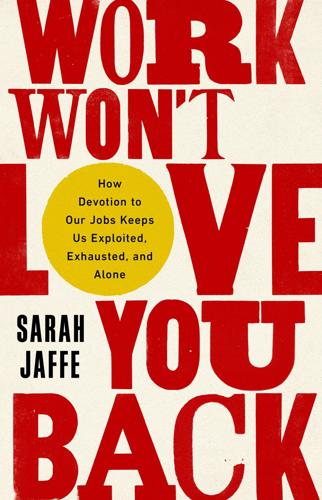
Work Won't Love You Back: How Devotion to Our Jobs Keeps Us Exploited, Exhausted, and Alone
by
Sarah Jaffe
Published 26 Jan 2021
Burnout, associated, in particular, with the millennial generation, in the case of retail workers, could be the exhaustion that comes from convincing oneself over and over again that low-wage work is fun and fulfilling, even if not deserving of higher wages. 40 And now even emotional labor, rarely recognized as requiring skill in the first place, is undergoing its own process of deskilling. Big-box stores like Walmart and Target give workers scripts to follow when they interact with customers, foreclosing their own ability to make decisions, and secret shoppers might also check to see how closely workers follow such a script. Such deskilling itself seems once again to point toward full automation, but in the moment, it’s just another tactic of control. 41 The coronavirus pandemic accelerated many of the trends already existing in retail.
…
With the shift to online ordering as shelter-in-place orders spread across the globe, some companies, such as J. Crew, slid into bankruptcy, while some e-retailers—particularly Amazon—profited wildly. Companies laid off workers, particularly part-timers, as they tried to save money for eventual reopening. Big-box stores like Walmart and Target remained open, putting up safety shields for workers and providing in some cases short-term bonus pay for those who continued to show up. Workers, however, demanded more. The workers deemed “essential” during the pandemic, explained Travis Boothe, a pharmacy technician at Kroger in West Virginia, were retail workers like him, and the whole country was realizing “just how essential we are to the very foundations of this country’s economy.”

Slow
by
Brooke McAlary
Published 22 Aug 2017
Our society and economy is built upon a strong foundation of consumption and a firm expectation that we will contribute, so much so that choosing to live with less stuff is viewed as counter-cultural. We pick up the crappy novelty present for the office Christmas party because that’s what everyone else does. We hang things on the wall because the neighbours might think we’re weird if they remain empty, devoid of photos or artwork or trendy wall hangings. We browse the sale racks at our big box stores because that’s what we’ve always done, and we allow TV or social media to fuel the fire of discontent (I’ll be happy when we book a holiday . . . the kitchen is updated . . . we put in a pool . . .). If we want change, we need to learn how to care less and how to care more. Care less about trends, status and the outward signs of ‘success’, and more about the important things.
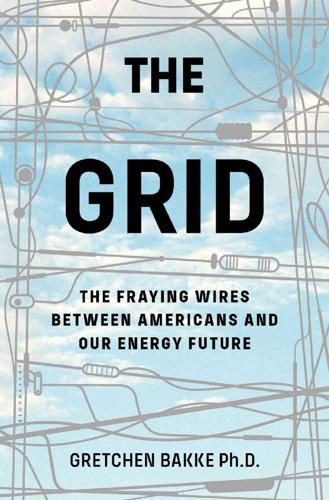
The Grid: The Fraying Wires Between Americans and Our Energy Future
by
Gretchen Bakke
Published 25 Jul 2016
These are slower to transform, largely because of the cost. Putting solar panels on the roofs of all the nation’s Walmarts (this is happening) is not the same as putting solar panels on top of one’s garage. Nor is the difference just a matter of scale. Every suburb and semirural outpost where big-box stores cluster has its own culture of wires, its own utility, balancing authority, and regulatory apparatus that must prepare for (and often upgrade existing infrastructure to accept) every new source of power. When we consider the grid in this way it becomes even more evident that some sort of hub capable of translating across all the competing interests and integrating all the structural intransigencies will be essential to the success of an infrastructural upgrade that is national in scale.
…
Two different sorts of things, then, need to be integrated into our accounting. First, all the electricity made, no matter who is making it. And second, all the electricity not used, no matter who is saving it. If we can work out how to do this, systemically, it will start to matter when a couple of big-box stores, a cement factory, or a subdivision or two are energy-efficient enough that a utility, or anyone else, can avoid building a new power plant. The owners of these enterprises, just like any homeowner who’s invested in a smart thermostat or a host of compact fluorescent bulbs, naturally want credit for what they are saving.
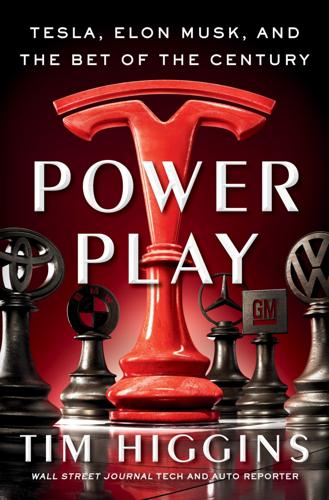
Power Play: Tesla, Elon Musk, and the Bet of the Century
by
Tim Higgins
Published 2 Aug 2021
He’d been president of the Texas Automobile Dealers Association for a generation. He’d joined the association after starting his career working for Ford in Texas and elsewhere, a role that had him dealing with the automaker’s franchise dealers. It had been a long career and one that shaped his thinking about the fabric of the small towns across his native Texas. As big-box stores and shopping malls rose to replace familiar downtowns, in many places the car dealer was one of the last remaining locally owned businesses. Yes, the customers might be buying a Chevy, but they were buying and getting it serviced regularly from a recognizable family name. “When I was a kid in Lewisville, Texas, there were 2,000 people that lived in that small farming community and there were 40 Main Street merchants—all locally owned and operated,” Wolters would later say of his motivations.
…
“When I was a kid in Lewisville, Texas, there were 2,000 people that lived in that small farming community and there were 40 Main Street merchants—all locally owned and operated,” Wolters would later say of his motivations. “Today, one of those businesses exists and it’s Huffines Chevrolet. Everybody else has been replaced by a big-box store because they didn’t have laws that prevented them from being terminated.” The typical franchise car dealer generated money on a mixture of new and used car sales, as well as servicing those vehicles. Overall, the average dealer that year made about $1.2 million in profit before taxes, selling 750 new vehicles and 588 used ones, according to the National Automobile Dealers Association.
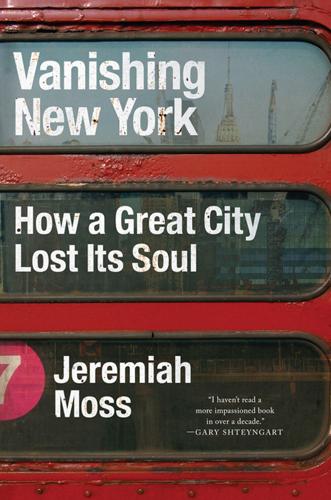
Vanishing New York
by
Jeremiah Moss
Published 19 May 2017
But as political theorist Susan Fainstein noted: “Residents are caught in a vicious circle: they cannot afford to patronize independent shopkeepers because their wages are so low, and their wages are so low because large corporations have been able to force down the general wage rate, justifying their stinginess as required by competition.” Big-box stores then “create more poorly paid employees who can only manage to patronize businesses that pay exploitative wages.” And on the vicious circle goes. In East Harlem, the East River Plaza is getting bigger, blander, and more estranged. A trio of high-rise towers will be built right on top of the mall, rocketing nearly fifty stories into the sky and filled mostly with luxury tenants.
…
They’ve protested against FreshDirect and the de Blasio administration’s planned transformation of blue-collar Jerome Avenue into a new neighborhood—about which Bronx Documentary Center founder Michael Kamber wrote in the Times, “The formula is simple: rezoning; tax incentives for developers; new 11-story buildings that house thousands (some low income, most not). Chain and big box stores are in—immigrants fixing cars are out. Speculators are already staking claims.” They also protested a pop-up art show at the abandoned old Bronx Borough Courthouse, a landmark Beaux-Arts building shuttered since the 1970s, bought by a developer in the 1990s, and opened briefly in 2015 for No Longer Empty, a nonprofit that curates art exhibits in vacant spaces around the city.

Introverts in Love: The Quiet Way to Happily Ever After
by
Sophia Dembling
Published 6 Jan 2015
He was male and he was a Christian, so I was the one she thought of.” Married twenty-one years now. Is there a shop you visit regularly? Can’t hurt to get on friendly terms with the proprietor, who sees a lot of people every day. (One good reason among many, by the way, to patronize small, independent stores over big-box stores.) When he worked at night, Eric would often stop for “exactly two drinks” at a low-key bar where there were rarely any other patrons in his age bracket (most were younger). So one night when he saw an age-appropriate woman there, he struck up a conversation. “I am good at small talk when I’m motivated,” he says.
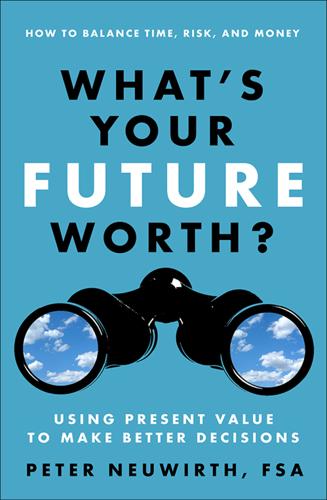
What's Your Future Worth?: Using Present Value to Make Better Decisions
by
Peter Neuwirth
Published 2 Mar 2015
Let’s now look at a couple of others. A “Once in a Lifetime” Opportunity? If you are like me, your mailbox, telephone, and e-mail are constantly inundated with marketing offers that seem too good to be true. From offers to switch cable companies to “free” home inspections, blowout sales at your local “big box” store, and Groupon deals, it seems that we go through life spending far too much money on the things we need and if we just took the time to read and act on all these “once in a lifetime” opportunities, we could improve our financial situation considerably. Many of us are either so suspicious or have become so numb to sales pitches that we just refuse on principle to even investigate the offers.

Green Interior Design
by
Lori Dennis
Published 14 Aug 2020
Many contemporary fashion lines have clearly marked sustainability initiatives on their websites or on their clothing’s tags. When it comes to designing a closet, the most important thing to know before you begin is exactly what is going to go back into the closet when it’s finished. All set? Okay, let’s move on: Part II: Design Tips for Customizing Your Dream Closet Some good news—you can actually shop big-box stores with off-the-rack shelving units relatively cheaply and sustainably! Just be sure to read online product reviews diligently. Watch out for buzzwords like “wobbly” or anything about the edges chipping. But otherwise, you don’t have to be too precious with the building materials used in your closet.

The Meritocracy Trap: How America's Foundational Myth Feeds Inequality, Dismantles the Middle Class, and Devours the Elite
by
Daniel Markovits
Published 14 Sep 2019
And thrift finance enables a middle class whose stagnant wages no longer match its needs to fund consumption through borrowing. Thrift retail—low-cost supermarkets, dollar stores, and big-box stores—has grown astronomically in the past decades. Walmart alone has grown from a single store in 1962 to generate nearly $300 billion in U.S. revenue in 2016. And Dollar General and Family Dollar have averaged nearly 9 and 7 percent annual revenue growth in recent years. Shoppers at all three stores earn substantially less—in the case of Family Dollar nearly 40 percent less—than shoppers even at other less downmarket big-box stores like Target, and the earnings gap to shoppers at upmarket stores is much greater still.
…
revenue growth in recent years: See Dollar General Corporation, “DG’s Revenue Growth by Quarter and Year,” CSIMarket.com, accessed November 19, 2018, http://csimarket.com/stocks/single_growth_rates.php?code=DG&rev, and Family Dollar Stores, Inc., “FDO’s Revenue Growth by Quarter and Year,” CSIMarket.com, accessed November 19, 2018, http://csimarket.com/stocks/single_growth_rates.php?code=FDO&rev. less downmarket big-box stores like Target: These relationships are calculated using data on incomes for shoppers at Family Dollar, Dollar General, Walmart, and Target, reported in Hayley Petersen, “Meet the Average Walmart Shopper,” Business Insider, September 18, 2004, accessed November 19, 2018, www.businessinsider.com/meet-the-average-wal-mart-shopper-2014-9.
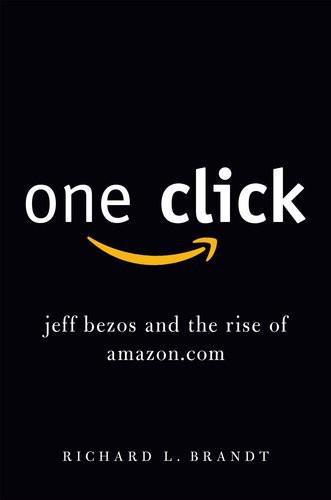
One Click: Jeff Bezos and the Rise of Amazon.com
by
Richard L. Brandt
Published 27 Oct 2011
However, a big part of that jump was due to print-on-demand (POD) books, produced by specialty printers that focus on public domain titles, self-publishers, and micro-niche publications. These titles jumped 181 percent over 2008. The problem is that actual sales of these titles are very low compared to books from the major publishing houses. And retailers say they have not seen the number of readers increase with lower prices. “The big box stores were supposed to increase the numbers of readers too,” says Richard Howorth, the owner of Square Books in Oxford, Mississippi, who was one of the teachers of the class on running a bookstore that Bezos took. “But they didn’t.” The other complaint is the tactics Amazon uses to keep its prices low.

Dignity: Seeking Respect in Back Row America
by
Chris Arnade
Published 3 Jun 2019
Our metrics for success became how high the stock market got, how large the profits were, how efficient the company was. If certain communities, towns, and people, suffered in this, it was all for the greater good in the name of progress. Our obsession with economic growth empowered massive corporations that filled many communities with franchises and big-box stores, crushing the downtowns that had once had small locally owned shops and restaurants. The economy grew, but gone were the local community, the labor union, and lifetime jobs for those without a college degree. While our front row neighborhoods filled with bespoke and artisanal stores, those left behind, literally and figuratively, were left to cope with the new landscape we had created.
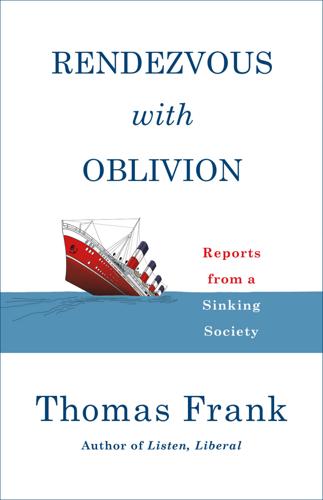
Rendezvous With Oblivion: Reports From a Sinking Society
by
Thomas Frank
Published 18 Jun 2018
Using arts festivals to make small towns appear “vibrant”—a favorite stratagem of ArtPlace—was not one of his suggestions. What he proposed instead was universal health coverage. Other solutions to the problem of rural depopulation are just as easy to come up with. Prohibit corporate agriculture; this would encourage not only small farms but food diversity as well. Use zoning rules to restrict big-box stores, thereby saving small-town merchants. Make college excellent and affordable, so that graduates aren’t forced by the weight of student debt to seek corporate employment in the big cities. Resist the urgings of foundation dignitaries and focus instead on the far less beguiling reverie of durable, productive enterprise.
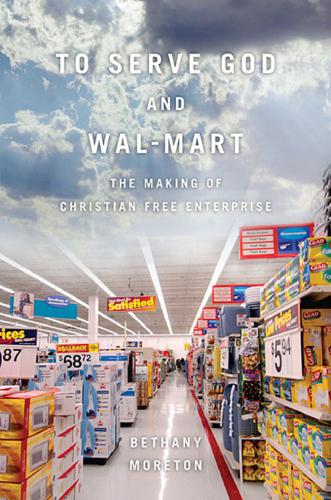
To Serve God and Wal-Mart: The Making of Christian Free Enterprise
by
Bethany Moreton
Published 15 May 2009
Thomas projÂ�ect would be allowed into the new development. “In reality,” argued a critic, “it’s a way to get a lot of money for high-income housing.” Renamed “River Garden,” the site would lure desirable residents with the pastel pedestrianism of the New Urbanist design movement. And while the big box store Â�wasn’t quite the period piece the architects had envisioned, Wal-Mart did agree to landscape the parking lot.2 For the Arkansas-based company, its first stake in central New Orleans represented a form of urban homesteading. “The company started in rural areas [because] people in those areas did not have access to goods that other people did,” explained a spokeswoman, and now that rural Americans could buy brand-name goods in their Wal-Marts, the company was extending that serÂ�vice to another population left behind in national consumption.
…
“Americans have decided they want discount shopping in volume, and that’s the real world,” he explained succinctly.3 In 2001 former residents of St. Thomas and their white neighbors packed a tense five-hour meeting of the New Orleans City Planning Commission, arguing on opposite sides. The mostly white forces against Wal-Mart saw their challenge to a subsidized big-box store as a stand for the common good. The data was in: Wal-Mart Â�didn’t add jobs, it cannibalized existing ones. It drove locally owned businesses under, homogenized communities, and degraded the landscape—and all with help from the public purse. With the government contracting out its public housing to for-Â�profit developers, the tenants became loss leaders in a slick real-estate deal.

Blood in the Machine: The Origins of the Rebellion Against Big Tech
by
Brian Merchant
Published 25 Sep 2023
THE GREAT COMET RETURNS Two hundred years and change after the Great Comet blazed over the skies of industrializing England, ominous signs have again been appearing that the latest incarnation of factory owners and entrepreneurs—tech execs and startup founders—are using new technologies to reshape the world of work to the disadvantage of the workers. There may not be a burning celestial body overhead, but throughout the 2010s, there was no shortage of omens closer to earth. Closed for Business signs sit in the windows of mom-and-pop shops and the vacant husks of big-box stores in strip malls outside town grow ever more numerous, victims of the rise of Amazon and e-commerce giants, and the disappearance of the hundreds of thousands of jobs once held inside those walls. Rideshare drivers are sleeping in their cars in parking lots and rest stops, even after working around the clock logging gigs on their smartphone apps, unable to afford rent in the richest country in the world.
…
Amazon, Uber, Lyft, DoorDash, InstaCart, TaskRabbit, and other companies drove algorithm-mediated work platforms into the mainstream, normalizing a mode of work that left workers without benefits or protections. Delivery drivers, cleaners, carpenters, masseuses, you name it—the twenty-first century has seen the rise of precarious, gig-based, platform-mediated jobs, begetting the decline of traditional ones. Meanwhile, e-commerce and the Amazon effect hit retailers hard, shuttering shops and big-box stores alike. Headline after headline proclaimed “The Robots Are Coming for Our Jobs,” in stories about hyper-intelligent AI and logistics automation. Will all these trends eventually lead to a world where the bots and algorithms do our dirty work, making our lives easier and more prosperous? Or will the machines push us out of our jobs and deposit us into a dystopia?

Fodor's Hawaii 2012
by
Fodor's Travel Publications
Published 15 Nov 2011
Although the current real-estate boom on Kaua‘i has attracted mainland millionaires to build estate homes on the few remaining parcels of land in Hanalei, there’s still plenty to see and do. It’s the gathering place on the North Shore. Restaurants, shops, and people-watching here are among the best on the island, and you won’t find a single brand name, chain, or big-box store around—unless you count surf brands like Quiksilver and Billabong. The beach and river at Hanalei offer swimming, snorkeling, boogie boarding, surfing, and kayaking. Those hanging around at sunset often congregate at the Hanalei Pavilion, where a husband-and-wife slack-key-guitar-playing combo makes impromptu appearances.
…
The commercial and political center of Kaua‘i County, which includes the Islands of Kaua‘i and Ni‘ihau, Līhu‘e is home to the island’s major airport, harbor, and hospital. This is where you can find the state and county offices that issue camping and hiking permits and the same fast-food eateries and big-box stores that blight the mainland. The avid golfer will like the three golf courses in Līhu‘e—all within a mile or so of each other. The county is seeking help in reviving the downtown; for now, once your business is done, there’s little reason to linger in lackluster Līhu‘e. Getting Here and Around Route 56 leads into Līhu‘e from the north and Route 50 comes here from the south and west.
…
A variety of sewing patterns and notions are featured, making it a must-stop for any seamstress. If you’re seeking something that’s truly one-of-a-kind, check out the selection of purses, aloha wear, and other quality hand-sewn items. | 4-1326 Kūhiō Hwy. | Kapa‘a | 96746 | 808/822–1746. Līhu‘e Līhu‘e is the business area on Kaua‘i, as well as home to all the big-box stores and the only real mall. Do not mistake this town as lacking in rare finds, however. Līhu‘e is steeped in history and diversity while simultaneously welcoming new trends and establishments. Shopping Centers Kilohana Plantation. This 16,000-square-foot Tudor mansion contains art galleries, a jewelry store, and the new farm-to-table restaurant 22 North.

Fodor's Hawaii 2013
by
Fodor's
Published 22 Jul 2012
Although the current real-estate boom on Kauai has attracted mainland millionaires to build estate homes on the few remaining parcels of land in Hanalei, there’s still plenty to see and do. It’s the gathering place on the North Shore. Restaurants, shops, and people-watching here are among the best on the island, and you won’t find a single brand name, chain, or big-box store around—unless you count surf brands like Quiksilver and Billabong. The beach and river at Hanalei offer swimming, snorkeling, body boarding, surfing, and kayaking. Those hanging around at sunset often congregate at the Hanalei Pavilion, where a husband-and-wife-slack-key-guitar-playing combo makes impromptu appearances.
…
The commercial and political center of Kauai County, which includes the islands of Kauai and Niihau, Lihue is home to the island’s major airport, harbor, and hospital. This is where you can find the state and county offices that issue camping and hiking permits and the same fast-food eateries and big-box stores that blight the mainland. The county is seeking help in reviving the downtown; for now, once your business is done, there’s little reason to linger in lackluster Lihue. Getting Here and Around Route 56 leads into Lihue from the north and Route 50 comes here from the south and west.
…
A variety of sewing patterns and notions are featured as well at Vicky’s Fabric Shop, making it a must-stop for any seamstress. If you’re seeking something that’s truly one-of-a-kind, check out the selection of purses, aloha wear, and other quality hand-sewn items. | 4-1326 Kuhio Hwy. | Kapaa | 96746 | 808/822–1746. Lihue Lihue is the business area on Kauai, as well as home to all the big-box stores and the only real mall. Do not mistake this town as lacking in rare finds, however. Lihue is steeped in history and diversity while simultaneously welcoming new trends and establishments. Shopping Centers Kilohana Plantation. This 16,000-square-foot Tudor mansion contains art galleries, a jewelry store, and the farm-to-table restaurant 22 North.

Simply Living Well: A Guide to Creating a Natural, Low-Waste Home
by
Julia Watkins
Published 6 Apr 2020
A great deal of the circular economy is accomplished by smarter designs, innovative materials, technological advances, and radically different business models. But there’s a lot—and I mean a lot— you can do in your own home, often by looking back to a time when the demands of feeding a family of four were no different than they are today, but with no fancy supermarkets or big box stores down the road or fast and easy take-out or delivery options a phone call away. This is why, for me, zero-waste has been about so much more than just avoiding trash or preventing waste. It’s been about changing my mindset, developing an inner resourcefulness, and creating deep, meaningful connections to the natural world, my ancestors, my food, my health, and my community.
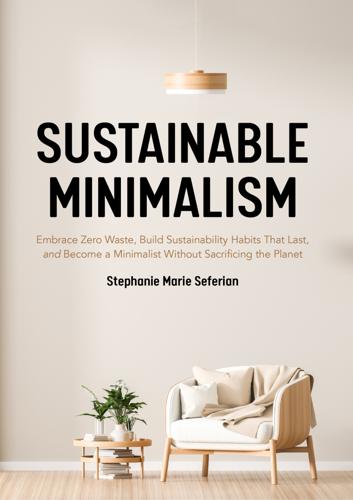
Sustainable Minimalism: Embrace Zero Waste, Build Sustainability Habits That Last, and Become a Minimalist Without Sacrificing the Planet (Green Housecleaning, Zero Waste Living)
by
Stephanie Marie Seferian
Published 19 Jan 2021
Sustainable Minimalism: Embrace Zero Waste, Build Sustainability Habits That Last, and Become a Minimalist without Sacrificing the Planet Library of Congress Cataloging-in-Publication number: ISBN: (print) 978-1-64250-501-6 , (ebook) 978-1-64250-502-3 BISAC category code: HOM019000—HOUSE & HOME / Cleaning, Caretaking & Organizing Printed in the United States of America To Haig, Ani, and Lara Table of Contents Part 1 Getting Started with the Low-Hanging Fruit Chapter 1 Why You Overbuy (and How to Stop) Chapter 2 The Five Pillars of Responsible Decluttering Chapter 3 Sustainable Minimalism on a Budget Chapter 4 Day-to-Day Minimalism with Kids Chapter 5 Eco-Friendly Capsule Wardrobes Part 2 Sustainability and the Middle of the Tree Chapter 6 Your Low-Waste Kitchen Chapter 7 Less Plastic, Please Chapter 8 Carbon Footprints and On-the-Go Sustainability Chapter 9 Gifting and Thrifting Part 3 The Highest-Hanging Fruit: Self-Sufficiency Chapter 10 Why Self-Sufficiency Matters Chapter 11 DIY for a Life with Less Chapter 12 Become a Change-Maker Acknowledgements About the Author Appendix Endnotes The Sustainable Minimalist Tree Work Your Way to the Top! Introduction America, we have a purchasing problem. I’ll never forget the first (and only) time I participated in Black Friday. I woke up early—too early, if I’m honest—and stood in a line that snaked around the side of a big box store. It was a frigid November night and I shuffled from side to side to keep warm. The lights in the parking lot illuminated the exhalations of the crowd; in that moment, I had the fleeting thought that this was all so silly. I should go home. I should get back in bed. But in the end, I bought a flat screen television.

Digging Out: Helping Your Loved One Manage Clutter, Hoarding, and Compulsive Acquiring
by
Michael A. Tompkins
and
Tamara L. Hartl
Published 31 Mar 2007
Look at the following list and, in a notebook or on a sheet of paper, write down and describe the particular ways possessions enter your loved one’s home. Through the mail (catalogs, junk mail, newspapers, magazines, periodicals) Through free samples (salt or pepper packets, paper napkins, free newspapers, handbills) Through purchasing (garage, tag, or yard sales; big-box stores; thrift stores; sales; Internet shopping; TV shopping) Through searching through trash (in trash bins or Dumpsters and set-asides for bulk pick-up days) Through the routine efforts of others (friends sending articles, relatives giving gift subscriptions to magazines, people bringing free things or extras, holiday gifts) Through family inheritances (receiving furniture and china when a relative passes away) Through borrowing (libraries, tool share programs) Through stealing or shoplifting Through neighborhood foraging (picking things up off the street or on the side of the road) Identifying Harm Reduction Targets An effective harm reduction plan begins with a comprehensive assessment of all the factors that may increase or decrease your loved one’s harm potential.

Let's Explore Diabetes With Owls
by
David Sedaris
Published 22 Apr 2013
In ’08, my gifts were pretty paltry. I’d bought eight dozen safety pins in Greece, and while they were foreign, they didn’t look much different from what you could get in the States. Ditto the German Band-Aids. So when Bob mentioned Costco I felt that all my problems had been solved. As with every big-box store in Winston-Salem, it took fifteen minutes to drive there and another fifteen minutes to cross the parking lot. If the building seemed large from the outside, inside it was twice as big, the kind of space that has its own weather. The carts, too were slightly oversize, and made me appear even smaller than I actually am.
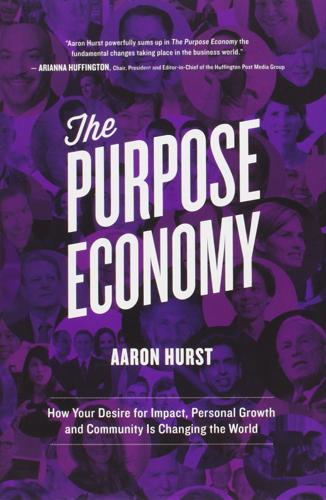
The Purpose Economy: How Your Desire for Impact, Personal Growth and Community Is Changing the World
by
Aaron Hurst
Published 31 Aug 2013
Every Sunday outside the playground in my neighborhood of Park Slope, Brooklyn, the aisles of the farmers’ market are packed with those looking for the best pickles in New York City, local goat cheese, or a bounty of beautiful produce grown by small-scale farmers within a hundred miles. And while the aisles may be harder to navigate than the typical chain grocery store, the popularity of these markets is undeniable. From bodega-lined urban neighborhoods to big-box store suburbs, we are seeing a longing for a meaningful connection to our food—a way to create community, connect with the growers, and heal the planet. In the Purpose Economy, we see the circumvention of traditional retail channels, which mark up goods at several points along the food chain. An increasingly robust direct producer-to-consumer retail capacity is emerging in which any individual can sell her wares at whatever price she determines.
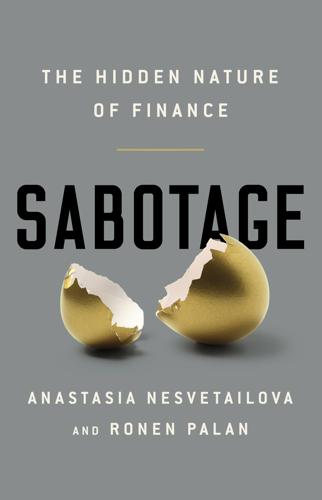
Sabotage: The Financial System's Nasty Business
by
Anastasia Nesvetailova
and
Ronen Palan
Published 28 Jan 2020
The banks themselves tend to justify their action in terms of optimization of costs and better services. ‘Large banks invest billions of dollars to deliver the products and services consumers want – investments that only a company that has achieved scale can make. Scale allows them to deliver, like big-box stores, more innovation, greater convenience and consistent, reliable service,’ argued in 2012 William B. Harrison Jr, an architect of the 2000 merger that created J. P. Morgan Chase, and the bank’s former chairman and chief executive.12 Economists tend to deduce motivation from the resulting data.

Under a White Sky: The Nature of the Future
by
Elizabeth Kolbert
Published 15 Mar 2021
Fish and Wildlife Service, and the Nevada Department of Wildlife—agencies that cooperate (and sometimes squabble) over the fish’s future. It took me a while to arrange a trip; by then it was time for the summer census and about 105° Fahrenheit. I met up with the team in the town nearest the cavern—Pahrump, Nevada. Pahrump has one main road, which is lined with fireworks shops, big-box stores, and casinos. From there it’s a forty-five-minute drive to Devils Hole, through a mix of desert scrub and emptiness. In Manly’s day, the cavern would have been hard to spot until you practically toppled into it. Today, it’s impossible to miss owing to the ten-foot-tall fence, which is topped with barbed wire.

Fewer, Better Things: The Hidden Wisdom of Objects
by
Glenn Adamson
Published 6 Aug 2018
He has trained many people to work for him over the years and observes that what they really need is not the ability to memorize the names of parts and equipment, but spatial and visual awareness. I asked him what his plans were for retirement—did he intend for someone else to take over from him? He said no. It would be tough for someone to start out in the business today, with the intense competition from big-box stores like Home Depot. He has kids, but he’d never ask them to inherit the store; he doesn’t want them to have to work so hard. In any case, his bricks are worth more than his business. He’s already had many offers from real estate developers to buy the property. Someday in the not-too-distant future, that is probably what will happen.
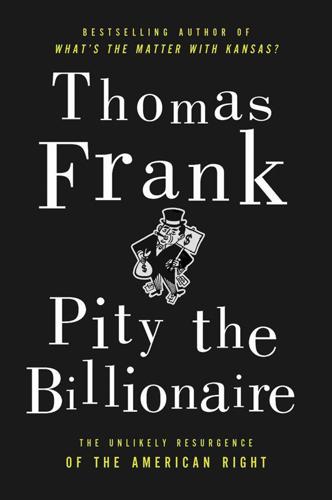
Pity the Billionaire: The Unexpected Resurgence of the American Right
by
Thomas Frank
Published 16 Aug 2011
Why should society pay for the retirement of someone who hasn’t been responsible and collected Krugerrands? The older generation had a rendezvous with destiny, their hero FDR used to say, and soon it will occur to America’s class-war populists that every slow-moving moocher and senior-parasite needs to make that rendezvous—which is to say, that appointment with the human resources guy at the local big-box store. Every problem that the editorialists fret about today will get worse, of course: inequality, global warming, financial bubbles. But on America will go, chasing a dream that is more vivid than life itself, on into the seething Arcadia of all against all. Notes Introduction 1. As far as I can tell, the first to use a form of this metaphor was Representative Eric Cantor (R-VA), who told the Washington Independent reporter Dave Weigel in September of 2009 that the movement was an “awakening in America.”
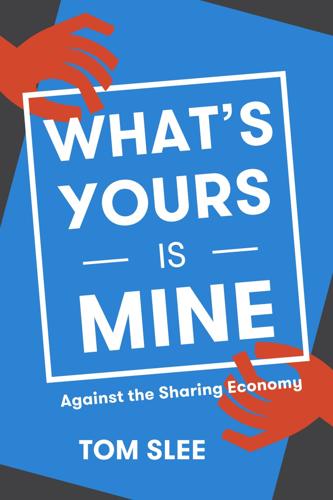
What's Yours Is Mine: Against the Sharing Economy
by
Tom Slee
Published 18 Nov 2015
It is the middle-class outlets that have seen relative decline in the online world. Moreover, it is overwhelmingly smaller, local media organizations that have lost out to national sources.38 The distinction between Hindman and Anderson’s Long Tail comes down to comparisons. The Long Tail compared online platforms to large chain stores and big-box stores such as Walmart or the now-defunct Blockbuster video, Tower Records, or Borders books, but Hindman compares the online ecosystem to a more complete range of non-digital national and local media. As a result, he catches a key aspect of the comparison that Anderson misses: variety in a world subject to “the tyranny of geography” was always supplied by a variety of institutions, each capable of working at different scales.
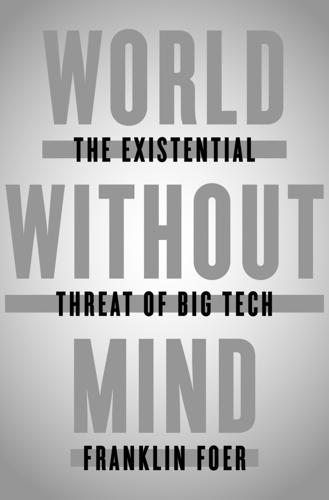
World Without Mind: The Existential Threat of Big Tech
by
Franklin Foer
Published 31 Aug 2017
The year Facebook went public, it recorded $1.1 billion in American profits, but didn’t pay a cent of federal or state income tax. Indeed, it earned a $429 million refund. According to Citizens for Tax Justice, Facebook bilked the treasury by taking a single deduction: It wrote off the stock options it gave to its executives. It’s hard to have sympathy with Walmart or Home Depot or the other big-box stores. They hardly pay the largest tax rates in the nation. Still, they cough up a reasonable sum. Over the last decade, Walmart, the supposed Beast of Bentonville, handed over about 30 percent of its income in taxes; Home Depot paid 38 percent. We can bemoan the fact that they don’t pay more, yet it seems reasonable to note that their prime competitor isn’t paying even half that rate.
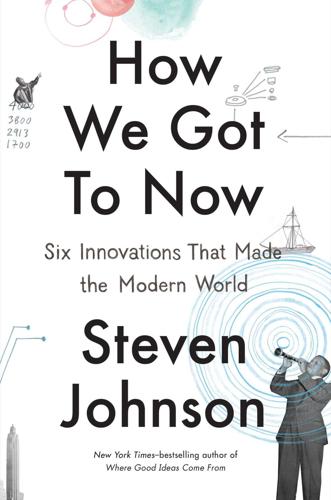
How We Got to Now: Six Innovations That Made the Modern World
by
Steven Johnson
Published 28 Sep 2014
But bar codes and scanners greatly reduced the costs of maintaining a large inventory. The decades after the introduction of the bar-code scanner in the United States witnessed an explosion in the size of retail stores; with automated inventory management, chains were free to balloon into the epic big-box stores that now dominate retail shopping. Without bar-code scanning, the modern shopping landscape of Target and Best Buy and supermarkets the size of airport terminals would have had a much harder time coming into being. If there was a death ray in the history of the laser, it was the metaphoric one directed at the mom-and-pop, indie stores demolished by the big-box revolution
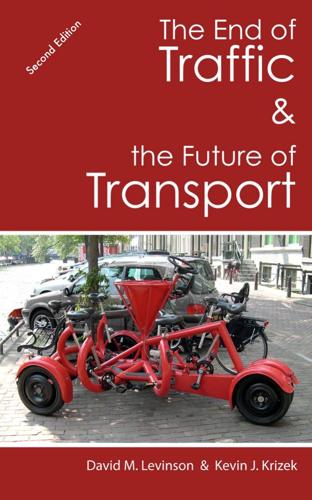
The End of Traffic and the Future of Transport: Second Edition
by
David Levinson
and
Kevin Krizek
Published 17 Aug 2015
Before that though, HOT Lane Networks will be converted to automated-only operation. Daily Travel? Taken to an extreme, these conditions suggest a future where travel—a daily 1 - 2 hour set of chores of getting to things and having things come to us—might be be a thing of the past. Driving to work five days a week and driving to the big box store for detergent are both disappearing. The Amazon Dash button336 demonstrates how we might take care of some of this. Parents will soon be able to order a self-driving car to take their children to soccer practice. Relying on descendants of apps like Skype and FaceTime and Google Hangouts, workers will meet colleagues periodically at both offices and random third places.

Protecting Pollinators
by
Jodi Helmer
Published 15 Nov 2019
Vaughn Bryant, director of the Palynology Laboratory at Texas A&M University cites a lack of truth in labeling as the main reason consumers might be duped at the supermarket. Bryant tested sixty jars, jugs, and plastic bears of honey purchased in ten states and the District of Columbia in 2011. The results showed that 100 percent of the honey purchased at drugstores, 77 percent of honey sold at big-box stores like Costco and Target, and 76 percent of the honey purchased at supermarkets contained no pollen. Manufacturers claim that pollen is removed before honey is bottled because consumers want crystal-clear honey (and unfiltered pollen particles can crystallize); supermarkets also prefer filtered honey because it has a longer shelf life.
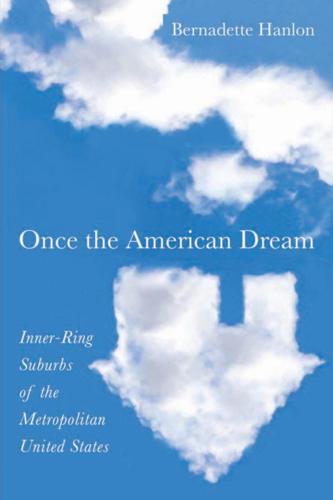
Once the American Dream: Inner-Ring Suburbs of the Metropolitan United States
by
Bernadette Hanlon
Published 18 Dec 2009
The suburb has also been involved in such initiatives as developing new housing, mostly aimed at higher-income inhabitants; offering incentives for the redevelopment of local storefronts and streetscape improvements; enhancing the suburb’s McCain Park; and encouraging new commercial ventures, such as the redevelopment of Severance Town Center (Keating 2008; Morton 2002). In 1986, Cleveland Heights’ city hall relocated to the periphery of the old Severance mall in an effort to boost commercial activity there (Morton 2002). The mall area still struggled until, in 1998, the old Severance mall was demolished. The new structure that replaced it was anchored by big-box stores, such as Walmart and Home Depot, and a large cinema complex. New housing developed around the new town center. Cleveland Heights sees such redevelopment as a way to increase its local tax base, to improve the quality of life for its residents, and, ultimately, to compete with newer suburbs on the metropolitan fringe.

Future Sex
by
Emily Witt
Published 10 Oct 2016
When Max and Harper got frustrated with their off-the-grid life, they usually evoked the specter of OfficeMax. Or, after a particularly enthusiastic session of sex on camera, they would high-five, and one would ask the other, “Want to quit and go work at OfficeMax?” The joke was about all that was wrong in the world, to Harper and Max: big-box stores in concrete lots, the drudgery of the dead-end hourly wage, beige filing cabinets, obedience, the myth that hard work for a multinational corporation would be rewarded in any significant way. They drove around the country. An investor gave them $4,000 to build their website. They decided to pass the winter in Mexico.
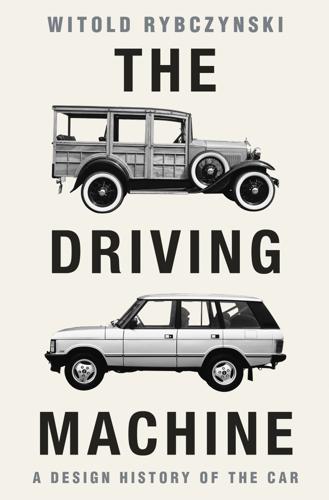
The Driving Machine: A Design History of the Car
by
Witold Rybczynski
Published 8 Oct 2024
Streetcars and railroads produced linear urban development, but cars could go in all directions. Thus, old cities sprawled into the surrounding countryside and new cities took unprecedented low-density forms. Individual mobility also created new destinations: drive-in movie theaters and drive-through banks, shopping malls and big box stores, and far-off weekend cottages. There was a price to pay for this mobility. The new suburban malls hurt the old downtowns, and spreading out instead of concentrating hurt the old cities, most of which lost population. Life in the new suburban communities was inconvenient for the carless, the very young and very old.
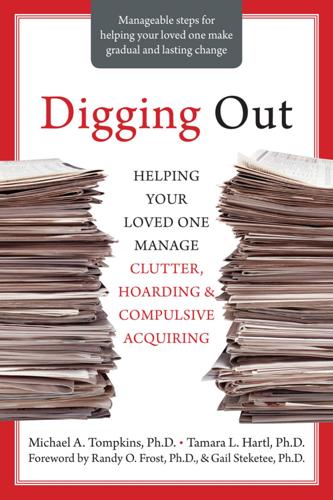
Digging Out
by
Randy Frost
Published 13 Feb 2013
Look at the following list and, in a notebook or on a sheet of paper, write down and describe the particular ways possessions enter your loved one’s home. Through the mail (catalogs, junk mail, newspapers, magazines, periodicals) Through free samples (salt or pepper packets, paper napkins, free newspapers, handbills) Through purchasing (garage, tag, or yard sales; big-box stores; thrift stores; sales; Internet shopping; TV shopping) Through searching through trash (in trash bins or Dumpsters and set-asides for bulk pick-up days) Through the routine efforts of others (friends sending articles, relatives giving gift subscriptions to magazines, people bringing free things or extras, holiday gifts) Through family inheritances (receiving furniture and china when a relative passes away) Through borrowing (libraries, tool share programs) Through stealing or shoplifting Through neighborhood foraging (picking things up off the street or on the side of the road) Identifying Harm Reduction Targets An effective harm reduction plan begins with a comprehensive assessment of all the factors that may increase or decrease your loved one’s harm potential.

Aerotropolis
by
John D. Kasarda
and
Greg Lindsay
Published 2 Jan 2009
The announcement of its location in 1965 touched off a frenzy of speculation in the pastureland of Southlake, Euless, Grapevine, Irving, and half a dozen other farm towns. Today these communities have a population of a million. The remaining acreage at Las Colinas has been sold; the Metroplex has run out of room. The last place to build is within DFW itself. The airport is planning its own strip malls, big-box stores, and convention hotels to pair with a miniature Las Colinas tucked against the fairways of its twin golf courses. Fearing this day would come, the communities surrounding DFW sued twenty years ago to stop its expansion, refusing to let it build on what was technically their land. Euless, Grapevine, Coppell, and Irving took their case to the Supreme Court, and lost.
…
That doesn’t include the year his firm spent disassembling the factory, yielding forty thousand tons of scrap metal and one hundred thousand tons of recyclable concrete. Auto plants are easy by Jacoby’s standards; try cleaning up after a steel mill’s mess. That’s what he did in midtown Atlanta to create Atlantic Station, a 138-acre constellation of high-rises, condos, townhomes, and big-box stores. Nine thousand loads of contaminated soil were extracted from the foundations of Atlantic Steel, replaced with twenty-eight hundred trees and the first LEED Silver-certified tower in the Southeast. (Ironically, some of the country’s greenest buildings stand on its most polluted sites.) To do it, he needed federal, state, and local cooperation and funds.
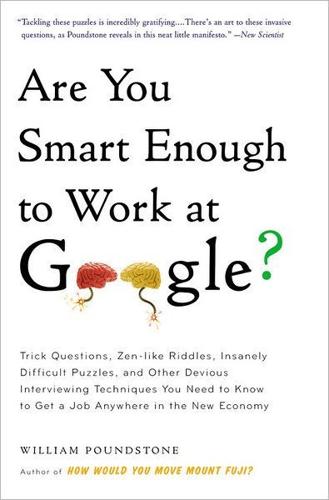
Are You Smart Enough to Work at Google?: Trick Questions, Zen-Like Riddles, Insanely Difficult Puzzles, and Other Devious Interviewing Techniques You ... Know to Get a Job Anywhere in the New Economy
by
William Poundstone
Published 4 Jan 2012
A decent guess, favoring the convenient round number, is ten residential windows per Seattleite. There are also windows at places of work, Starbucks, Nordstrom, airports, concert halls, and so forth. This probably doesn’t add all that much to the per capita total. The average cubicle has no windows. A big-box store has little surface area (and few windows) relative to its volume. The windows in public spaces like restaurants and airports are shared among the huge mass of people using them. Don’t forget windows in cars. (You might ask the interviewer whether to count them.) A car is going to have four windows at bare minimum, often twice that.
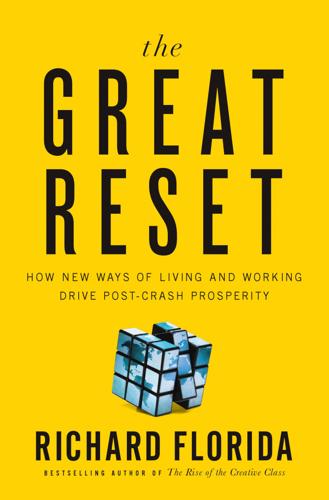
The Great Reset: How the Post-Crash Economy Will Change the Way We Live and Work
by
Richard Florida
Published 22 Apr 2010
At the height of the boom, the combination of real estate, housing, and the construction-related industries accounted for more than a quarter of the entire economies of Las Vegas, Miami, and Phoenix; more than 30 percent of Orlando’s; and upward of 40 percent of that of Naples, Florida.1 In these places, real estate, mortgage finance, and construction literally became the economy, making up a bigger piece of it and employing more workers than manufacturing, government, health care, and education combined. This created what I like to call the great growth illusion of development for development’s sake. New housing development brought new shopping malls, with chain restaurants, big-box stores, and the like providing at least the semblance of expanding jobs and growth. Of course, all these new homes needed furniture, electronics, appliances, granite countertops, window treatments, and more, necessitating even more retail. And the people flocking there needed more and more cars, which meant more car dealerships and ultimately more roads.
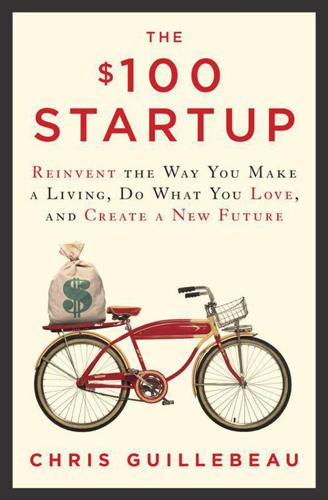
The $100 Startup: Reinvent the Way You Make a Living, Do What You Love, and Create a New Future
by
Chris Guillebeau
Published 7 May 2012
Erica Cosminsky grew her transcription team to seventeen people at one point, but by working with contractors instead of hiring employees, she retained the freedom to keep things simple. The Tom Bihn luggage factory in Seattle grew to a seven-figure operation, while remaining completely independent and turning down offers to sell its line to big-box stores. Others pursued partnerships that allowed each person to focus on what he or she was best at. Fresh out of design school and disillusioned with their entry-level jobs, Jen Adrion and Omar Noory began selling custom-made maps out of an apartment in Columbus, Ohio. Patrick McCrann and Rich Strauss were competitors who teamed up to create a community for endurance athletes.

Discardia: More Life, Less Stuff
by
Dinah Sanders
Published 7 Oct 2011
I find that, after the initial glut of buying many things for relatively less money, I spend more in a warehouse store than I would by shopping at neighborhood stores—even pricier than average ones—and end up with more than I can use or with things that I don't really need. Even sillier, I wind up buying not quite what I wanted—different brands, other flavors, higher calories—because the selection is more limited. Take a good hard look at your shopping habits and the kind of eating habits to which they're leading. Try taking a month off from the big-box stores. Remember: Locally owned, independent merchants return significantly more of their money to your local economy. Get more fresh fruit and vegetables, pick out ingredients with which to cook, or make a sandwich for tomorrow's lunch instead of a frozen entree. Visit the farmers' market and find the good bakery nearest to your house.
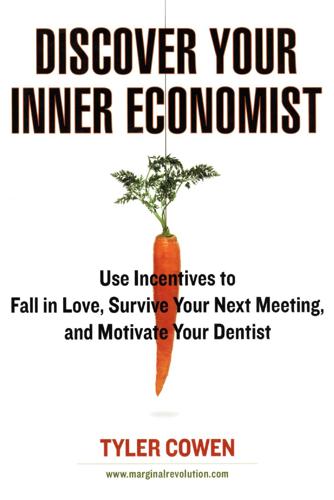
Tyler Cowen-Discover Your Inner Economist Use Incentives to Fall in Love, Survive Your Next Meeting, and Motivate Your Dentist-Plume (2008)
by
Unknown
Published 20 Sep 2008
It will try to attract a large number of customers, which usually means predictable, mainstream food, the scourge of the dining sophisticate. If I am in a hitherto unknown part of the United States, the region has immigrants, and I am looking to eat, I head away from the center of town. I look for the strip malls. The best strip malls, for food, are those without Wal-Mart, Best Buy, or other "big box" stores. Large anchor stores encourage high rents and large crowds, which are not always the right combination for interesting ethnic food. Lower rents also mean that more people can try their hand at starting a restaurant. Many more people can try to market the family cooking. Few immigrant families can afford to rent or buy a restaurant space in the middle of downtown Philadelphia, or for that matter in the middle of an upper-middle-class shopping center, such as Tysons Corner (northern Virginia), South Coast Plaza (Orange County), or Paramus Park (northern New Jersey).
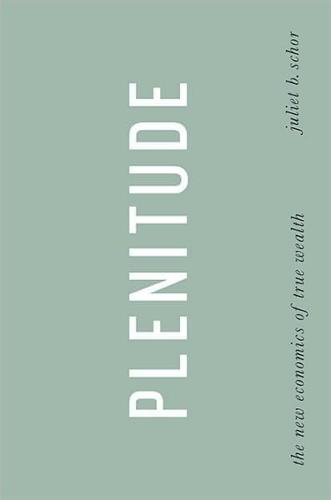
Plenitude: The New Economics of True Wealth
by
Juliet B. Schor
Published 12 May 2010
By contrast, items with dedicated uses, whether they’re kitchen appliances or specialized wardrobes, take a great ecological toll from a life-cycle perspective because they are used more infrequently. A third principle is customization, which brings us to the retail environment that supports the plenitude spending model. It’s the other end of the spectrum from the big-box store with its high turnover, low prices, and minimal service. Because the consumer is investing in fewer, more expensive items, they need to be perfect fits and remain so over time. To achieve that match, retailing should be more personal, based on communication between the designer and the consumer, and offer postpurchase product maintenance.
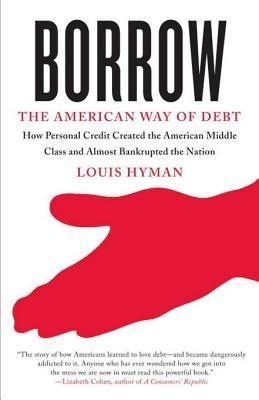
Borrow: The American Way of Debt
by
Louis Hyman
Published 24 Jan 2012
But, of course, as one discount store owner suggested, “the easiest thing to do is to open up near a shopping center because you know darn well they made an expensive survey and, if they thought it is right, it must be right.”23 Kmart turned its exclusion into an opportunity, opting instead for freestanding locations with its own 1,000-car parking lots—the first big-box stores.24 Shoppers appreciated the free parking, which was largely absent at downtown department stores. In some ways, Cunningham rode the baby-boom wave. Young people and young families came of age at a disproportionate rate in the mid- to late 1960s, and it was always the young who needed good deals.
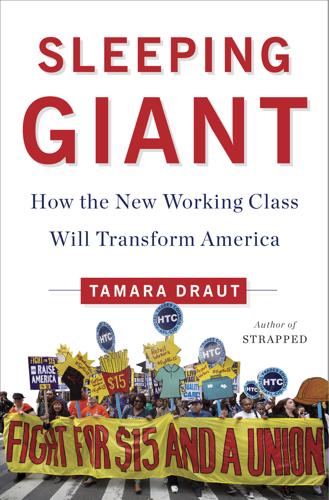
Sleeping Giant: How the New Working Class Will Transform America
by
Tamara Draut
Published 4 Apr 2016
No longer shuttered away in a factory, today’s working class is interwoven into nearly every aspect of our lives. It’s the black woman in a caretaker’s smock wearing special comfort shoes and a name tag above her heart. It’s the white man in a uniform (which he had to pay for) who punches in each day and restocks the shelves of your favorite big-box store. It’s the Latina home health aide who cares for your mom, the janitor who empties your office wastebasket, the woman who rings up your groceries, and the crew who fix the bumpy freeway you take every day to work. Yet despite how interwoven this new working class is in our lives, we don’t really know enough about it.
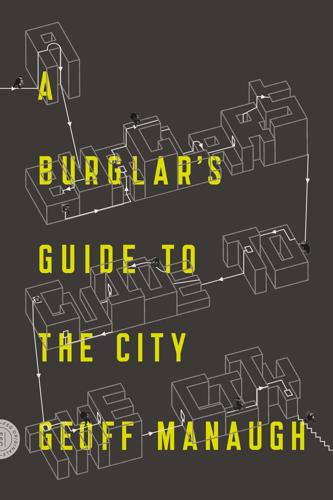
A Burglar's Guide to the City
by
Geoff Manaugh
Published 17 Mar 2015
* For Roofman, it must have looked as if the rest of the world were locked in a trance, doing the exact same things at the exact same times of day—in the same kinds of buildings, no less—and not just in one state, but everywhere. It’s no real surprise, then, that he would become greedy, ambitious, overconfident, stepping up to larger and larger businesses—but still targeting franchises and big-box stores. They would all have their own spatial formulas and repeating events, he knew; they would all be run according to predictable loops inside identical layouts all over the country. With overconfidence came carelessness, and Roofman was eventually arrested and imprisoned in North Carolina’s Brown Creek Correctional Institution.
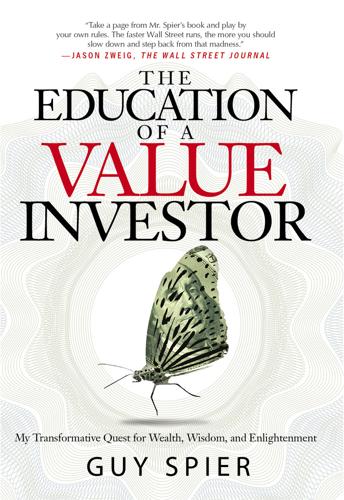
The Education of a Value Investor: My Transformative Quest for Wealth, Wisdom, and Enlightenment
by
Guy Spier
Published 8 Sep 2014
Since opening its first store in Virginia in 1993, CarMax has sold over 4 million cars, and it currently boasts about a hundred stores across America. It’s a highly efficient operation with a narrow spread between what it pays for cars and the price at which it sells them. Customers know that the sales prices in its big-box stores are among the lowest around. And there’s a huge selection of cars on display, ranging from two-year-old Mercedes SUVs to Mustang convertibles from the 1950s. There is one other key aspect to the CarMax business model: it provides customers with access to financing. In the United States, a significant portion of cars are leased.
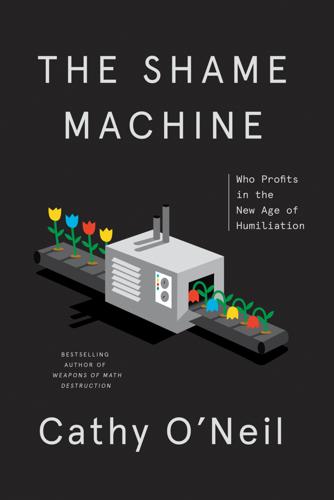
The Shame Machine: Who Profits in the New Age of Humiliation
by
Cathy O'Neil
Published 15 Mar 2022
It’s in society’s interest, as well as his own, for him to pursue training as a mechanic at a local trade school, to help take care of his four-year-old son, and, perhaps, to take his grandmother to her sessions at the dialysis center. Yet if those activities preclude him from a long commute to a minimum-wage job at a big-box store, he risks losing the skimpy benefits he might have qualified for. As society punches down on him, he and his family suffer. To roll back poverty shame, we simply must help the poor, without questions or conditions. Skip Notes * This perspective became all too clear during the COVID-19 pandemic, when a host of Republican governors blamed worker shortages in low-wage industries on unemployment checks and pulled the plug on the federally funded emergency aid.
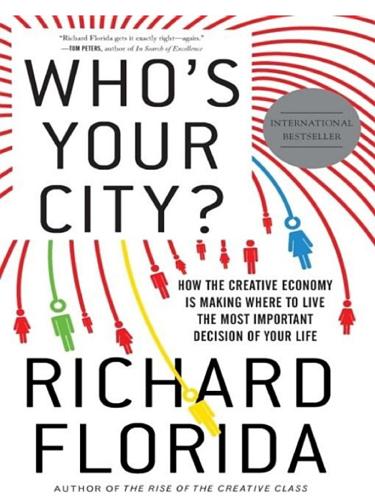
Who's Your City?: How the Creative Economy Is Making Where to Live the Most Important Decision of Your Life
by
Richard Florida
Published 28 Jun 2009
One is built on top of an old railway viaduct. It’s perhaps forty feet wide, several miles long, and passes through at least one modern building. I haven’t seen them all. After returning home to a college town, I have become an advocate for public beauty, particularly for our small downtown. I argue that, when competing with big box stores in strip malls, we cannot afford not to make downtown beautiful. People will go out of their way to spend time in beauty, and once there they will linger. Visiting alumni don’t buy artist’s prints of the local Wal-Mart. So what is it about aesthetics that makes us feel satisfied and happy with our communities?

Company of One: Why Staying Small Is the Next Big Thing for Business
by
Paul Jarvis
Published 1 Jan 2019
But Need/Want, a physical product company that sells everything from bedding to notebooks to iPhone cases, has managed to build a big business with only a tiny team. Need/Want uses scalable systems and channels to increase profits. They use prepackaged software, Shopify, to run their online store, which can handle anywhere from one order a day to over a million. They stay out of big-box stores, so they don’t need a dedicated outside sales team. They don’t do trade shows, and all their marketing efforts stem from a team of three who focus entirely on online channels, like social media, paid ads, and a newsletter (all of which can increase reach without too many extra resources to manage).
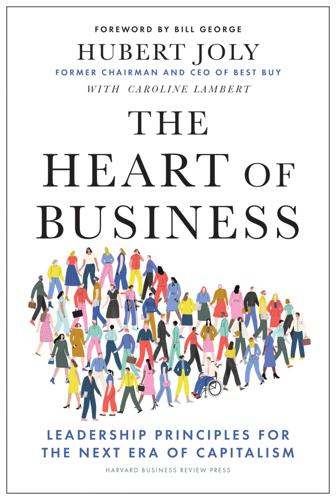
The Heart of Business: Leadership Principles for the Next Era of Capitalism
by
Hubert Joly
Published 14 Jun 2021
2 Why We Work Work is love made visible. —Gibran Khalil Gibran, “On Work” Imagine this scenario: Jordan is a three-year-old whose favorite toy is a T. rex he got for Christmas. Unfortunately, the T. rex’s head broke, and the little boy is devastated. He is in tears, and his mom brings him to the local big box store—where, unbeknownst to Jordan, Santa Claus sourced the original T. rex. Jordan’s mom explains the situation to two sales associates. Unengaged sales associates will direct Jordan’s mom to the toy shelves and let her find a replacement. At best, Jordan gets a new T. rex out of it, but he has to throw his beloved old toy into the trash.
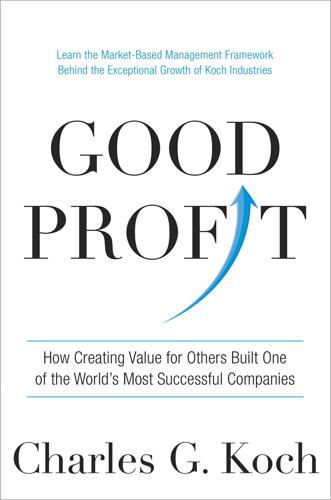
Good Profit: How Creating Value for Others Built One of the World's Most Successful Companies
by
Charles de Ganahl Koch
Published 14 Sep 2015
A successful business doesn’t earn good profit by attempting to force customers to buy its books at independent bookshops. That is bad profit. Good profit comes from responding to customers who volunteer their dollars to have books delivered to their homes by a faceless website and its algorithms—or to purchase them in a big box store that sells many other items besides books. Again, responding to customers is the proper role of business in society. The once-popular BlackBerry became unprofitable because, although efficient for direct communication, it has far fewer apps, which makes Internet access harder than with an iPhone.
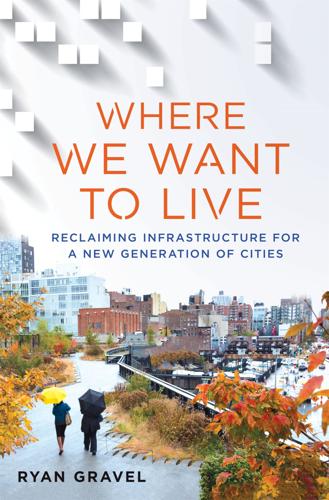
Where We Want to Live
by
Ryan Gravel
Published 2 Feb 2016
The city’s early interest in accepting the developer’s offer for a narrower, highly compromised alignment was eventually squelched by the volume and stamina of their response. Other experiences like the somewhat controversial passing of the tax increment district later that summer, a late proposal by Amtrak in January 2009 to reactivate Southern’s belt, and Grant Park’s unsuccessful battle over an ill-conceived big-box store starting in 2013, all help to illustrate the public’s attention to the project’s progress and their high expectations for its delivery. Together, they also demonstrate very clearly that the Atlanta Beltline’s political durability remains mobilized by the public’s ownership of a broad, inclusive vision.
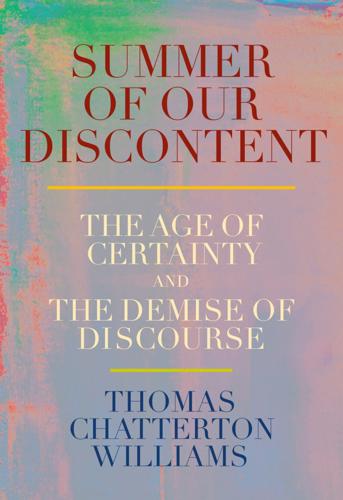
Summer of Our Discontent: The Age of Certainty and the Demise of Discourse
by
Thomas Chatterton Williams
Published 4 Aug 2025
I had lived in Europe for a decade by then, and had grown accustomed to viewing the United States, at least in part, through the eyes of a foreigner, yet aspects of this trip still alarmed me. During the summer, I’d watched grainy videos of brazen, racially inclusive bands of looters ransacking boutiques in Manhattan and big-box stores in Philadelphia (and many other locations), stripping clothing racks clean or wheeling heavy appliances through seething parking lots, but I was not prepared for the extent of the capitulation to the threat of lawlessness and mayhem that still met me in these streets, half a year after the catalyzing event.
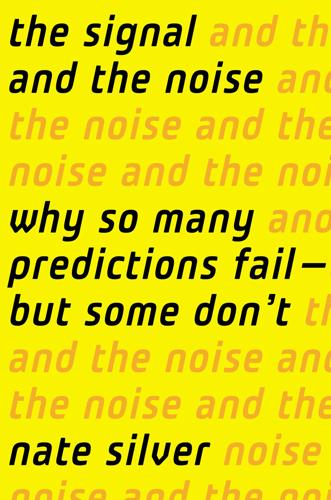
The Signal and the Noise: Why So Many Predictions Fail-But Some Don't
by
Nate Silver
Published 31 Aug 2012
These methods discourage the researcher from considering the underlying context or plausibility of his hypothesis, something that the Bayesian method demands in the form of a prior probability. Thus, you will see apparently serious papers published on how toads can predict earthquakes,50 or how big-box stores like Target beget racial hate groups,51 which apply frequentist tests to produce “statistically significant” (but manifestly ridiculous) findings. Data Is Useless Without Context Fisher mellowed out some toward the end of his career, occasionally even praising Bayes.52 And some of the methods he developed over his long career (although not the ones that are in the widest use today) were really compromises between Bayesian and frequentist approaches.
…
Grant and T. Halliday, “Predicting the Unpredictable: Evidence of Pre-Seismic Anticipatory Behaviour in the Common Toad,” Journal of Zoology, 700, January 25, 2010. http://image.guardian.co.uk/sys-files/Environment/documents/2010/03/30/toads.pdf. 51. “Hate Group Formation Associated with Big-Box Stores,” ScienceNewsline.com, April 11, 2012. http://www.sciencenewsline.com/psychology/2012041121000031.html. 52. Aldrich, “R. A. Fisher on Bayes and Bayes’ Theorem.” 53. McGrayne, The Theory That Would Not Die, Kindle location 111. 54. Sir Ronald A. Fisher, “Smoking: The Cancer Controversy,” Oliver and Boyd. http://www.york.ac.uk/depts/maths/histstat/smoking.htm. 55.
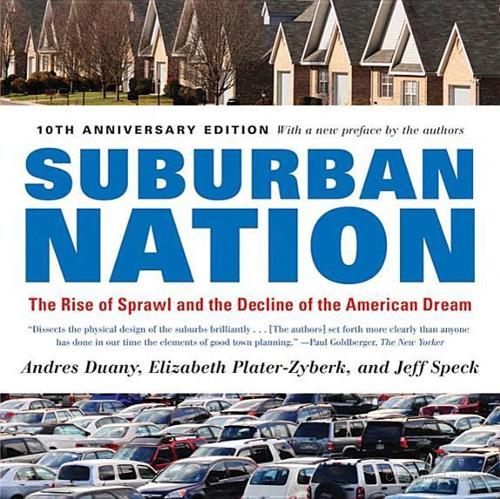
Suburban Nation
by
Andres Duany
,
Elizabeth Plater-Zyberk
and
Jeff Speck
Published 14 Sep 2010
ay Already a number of highway-intersection-spawned commercial centers have become so congested that a new generation of bypasses are being built around them. One wonders if the malls these intersections serve, like the downtowns they once replaced, will likewise decline as the traffic moves one step farther outward, to the big-box stores located on the new ring. az Carol Jouzatis, “39 Million People Work, Live Outside City Centers,” 2A. As a result of its massive highway construction, the Atlanta area is “one of the nation’s worst violators of Federal standards for ground-level ozone, with most of the problem caused by motorvehicle emissions” (Kevin Sack, “Governor Proposes Remedy for Atlanta Sprawl,” A14).
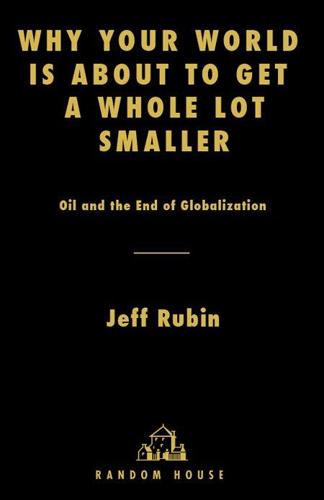
Why Your World Is About to Get a Whole Lot Smaller: Oil and the End of Globalization
by
Jeff Rubin
Published 19 May 2009
Either our living arrangements or our transportation options are going to have to change. In other words, our whole way of life depends on the price at the pumps, and that price depends on an uninterrupted supply of oil. Think about that as you drive to work. Have a look at all those car dealerships, the gas stations and garages, the drive-thrus and big-box stores surrounded by huge parking lots. Try to imagine your life—picking up dry cleaning, taking your kids to hockey, going to Home Depot on the weekend, heading to the cottage in the summer—without a car. If you are like most people in North America or Australia, or even a less car-dependent country like the UK, you probably can’t do it.
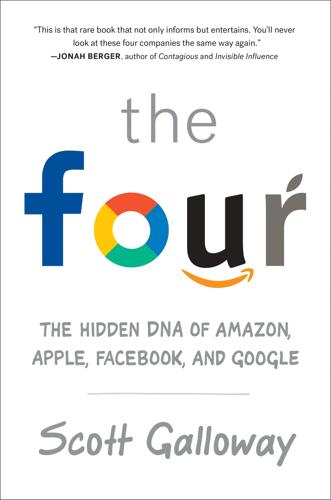
The Four: How Amazon, Apple, Facebook, and Google Divided and Conquered the World
by
Scott Galloway
Published 2 Oct 2017
Here is how “dynamic” the U.S. retail environment is: The top ten best-performing stocks of 1982 were Chrysler, Fay’s Drug, Coleco, Winnebago, Telex, Mountain Medical, Pulte Home, Home Depot, CACI, and Digital Switch.18 How many are still around today? The best-performing stock of the eighties? Circuit City (up 8,250 percent).19 In case you don’t remember, Circuit City was the now-bankrupt big-box store that sold TVs and other electronics, where “Service is State of the Art.” RIP. Of the ten biggest retailers in 1990, only two remain on the list in 2016.20,21 Amazon, born in 1994, registered more revenue after twenty-two years in 2016 ($120 billion) than Walmart, founded in 1962, did after thirty-five years in 1997 ($112 billion).22,23 In 2016, retail could largely be described as the crazy success of Amazon and the disaster that is the rest of the sector, with a few exceptions, such as Sephora, fast fashion, and Warby Parker.
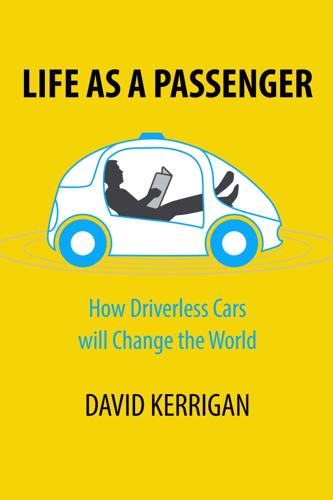
Life as a Passenger: How Driverless Cars Will Change the World
by
David Kerrigan
Published 18 Jun 2017
From the 1950s onwards, growing car ownership made it possible for cities to develop in any direction, regardless of transit availability. Places of employment become spatially separated from housing and housing decoupled from amenities. Increasingly, we shaped our towns and villages around the highways, building vast suburbs miles beyond our gritty urban centers, adding “big-box stores” and mega-malls surrounded by acres and acres of parking lots. Cars were never really necessary in early cities, nor were they the ideal cohabitant. In many respects, they worked against the founding purpose of cities: to group people together in a space where trade, social and cultural synergies would develop.
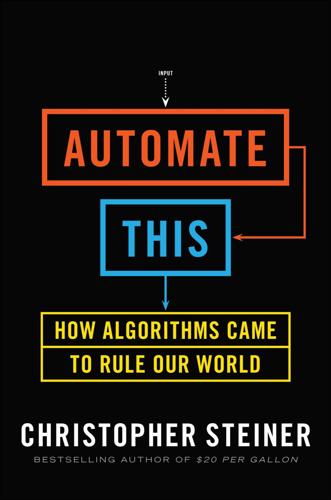
Automate This: How Algorithms Came to Rule Our World
by
Christopher Steiner
Published 29 Aug 2012
Creativity is thought of as something so incorporeal that it can hardly be taught, let alone left for a machine to carry out. But there now exist algorithms, including one with a human name—Annie—that can produce music as daring and original as the works of masters like Brahms, Bach, and Mozart, and as popular and catchy as the tunes played inside a big-box store. YOU HAVE A 41 PERCENT CHANCE OF BEING LADY GAGA As a musician and writer, Ben Novak drove the car he could afford in 2004: a 1993 Nissan Bluebird. The vehicle propelled him around his hometown of Auckland, New Zealand, just fine. Novak’s main complaint about the car concerned its radio, which could capture only two FM stations out of the dozens broadcasting in the city.
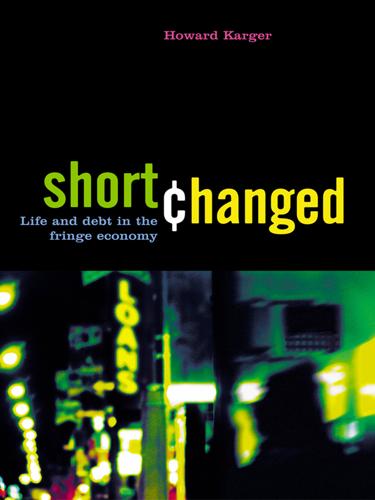
Shortchanged: Life and Debt in the Fringe Economy
by
Howard Karger
Published 9 Sep 2005
(In 2004 Wal-Mart employed 1.2 million people and reported $250 billion in revenues, or about 2% of the nation’s gross domestic product. By 2007 Wal-Mart is expected to control 35% of all U.S. food and drug sales.5) Despite having the title of “associate,” Robert earns $9.75 an hour (11 cents more than the average Wal-Mart wage of $9.64), substantially less than when he owned his own small sporting goods store. Surrounded by big box stores like Wal-Mart and Target, Robert couldn’t compete and was forced to close down. The prospects for him to get ahead at Wal-Mart are limited, since the average store has one manager, one to three assistant managers, 15 department heads, and 300–350 “associates.” On the other hand, he is one of the lucky few who have a 40-hour workweek, as opposed to the average 32-hour workweek for most Wal-Mart employees.6 Robert is one of 47% of Wal-Mart employees who receive health care benefits.
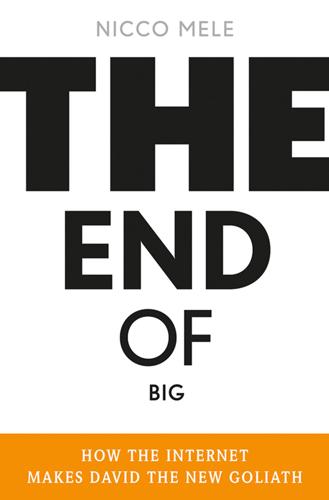
The End of Big: How the Internet Makes David the New Goliath
by
Nicco Mele
Published 14 Apr 2013
I can buy grapes from South America in my supermarket in Massachusetts for a few dollars because it is astonishingly cheap to ship the grapes over approximately 5,000 miles. But not for long. Christopher Steiner, a senior reporter at Forbes, has estimated that if (when?) gas hits $14 per gallon, WalMart (the world’s largest truck fleet) will not be able to afford to ship goods from China and other manufacturing centers to their big box stores.37 Paying $14 a gallon for gas may not be so far off; as the noted author and journalist Peter Maas has noted, “even the oil companies themselves—who are the most optimistic—say ‘maybe another 20–30 years, we’ll be able to maintain or increase the amount of oil we’re producing every day. … That is the tail end.
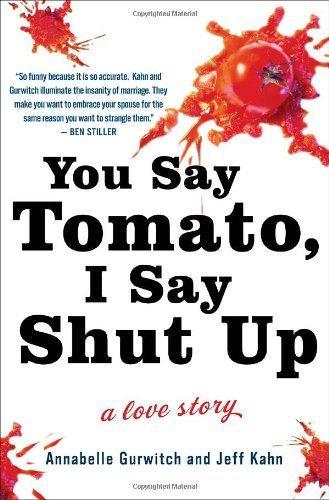
You Say Tomato, I Say Shut Up
by
Annabelle Gurwitch
Published 31 Aug 2010
I might have had a frozen expression on my face throughout our stay, but any discomfort on my part was completely overshadowed by the Sturm und Drang of Jeff Kahn’s hometown visit. From the moment we drove by the WELCOME TO ALBANY, CAPITAL OF NEW YORK sign, Jeff transformed into a petulant teenage Alexis de Tocqueville, treating us to long-winded tirades about the preponderance of big-box stores and the oppressiveness of the cookie-cutter bedroom communities that surround Albany proper with their artificial lakes and confounding nomenclature. “Turning Leaf Manor—is that a housing development or a rehab community or both?” Because he’s a major food snob and a picky eater, getting him to agree to a meal at one of the local eateries—Ruby Tuesday, T.G.I.
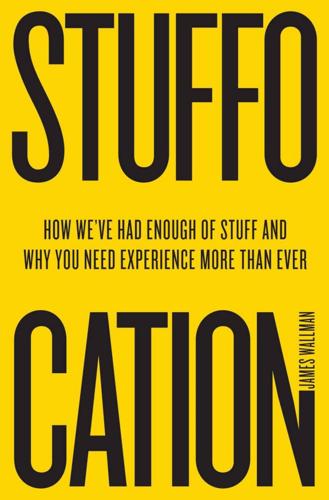
Stuffocation
by
James Wallman
Published 6 Dec 2013
Most days, you’ll find Dave – full name David Roberts – in regular blue jeans and a dark red plaid shirt. He grew up lower middle class, in an average backwater in Tennessee. It was the sort of monotonous town that is the inevitable result of mass production. It was based, if you can call it that, on the modern world’s signpost to materialism: a suburban row of big-box stores. “It was very dull,” Dave will tell you. “The sort of place where kids would drive up and down the strip and the parking lot for fun, and where you’d bump into people you knew in Walmart.” Dave now lives a regular, low-key life, in a nondescript neighbourhood, in a smallish house, in Seattle, with his two children and wife, Jennifer Roberts.
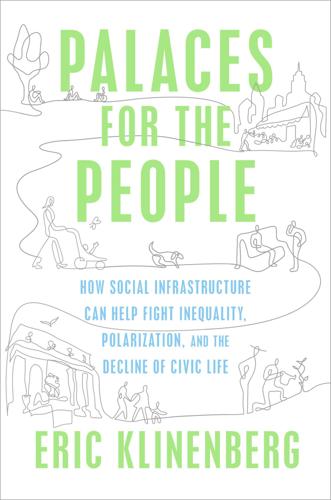
Palaces for the People: How Social Infrastructure Can Help Fight Inequality, Polarization, and the Decline of Civic Life
by
Eric Klinenberg
Published 10 Sep 2018
The new plan called for repurposing and redeveloping the large institutional buildings as community centers, art studios, small business incubators, and apartments. That wasn’t the only major change. Before the flood, in 1999, the city plan promised support for regional commercial development on major roadways and intersections, places where big-box stores could fit comfortably and parking would be abundant. After Katrina, as citizens and civic groups grew more concerned about climate change, that idea was discarded in favor of pedestrian-friendly, mixed-use commercial and residential developments that encouraged local social activity on sidewalks and streets.
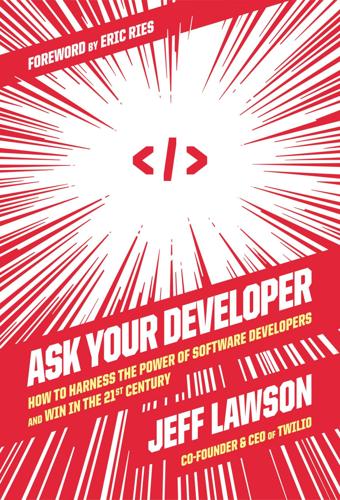
Ask Your Developer: How to Harness the Power of Software Developers and Win in the 21st Century
by
Jeff Lawson
Published 12 Jan 2021
It’s not uncommon for Y Combinator to fund multiple companies all tackling the same problem, albeit in different ways. Here are some recent RFS entries: BRICK-AND-MORTAR 2.0 We are interested in seeing startups that use brick-and-mortar commercial or retail space in interesting and efficient ways. Amazon is putting malls and big-box stores out of business. Rather than fight a losing battle with Amazon, brands need to rethink how to use retail space in ways that play to their strengths. Tesla, Warby Parker, and Peloton, for example, use brick-and-mortar locations as showrooms that complement their online sales channels. Without the need to store inventory, retail space can be used much more efficiently.
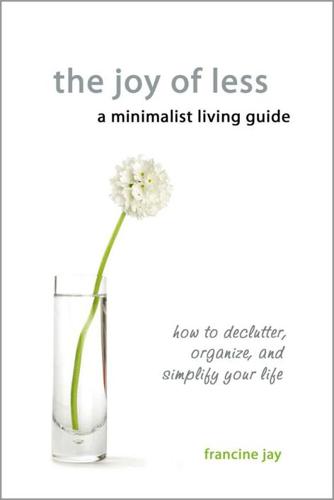
The Joy of Less, A Minimalist Living Guide: How to Declutter, Organize, and Simplify Your Life
by
Francine Jay
Breathing polluted air, and drinking polluted water, so that retailers can fill their shelves with more gizmos, and corporate executives can take home bigger bonuses. Hmm, something about that doesn’t seem quite right… But here’s some wonderful news: minimalist living sets us free! It unshackles us from the “work and spend” cycle, enabling us to create an existence that has little to do with big box stores, must-have items, or finance charges. Instead of toiling away as consumers, we can become “minsumers” instead: minimizing our consumption to what meets our needs, minimizing the impact of our consumption on the environment, and minimizing the effect of our consumption on other people’s lives.

Rule of the Robots: How Artificial Intelligence Will Transform Everything
by
Martin Ford
Published 13 Sep 2021
As automation has advanced relentlessly in factories, for example, the efforts of an individual manufacturing worker have been vastly amplified. The same has been true in sectors like retail and fast food, where the introduction of new technology as well as more efficient workplace organization, management techniques and business models—including the advent of “big box” stores and online shopping—have likewise boosted productivity. In healthcare, however, patients continue to require highly individualized attention from doctors, nurses and other skilled professionals. To be sure, new knowledge and technology have increased the quality of care and produced vastly better patient outcomes, but so far, this has not amplified the efforts of healthcare workers in the way that we have seen with factory workers.
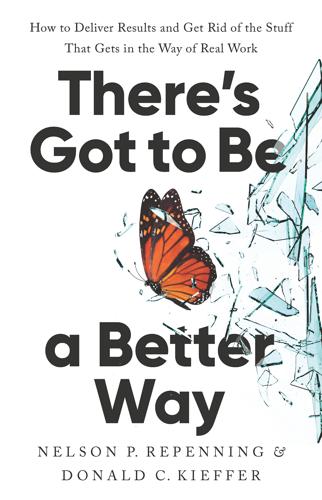
There's Got to Be a Better Way
by
Nelson P. Repenning
and
Donald C. Kieffer
Published 26 Aug 2025
Between the products and all the different models of each, we had a few thousand part numbers to manage and a supply chain that stretched from the United States to Mexico and China. The company had grown quickly in the last few years, acquiring small competitors and constantly adding new products and product lines. The customer base had also changed. It still had the industrial business, but the retail side, the big-box stores, had grown to dwarf the network of distribution centers that supplied the small companies that constituted our traditional business. The big retailers weren’t afraid to throw their weight around if they didn’t get what they wanted when they wanted it. Every sales season, they threatened to reduce our shelf space if we didn’t improve on price and fine us if we missed a delivery.

Hawaii
by
Jeff Campbell
Published 4 Nov 2009
Hwy 11 goes south and is called Kanoelehua Ave in town; further south, it becomes the Hawai′i Belt Rd and leads to the Puna district, Hawai′i Volcanoes National Park and Ka′u. South of the airport, Kanoelehua Ave is lined with shopping malls; this is Hilo’S main retail district, complete with a Wal-Mart, a multiplex cinema and all the other big-box stores. Return to beginning of chapter INFORMATION Bookstores Basically Books (Map;961-0144, 800-903-6277; 160 Kamehameha Ave; 9am-5pm Mon-Sat, 11am-3:30pm Sun) One of the island’S best bookstores; carries the full range of Hawaiian titles, plus kids’ books, music, travel guides and topo maps.
…
Central Maui also holds other watery wonders: a dazzling tropical aquarium, two waterbird sanctuaries and rainforested ′Iao Valley. KAHULUI pop 20,150 All roads lead to Kahului. It’s home to the island’s gateway airport and cruise-ship ports. Just about everything that enters Maui comes through this workaday town thick with warehouses, big-box stores and shopping centers. Hardly a vacation scene, you say. True, but if you dig a little deeper you’ll find more to your liking. You have to go island-style to have fun here: talk story with the locals at the Saturday swap meet, take in a concert on the lawn of the cultural center or join the wave-riding action at Kanaha Beach.
…
But, in Lihu′e and its vicinity, the ethnic makeup still reflects the island’s plantation history, with substantial numbers of Japanese and Filipino residents, as well as Caucasians and mixed-race people. Now Lihu′e’s economy relies not only on tourism but on retail, which is obvious from all the big-box stores at Kukui Grove Shopping Center. You might not think an island of 63,000 needs a Costco but, in October 2006, it got one. Return to beginning of chapter ORIENTATION Lihu′e’s focal points are Nawiliwili Bay, the island’s only major harbor, and Lihu′e Airport, the island’s only major airport.
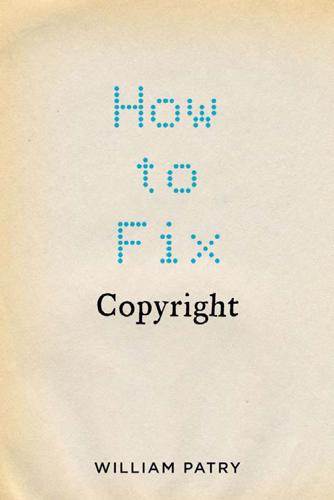
How to Fix Copyright
by
William Patry
Published 3 Jan 2012
The analog world was one of fragmented markets, each controlled by gatekeepers, with overall access controlled by a central gatekeeper: in the case of music, the record label or music publisher (often divisions of the same media corporation) to whom the composer or performer had to assign rights. Royalties were received, if ever, only after cost recoupments, including recording studio time, as well as manufacturing and promotion costs. CDs were in record stores or big-box stores like Wal-Mart which exercised content control. MTV provided the outlet for music videos. Radio play was controlled by large companies such as Clear Channel. Today, bands or individual performers can be their own studio technicians, manufacturers, distributors, retailers, and promoters, LAW IS NOT THE SOLUTION TO BUSINESS PROBLEMS 145 through no- or small-cost websites and social networks.
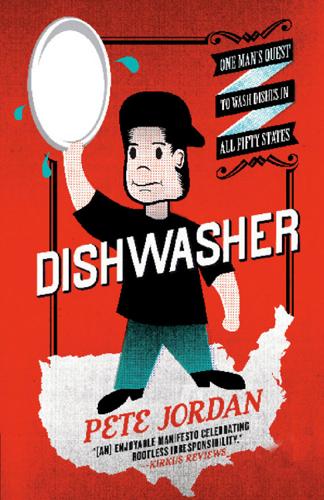
Dishwasher: One Man's Quest to Wash Dishes in All Fifty States (P.S.)
by
Pete Jordan
Published 1 May 2007
For weeks, the talk of the town had been the closing of the 120 Dishwasher old Wal-Mart and the opening of the new, farther-out-oftown, superenormous Wal-Mart. Around the restaurant, as well as around town, the question on everyone’s lips was the same: “Have you been yet?” I hadn’t been yet. So I went to see what all the fuss was about. While following the sidewalk-less boulevard out of town, I got a bad feeling as I lumbered past all the big-box stores and drive-throughs. After finally reaching the store, within minutes of entering I became disoriented, developed a rare headache and had to flee. Though my first Wal-Mart experience lasted no longer than six or seven minutes, it made a deep impression on me. If municipal strolling was limited to this monstrosity’s aisles, then I knew I wouldn’t be able to stay settled in a town like this for long.
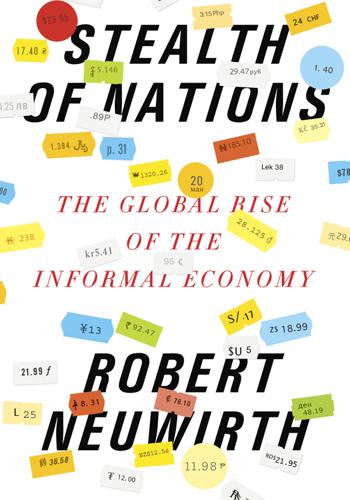
Stealth of Nations
by
Robert Neuwirth
Published 18 Oct 2011
Before the street laborers could receive their pay, the administrators would have to draw their salaries, and there would be a deduction to pay the expenses of buying and maintaining the trucks and purchasing fuel. These are the values of the modern economic system. Outsourcing is okay because it is a rational and efficient choice: multinational companies can realize massive savings on labor costs by moving jobs to low-wage countries. Similarly, promoting big-box stores and driving out small retailers is okay because larger scale cuts down on overhead and reduces the need for redundant labor, allowing products to be sold more cheaply. Compare this with the haphazard street market economy. Alaba International Market has dozens of merchants selling essentially identical flat-screen TVs.

Food and Fuel: Solutions for the Future
by
Andrew Heintzman
,
Evan Solomon
and
Eric Schlosser
Published 2 Feb 2009
It’s as though the world’s energy system, left unchecked, engineers its own crisis; new solutions are often transitory, effectively mere stopgap measures within a limited economic horizon. This fault is increasingly evident outside of North America, where economic pressures and lack of wealth show systemic flaws more clearly. For example, China’s incredible thirst for energy feeds not only a booming export market accelerated by North America’s big-box stores but also the hungry appetites of an emergent middle class across Asia, one that rivals 1950s America for its growth in rates of car ownership and consumer accumulation. Faced with today’s estimated 170 million itinerant workers and continued labour uprisings, Mao Zedong would have been hard-pressed to discern parts of modern China from the industrial England of Karl Marx.
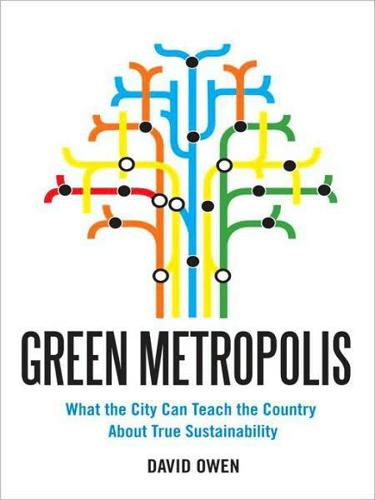
Green Metropolis: Why Living Smaller, Living Closer, and Driving Less Are Thekeys to Sustainability
by
David Owen
Published 16 Sep 2009
Further complicating all of this is the fact that the sprawling, wasteful society we Americans have built for ourselves remains extraordinarily appealing, not only to ourselves but also to people all over the world, even as the cost of maintaining it has pushed many Americans to the economic breaking point and beyond. I like finding bargains at the big-box stores that have eviscerated the village green in the sprawling town next to my town (even though I also love the village green), and I love living three minutes from a golf course, and I have never truly regretted moving away from Manhattan. I have a neighbor who does virtually nothing in his very large yard other than mowing it with a riding lawnmower—yet cutting his grass is one of the major recreational satisfactions of his life, an opportunity for reflection and meditation, an escape from telephones and children and e-mail, an activity that, unlike most of his life’s other activities, yields immediate, tangible, cumulative results.

vN: The First Machine Dynasty (The Machine Dynasty Book 1)
by
Madeline Ashby
Published 28 Jul 2012
Kneeling, Amy dug a small hole in the ground and coated her hands with dirt. She wished she had mud, instead. It wouldn't really stop the burn once she stuck her hands in the garbage, but it might delay it for a while. She'd have to rely on her mods to take care of the rest. The garbage dump wasn't actually that big. It was roughly the size of the big-box store they had visited earlier, and sat on a square of green spongy material, sort of like the stuff that got sprayed over oil spills, when there were more of those. The sponge spanned the entire width of the dump, from fencepost to fencepost. It was darker and plumper under each pile of garbage. If Amy could get some of it on her hands, it might absorb the acid – maybe even the electricity from the fence, too.

How Music Got Free: The End of an Industry, the Turn of the Century, and the Patient Zero of Piracy
by
Stephen Witt
Published 15 Jun 2015
Beyoncé released a surprise self-titled “visual” album with 17 attached videos, exclusively sold through Apple. Radiohead’s Thom Yorke pulled his work from Spotify and dumped his album Tomorrow’s Modern Boxes onto BitTorrent. Taylor Swift pulled her work too, then sold nearly two million copies of her album 1989 in a month, the bulk of those as compact discs at big-box stores. Retail still meant leaks, but the industry was taking better precautions. Kanye West had been a favorite target for RNS for years. In 2011, he struck back. An article in Billboard detailed the “near-military-scale planning” he took to keep his collaborative album Watch the Throne in-house, storing the masters on hard drives locked in waterproof “Pelican” cases that never left the sight of his studio engineers.
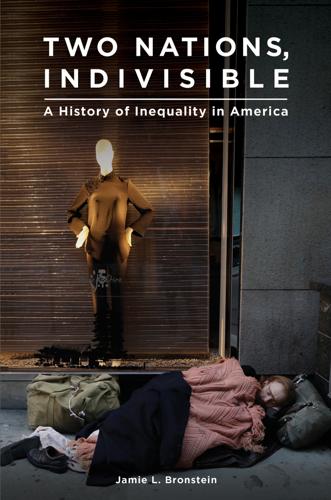
Two Nations, Indivisible: A History of Inequality in America: A History of Inequality in America
by
Jamie Bronstein
Published 29 Oct 2016
Time in prison and out of the labor force translates into fewer skills, an even lower wage, and tremendous difficulties in actually getting hired.63 GLOBALIZATION AND FREE TRADE While incarceration of young black men caused the statistical illusion that inequality was slowing in America in the 1990s, the jobs available were becoming more polarized into high-wage management jobs and low-wage service sector jobs with no hope of serving as a stepping stone to a middle-class career.64 During the 1980s, improvements in communications technology and the expansion of “big box” stores like Walmart and Target provided greater markets in the United States for goods either produced or finished inexpensively overseas. Factories in Asia could quickly adapt to slight product changes.65 Companies that could do so in the 1990s cut their costs by offshoring portable jobs, maximizing profit through lower input costs (it is estimated that labor costs are “58 to 72 percent lower in China and 22 to 62 percent lower in Mexico”), but at the same time contributing to American unemployment.66 Computers and telecommunication advances enabled companies to use smaller workforces to accomplish their goals, also helping to increase unemployment.67 Free trade became another vector of inequality during the Clinton administration, in the form of the North American Free Trade Agreement (NAFTA).

The Glass Hotel
by
Emily St. John Mandel
Published 14 Jun 2020
He could have saved considerable time by flying into one of the tiny airports further north, but he wanted to see more of Vancouver Island. It was a cold day in November, clouds low overhead. He drove north in a gray rental car through a series of gray towns with a gray sea intermittently visible on his right, a landscape of dark trees and McDonald’s drive-throughs and big-box stores under a leaden sky. He arrived at last in the town of Port Hardy, streets dim in the rain, where he got lost for a while before he found the place to return the rental car. He called the town’s only taxi service and waited a half hour until an old man arrived in a beat-up station wagon that reeked of cigarette smoke.
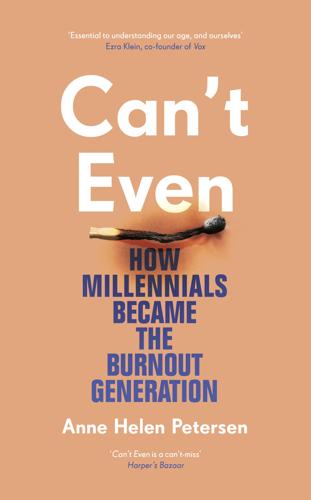
Can't Even: How Millennials Became the Burnout Generation
by
Anne Helen Petersen
Published 14 Jan 2021
Which is why freelance work, with the “options” that accompany it, has become so alluring: The structure of formal work, whether in a fast food restaurant or a law firm, has become so stressful that going freelance, either within one’s field or working in the gig economy, seems like a perfect solution. The Fetishization of Freelance Labor Over the course of the Great Recession, over 8.8 million jobs were eliminated in the United States alone. Americans lost jobs in construction, at colleges, at nonprofits, at law firms, and at big-box stores going out of business. They lost jobs in recreation, at newspapers, at public radio stations, at car factories and startups, in finance, in advertising, and in publishing. In the past, recessions have busted the job market, but then recovery has rebuilt it: The jobs disappeared as companies tightened their belts, then reappeared as they felt confident expanding.
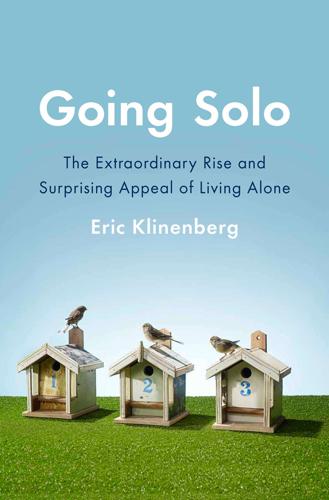
Going Solo: The Extraordinary Rise and Surprising Appeal of Living Alone
by
Eric Klinenberg
Published 1 Jan 2012
When they die, or decide to move into something smaller, we’ll have more single-family houses than we know what to do with.” As he sees it, what Montgomery County and others like it clearly do need is more diverse and affordable housing choices, as well as more small-scale commercial development—not big-box stores or strip malls, which require automobiles and do clog up local roadways, but stores and restaurants that residents near modest downtown suburban areas could reach on foot. “We’re starting to see some development for the DINKS—dual income, no kids—families. Now I want to get some projects for SINKS [single income, no kids] to break ground, and I’ve told everyone that Generation Y wants to move here.
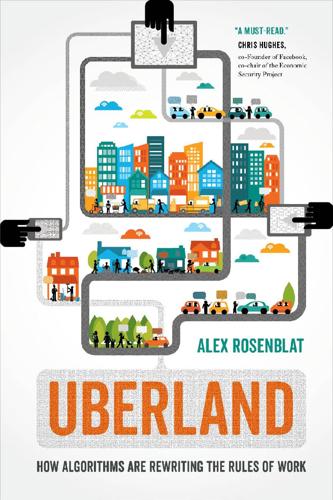
Uberland: How Algorithms Are Rewriting the Rules of Work
by
Alex Rosenblat
Published 22 Oct 2018
Like Dontez, he used to work at a big-box retail store, but he got tired of it after seven or eight years. “My son is fourteen months old; I can spend more time watching him. I got sick of paying three hundred dollars a week for day care,” he acknowledges. His significant other has two jobs, working part time at the same big-box store while also serving as an operational manager at a second big-box retailer. We circle around the entrance a few more times as the GPS directs us to make multiple U-turns onto the same road, while he wonders aloud if we should take a closer look at the map. We pull into a gas station, and I gently intercede when I notice he hasn’t yet pressed the “Start Trip” button, which indicates to the app that he has the passenger and is ready to take her to her destination.

What Patients Say, What Doctors Hear
by
Danielle Ofri
Published 1 Feb 2017
The hardest time of the year was the carbo-clysmic gauntlet that stretched from Thanksgiving to New Year’s. You couldn’t squeak two feet down the linoleum school corridors without running into a plate of doughnuts or a bag of chocolate-covered pretzels or a vat of caramel corn the size of an oil drum that someone had lugged in from a big-box store in the suburbs. Leftover pumpkin pies and apple pies showed up in the teachers’ lounge. There were bowls of chocolate Kisses in the principal’s office and candy canes taped to any surface that wasn’t plastered with tinsel or book reports. Extra cupcakes from class parties piled up on the counters of the main office.
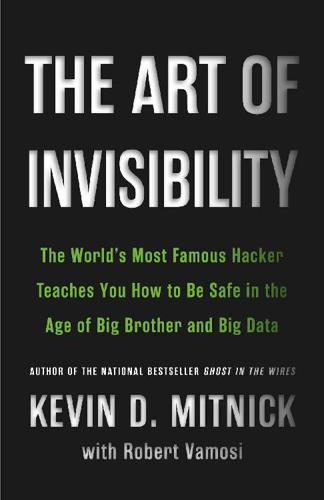
The Art of Invisibility: The World's Most Famous Hacker Teaches You How to Be Safe in the Age of Big Brother and Big Data
by
Kevin Mitnick
,
Mikko Hypponen
and
Robert Vamosi
Published 14 Feb 2017
Providing a made-up name or someone else’s Social Security number is against the law and is probably not worth the risk. We’re trying to be invisible online, not break the law. I recommend having the cutout purchase Vanilla Visa or Vanilla MasterCard $100 gift cards from a chain pharmacy, 7-Eleven, Walmart, or big box store. These are often given out as gifts and can be used just as regular credit cards would be. For these you do not have to provide any identifying information. And you can purchase them anonymously, with cash. If you live in the EU, you should anonymously order a physical credit card using viabuy.com.
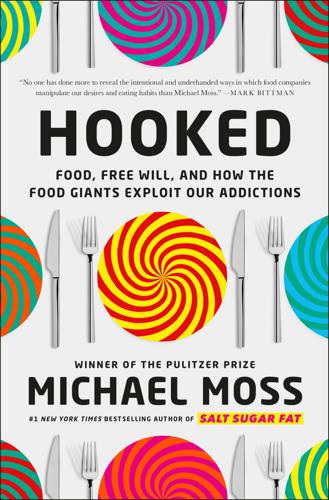
Hooked: Food, Free Will, and How the Food Giants Exploit Our Addictions
by
Michael Moss
Published 2 Mar 2021
The stores need to sell their versions for less money, which requires manufacturing them for less, and this is where the flavor houses prove themselves to be most valuable to the food industry. Their job is to find ways to mimic the iconic brands’ flavor while using cheaper ingredients. As Sansone, the flavorist, puts it, “The big box stores want something that smells like a name brand, but they have to cost cut it.” Real vanilla, for example, is a fantastic creation of nature, having a vast array of natural flavor compounds that give it an extraordinary depth. But it comes from orchids in Madagascar at exorbitant prices that fluctuate wildly; in 2019, vanilla beans cost $272 a pound.
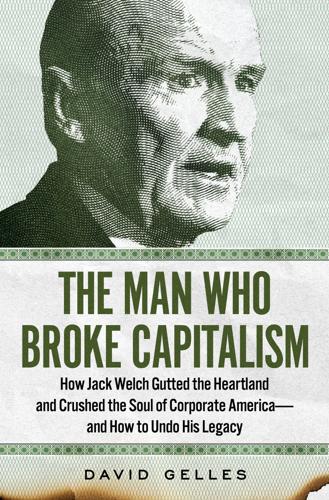
The Man Who Broke Capitalism: How Jack Welch Gutted the Heartland and Crushed the Soul of Corporate America—and How to Undo His Legacy
by
David Gelles
Published 30 May 2022
The wealth is being clustered geographically, too, with superstar companies concentrated in urban centers, rather than the Rust Belt cities and rural areas that had thrived during the Golden Age. Places like Erie and Schenectady—where GE once employed thousands—are languishing, while Denver and Boston boom. Coders, management consultants, and tax attorneys all do well, while workers without advanced degrees, and those toiling in e-commerce warehouses and big box stores, are worse off. That’s not only because only a tiny sliver of workers receive stock as part of their compensation. It’s also because wages have been falling for decades now. Had the federal minimum wage simply kept up with inflation since 1968, it would be more than $24 an hour. Instead, the minimum wage remains just $7.25, an hourly rate that will not keep someone above the poverty line in most of America.
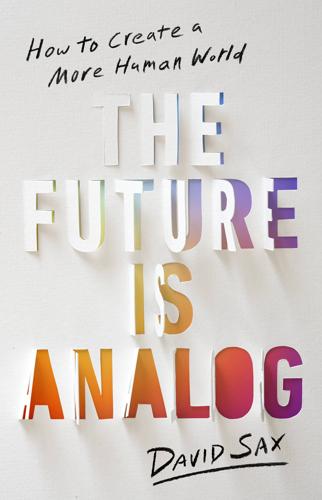
The Future Is Analog: How to Create a More Human World
by
David Sax
Published 15 Jan 2022
Bookshop was an ant facing an elephant, and the millions of consumers who bought books on Amazon each day were unlikely to abandon it for something with a nicer backstory. But he was adamant that the market had room for all sorts of commerce. Independent bookstores had been steadily growing for the past decade, after years of contraction in the face of big box stores and Amazon, and they held their own even through the pandemic’s darkest days. This was thanks to readers, a group as independent and strong-minded as the stores they shop in, who value the place community plays in the world of books. There was no turning back the clock on what Amazon had unleashed, but there were enough conscious consumers of books (and food, and clothing, and wetsuits) that opportunities abounded for alternatives to the monoculture of a future where you could only buy from one store.
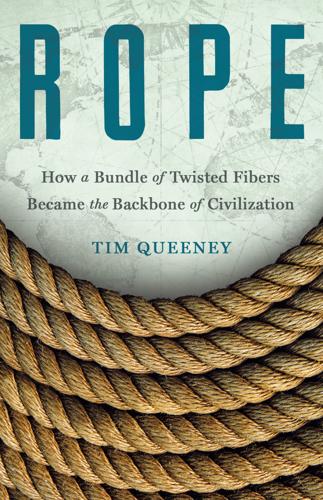
Rope: How a Bundle of Twisted Fibers Became the Backbone of Civilization
by
Tim Queeney
Published 11 Aug 2025
ENTER ROPE It’s all very good to make a sharp, light spearpoint and to have a shaft of wood prepared to accept the deadly warhead, but how do we attach it in a way that can withstand the rigors of repeated use? One way that spearpoints were set on their shafts was with a sticky bed of pine tar or some variety of tree pitch. A good start, but that wasn’t nearly strong enough. Long before duct tape was available in every big box store endcap, the Boy Scouts gave out merit badges for attaching things to other things using rope in a technique called lashing. In the case of our flake spearpoint, it was set in a bed of sticky pine, and then cordage, rope’s smaller incarnation, was wound around the base of the flake several times and then tied.
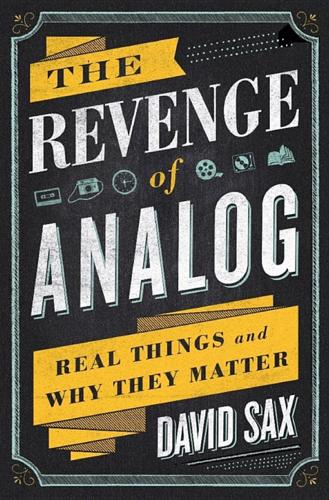
The Revenge of Analog: Real Things and Why They Matter
by
David Sax
Published 8 Nov 2016
Other new bookstores that have opened up in the past few years in New York and elsewhere still approach bookselling in a way that hasn’t markedly changed since Gutenberg invented the printing press. The big difference is that they are able to turn perceived analog weakness into strength, and sell that as a desirable lifestyle choice to customers. This new generation of bookstores all define themselves as an enlightened, more pleasurable retail alternative to Amazon and big-box stores. They are warm, inviting, often beautiful spaces, with friendly, knowledgeable staff, refined inventory, and a sense of place. Most support local authors, hosting reading groups, book clubs, and nightly events. They take all the things Amazon sees as liabilities (physical real estate, human workers, limited inventory) and turn them into assets.
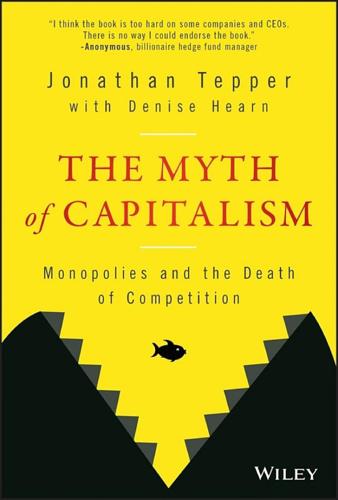
The Myth of Capitalism: Monopolies and the Death of Competition
by
Jonathan Tepper
Published 20 Nov 2018
He spoke to the average worker's fears. In the 2016 election Hillary Clinton won 472 counties that represented 64% of US Gross Domestic Product, compared to the 36% for the 2,584 counties that voted for Donald Trump. In many small towns, a single meat packing company, insurer, hospital system, or big box store owned by a distant company has now replaced locally owned businesses. Trump was tapping into a profound, justified anxiety across the country. The wage squeeze is even greater if you are in a small town, with a small labor market facing off against corporations. Monopsony means workers have little choice and little power.
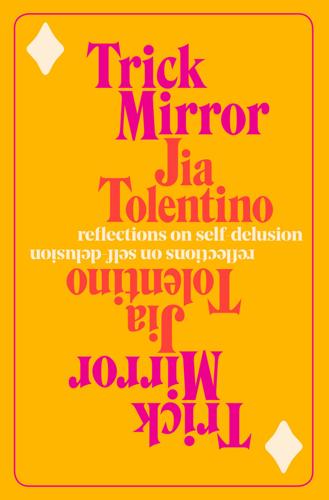
Trick Mirror: Reflections on Self-Delusion
by
Jia Tolentino
Published 5 Aug 2019
The smartest thing about the movie is the way Taylor was written—not as a super-strategic phony, but as a regular, vapid, genuinely sweet girl whose identity had been effectively given to her, without her knowing it or really caring, by the winds and trends of social media. The movie ends—spoiler—with Ingrid attempting suicide and then becoming virally famous as an inspirational yet cautionary tale. The story has shown up in books, too—big-box-store novels and literary ones. In 2017, Sophie Kinsella, of the hugely popular Shopaholic franchise, published a book called My (Not So) Perfect Life, featuring a young protagonist named Katie who is obsessed with the social media presence of her perfect boss, Demeter, memorizing and trying her best to reproduce the details of the body, the clothes, the family, the social life, the house, and the vacations that Demeter presents.
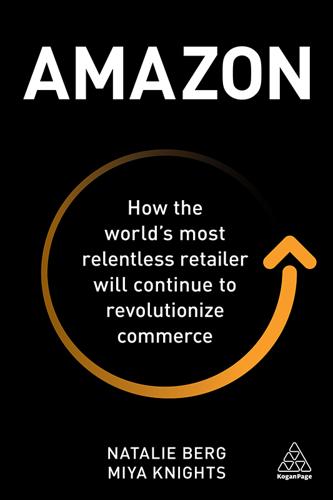
Amazon: How the World’s Most Relentless Retailer Will Continue to Revolutionize Commerce
by
Natalie Berg
and
Miya Knights
Published 28 Jan 2019
Back in 2012, Natalie and esteemed retail analyst and co-author Bryan Roberts predicted that Walmart would reach saturation with its Supercenter format by 2020.31 This was based on three factors: discount conversion opportunities drying up, slow population growth and the cannibalization of bricks and mortar sales by online retail. Today, the superstore concept is at serious risk of becoming obsolete in many parts of the world. After two decades of opening hundreds of big-box stores annually, in 2017, Walmart US opened less than 40.32 We have yet to see a net decline in store numbers, but we stand by our previous claim that the format will reach saturation in the very near future. The ‘death of the hypermarket’ is far more pronounced in markets such as the UK where the retail sector is more heavily influenced by online and discount channels which pose the largest threat to superstores.

Mindf*ck: Cambridge Analytica and the Plot to Break America
by
Christopher Wylie
Published 8 Oct 2019
When Kogan joined the Trinidad initiative in January 2014, we were just launching the early trial phases of the America project with Bannon. Based on our qualitative studies, we had some theories we wanted to test, but the available data was insufficient for psychological profiling. Consumer information—from sources like airline memberships, media companies, and big-box stores—didn’t produce a strong enough signal to predict the psychological attributes we were exploring. This wasn’t surprising, because shopping at Walmart, for example, doesn’t define who you are as a person. We could infer demographic or financial attributes, but not personality—extroverts and introverts both shop at Walmart, for example.
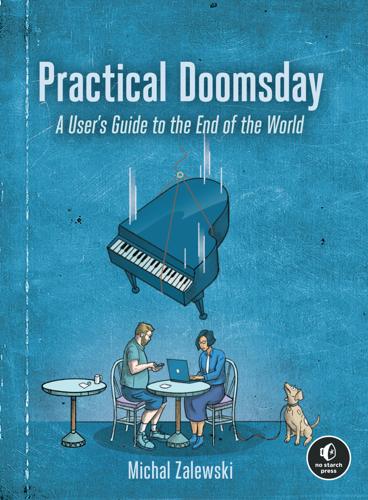
Practical Doomsday: A User's Guide to the End of the World
by
Michal Zalewski
Published 11 Jan 2022
Several weeks later, mask mandates rolled out across the nation, but the continued shortages of specially designed N95 respirators (made out of electrostatically charged plastic fibers) led to the use of loosely fitting face coverings fashioned out of ordinary cloth and offering considerably less protection to most.2 Confusingly, many health authorities prohibited the use of common N95 respirators with exhalation valves, even though they almost certainly did more to protect the populace than a piece of cotton with ear loops. Other poorly substantiated promulgations followed: California designated recreational marijuana dispensaries as essential businesses and advised people to sing or chant only “below the volume of a normal speaking voice,”3 while in Michigan, big box stores were allowed to stay open, but only if they cordoned off the sections with garden supplies and paint.4 In coastal regions around the world, police sometimes chased and arrested lone surfers and beachgoers5—seemingly to crack down on insubordination, not to manage any well-articulated health risk.

Golden Gates: Fighting for Housing in America
by
Conor Dougherty
Published 18 Feb 2020
The explosion of street homelessness was accompanied by a simultaneous explosion of street homeless research, and the collective tone of social scientists and books like Over the Edge and The Homeless was that it was hard to blame one thing when the real answer seemed to be everything. Good-paying factory jobs were shriveling. Unemployment spells stretched from months to years. A surge in minimum-wage jobs in big-box stores and elsewhere helped to create a vast new underclass of adults who worked full time but still had trouble paying utilities and needed help from food stamps. Those at the very bottom fell lower: “deep poverty,” people whose few-thousand-dollar-a-year income put them more than halfway below the poverty line, grew throughout the 1980s and by 2018 accounted for about half of poor households.

Dead in the Water: A True Story of Hijacking, Murder, and a Global Maritime Conspiracy
by
Matthew Campbell
and
Kit Chellel
Published 2 May 2022
THE CAPTAIN AFTERWORD Photographs Acknowledgments Photo Credits Notes Index INTRODUCTION The oceans make the modern economy possible, providing the most convenient and affordable means to move the things we buy, sell, build, burn, eat, wear, and throw away. On any given day, sneakers stitched together in Cambodian sweatshops are packed into forty-foot containers, then winched by dockside cranes into ships bound for Europe, where they will line the shelves of big-box stores. Oil sucked from a 150-million-year-old deposit beneath the Saudi desert travels the aquatic highway of the Suez Canal, ultimately filling the tanks of Ford sedans in New Jersey. Iron ore gouged from the red earth of Western Australia is loaded into cavernous bulk carriers and shipped to China, where it’s forged into the steel that frames Shanghai skyscrapers.
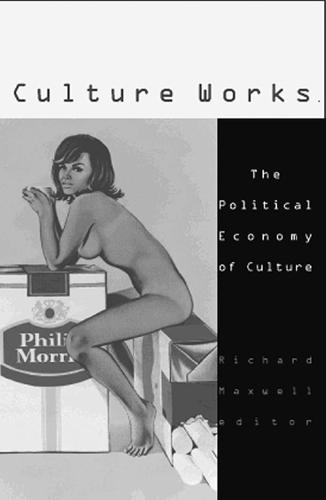
Culture works: the political economy of culture
by
Richard Maxwell
Published 15 Jan 2001
Putting up barriers to rapid exurban growth is prudent and conservative in a good sense, because the destruction of the natural environment and older social landscapes is not an easily reversible process. Along these lines, activists in many small communities are working hard to derail the coming of big-box stores and megamalls to their towns, albeit against the enormous odds of corporate wealth and behind-the-scenes politicking.90 The overextension of shopping also helps to destroy cultural environments. The reverse face of the retail boom is the cumulative neglect of 189 Susan G. D av i s spaces, places, and activities that cannot be penetrated by commerce or accommodated to personal consumption; in other words, it is part of what many now feel is the inexorable commercialization of more or less everything.
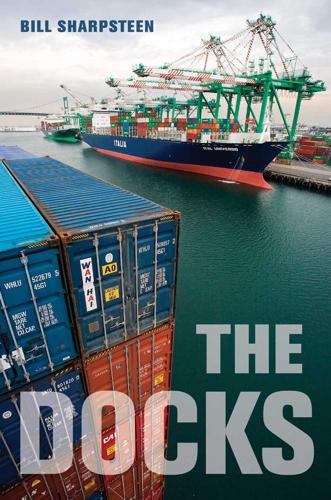
The Docks
by
Bill Sharpsteen
Published 5 Jan 2011
There’s nothing special about flipping on a light switch, and there’s certainly nothing remarkable these days about imports or the semi-exotic shipping industry that brings imported products here across an ocean that no longer seems all that huge. Those wonderful walnut picture frames sold at the local discount big-box store may come from China, but they don’t even look “imported.” Strictly speaking, the culture-neutral frames may not be a completely Chinese product, given that the walnut might have been shipped to China from the United States, manufactured into frames, and then sent back. If nothing else, the only way most people recognize an import is by the impossibly low price (so low that you’d rather not know how much they paid the person who made it).
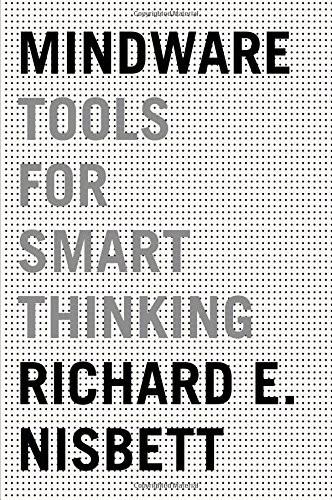
Mindware: Tools for Smart Thinking
by
Richard E. Nisbett
Published 17 Aug 2015
Judith, a talented young chemist who we thought was surely headed for a distinguished career in science because of her energy and intelligence, has left the field to become a social worker. She must have a fear of success. Too easy to generate that theory and too easy to apply it. And what could convince us that fear of success was not involved? Bill, mild-mannered neighbor, erupted in rage toward his child at the big-box store. He must have an angry and cruel streak that we hadn’t previously seen. The representativeness heuristic, the fundamental attribution error, and the belief in the “law” of small numbers aid and abet one another in producing such theories willy-nilly. Once generated, evidence that should be considered as disconfirming the hypothesis can be explained away too easily.
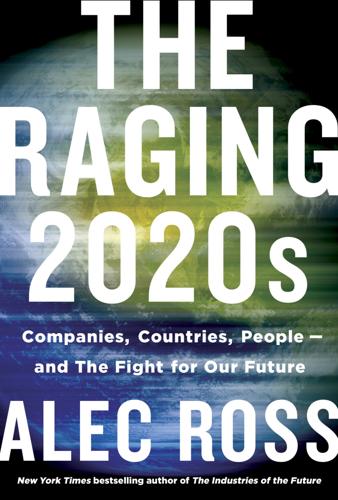
The Raging 2020s: Companies, Countries, People - and the Fight for Our Future
by
Alec Ross
Published 13 Sep 2021
This dynamic is especially concerning in western and central Europe, where small- and medium-sized businesses are more predominant than they are in the United States and more deeply embedded in local culture. Small businesses in countries including Italy, France, and Spain were not as impacted by the mall-ification and big box stores that wiped out America’s main streets. Now, these smaller firms are having to hold out against digital platforms and against an overall economic tide accelerated by COVID-19 that puts them in a more tenuous position. Walking through the neighborhood in the university district of Bologna, Italy, where I lived during my time there as a professor, I am struck by the number and variety of locally owned bookstores, grocery stores, and myriad other specialty retailers that would never stand a chance in the United States.

Lonely Planet's Best of USA
by
Lonely Planet
Snooze in the building that gave birth to the skyscraper, or in one of Mies van der Rohe’s boxy structures, or in a century-old art deco masterpiece. Choose to stay in the Loop for boutique and architectural hotels and to be near main attractions; or in the Near North and Navy Pier areas for bars, restaurants and big-box stores. For chichi environs (but with the price tag to match), try the Gold Coast. BICYCLE Chicago is a cycling-savvy city with a massive bike-share program called Divvy (www.divvybikes.com). Kiosks issue 24-hour passes ($10) on the spot. Insert a credit card, get your ride code, then unlock a bike.

We Are All Fast-Food Workers Now: The Global Uprising Against Poverty Wages
by
Annelise Orleck
Published 27 Feb 2018
I began this work because I felt called on in a time of globalization, as an ever-spreading flood of capital transforms our world, to better understand how low-wage workers are starting to resist, to think and act globally as well as locally. Since that time, I have spoken to many workers about what moved them to rise against poverty wages. These conversations transformed what I see, think, and feel every time I buy a shirt or a flat of berries, shop at a big-box store, check out of a hotel, or drink clean water from my kitchen faucet. Researching this book was revelatory. I traveled across the United States and to parts of the world I had never before visited. I drove, flew, walked, rode in open-air tuk-tuks and on the backs of motorcycles. With photographer Elizabeth Cooke, I conducted interviews in windowless worker dormitories, union offices, and on the streets, at protest marches, in city council hearing rooms, in brightly lit restaurants and shaded back rooms, in elegantly shabby colonial hotels, at factory gates, by phone and via Skype.
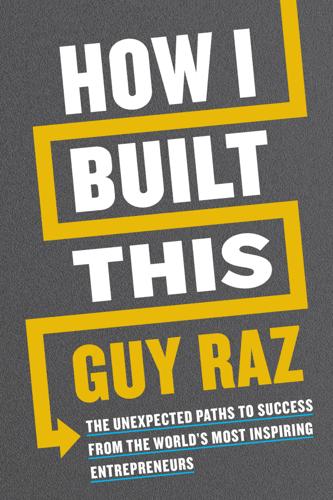
How I Built This: The Unexpected Paths to Success From the World's Most Inspiring Entrepreneurs
by
Guy Raz
Published 14 Sep 2020
Every single person is like, ‘I don’t know,’ or ‘I have this, but don’t get it, it’s awful.’” Not a single person in her large and diverse network of taste-making, style-setting friends had a good answer for her. It was either buy a Tumi bag that costs more than most plane tickets; spend $100 on an American Tourister from a big-box store that looks like everybody else’s luggage; or spend nothing at all for a poorly made piece and hope it makes it down the baggage carousel before totally falling apart. Those were the options, and none of her friends had any opinion on them, one way or the other, besides don’t. “It was so crazy to me that all of these people, including myself, who love to travel really had no connection to this thing that they brought with them on every single trip,” Jen said.
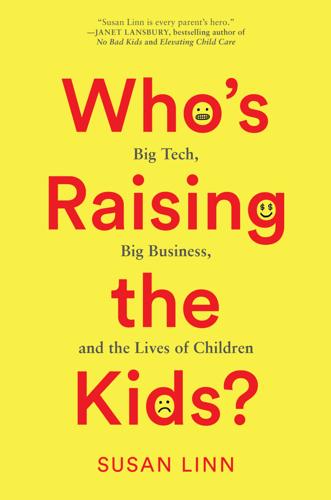
Who’s Raising the Kids?: Big Tech, Big Business, and the Lives of Children
by
Susan Linn
Published 12 Sep 2022
So, I tuned into Nickelodeon one afternoon not long ago to watch some commercials. Just about every toy advertised was for collectibles, including Hasbro’s DreamWorks Trolls Hair Huggers and Lost Kitties and Spin Master’s Twisty Petz. All of these can be found featured in unboxing videos as well. Each toy is relatively inexpensive, ranging from $2.99 to $5.99 at big-box stores. But here’s the catch: their marketing pushes the whole series. The ads feature not just one toy but several. Take the Lost Kitties ad, which features predictably adorable kids dancing around waving a couple of Kitties and chanting something like: Lost Kitties series two 100 you can collect!
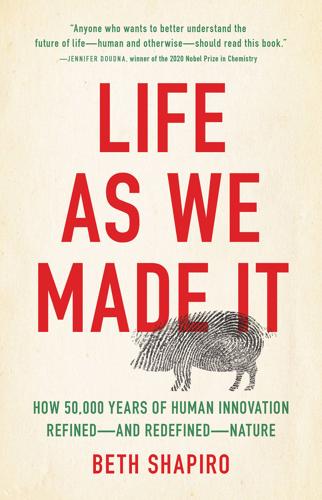
Life as We Made It: How 50,000 Years of Human Innovation Refined--And Redefined--Nature
by
Beth Shapiro
Published 15 Dec 2021
In 2019, Burger King introduced the Impossible Whopper, and in 2020, the Impossible Croissan’wich, made with Impossible pork. Today, national restaurant chains and local eateries in several countries are serving Impossible Bolognese, Impossible tacos, and pizzas topped with Impossible sausage. Impossible meat can be found on grocery store shelves and in the meat section at big-box stores. The secret to Impossible Foods’ success was its key ingredient, which, in addition to giving Impossible meat its subtle “moreishness,” could be grown in vats. Brown’s team discovered that what gives beef its flavor and mouthfeel and even color is a molecule called heme. Heme is a component of hemoglobin, the blood molecule that carries oxygen from our lungs to all our other cells.
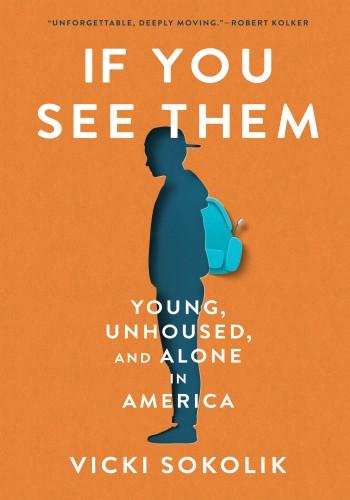
If You See Them
by
Vicki Sokolik
Published 23 Nov 2023
In that time, short on funds, short on everything, in order to survive, they might resort to criminal behavior again. After working with this population of kids for more than a decade, I’ve had many encounters with the courts. One homeless teenager, Keisha, was arrested for stealing feminine-hygiene products at a big-box store that prosecuted her to the full extent of the law. No one stopped to consider why Keisha was stealing them. (Because she couldn’t afford them and, no, paper towels alone are not enough.) Another student, Devonte, was picked up by a friend after clocking out of his shift as a busboy. When an officer pulled them over, citing reckless driving, and searched the car, which belonged to Devonte’s friend, a stash of weed was discovered in the center console—closer to the passenger’s side than the driver’s side.
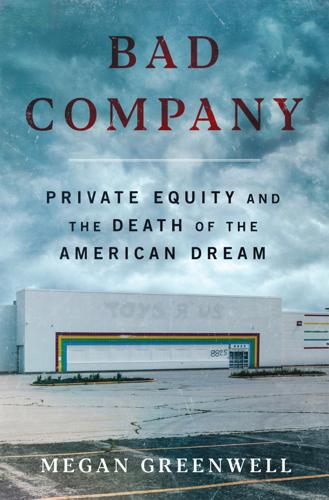
Bad Company
by
Megan Greenwell
Published 18 Apr 2025
Its Main Street is dotted with multiple coffee shops, two craft breweries, and a cafe serving quinoa bowls and wasabi crab avocado toast. Riverton’s Main Street, meanwhile, has a thrift store and pawnshops; most of the town’s restaurants, which skew more toward chicken-fried steak than quinoa, are on the state highway that cuts through town, nestled among big-box stores and chain motels. Lander is also, as any Riverton resident is quick to point out, smaller: about 7,600 people to Riverton’s 10,900. Visitors get the sense that Rivertonians have a chip on their shoulder about their fancier neighbor, while Lander residents rarely think about the larger town up the road
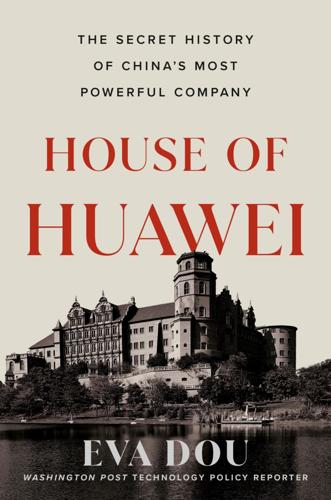
House of Huawei: The Secret History of China's Most Powerful Company
by
Eva Dou
Published 14 Jan 2025
Everything was becoming smart: smartphones, smartwatches, smart thermostats, smart vacuums, smart refrigerators. The gadgeteers called it the big-data era or the Internet of Things and touted a Jetsons-esque life of incredible convenience. But it also meant that companies and governments could track individuals to a far greater degree than ever before. Years earlier, the US big-box store Target had drawn backlash after an attempt to predict which women were pregnant by analyzing their buying habits.[12] Now this act of peering into customers’ shopping baskets seemed quaintly innocent. In this new day of big data, major tech companies and governments could quite plausibly track not only an individual’s shopping cart but also their location twenty-four hours a day, their conversations and texts, their social contacts, and even their thoughts before they spoke them aloud, as extrapolated through their internet search history and notes jotted in their phone’s note-taking apps.

Mood Machine: The Rise of Spotify and the Costs of the Perfect Playlist
by
Liz Pelly
Published 7 Jan 2025
“So, you don’t have to spend money on a Marquee, for instance, but if you don’t do it, it gets looked at like, Well, it can’t be a priority then because you’re not spending money there. It’s just that kind of I’ll scratch your back if you scratch mine. That’s always been the currency, though.” He compared it to the process of getting records stocked at big box stores: “If retailers are going to take your vinyl album, it’s like, Well, what are you doing to tell people it’s on sale here? Are you doing street posters? It’s the same thing on digital services. It’s not just Ah yes, you’ve got a great record and we are going to support you. What’s the campaign?

A Sea in Flames: The Deepwater Horizon Oil Blowout
by
Carl Safina
Published 18 Apr 2011
It’s time we step into the sunlight itself and phase in an energy future based on harnessing the eternal energies that actually run the planet. Whoever builds that new energy future will own the future. And the nation that owns the energy future will sell it to everyone else. I’d rather that nation be the United States of America. Did we really wage a decades-long Cold War just so we could anoint China the world’s Big Box Store? So we could be indebted to China for generations? Did we really hand world leadership to the largest autocratic nondemocracy in the history of the world because all it can offer is low wages, no unions, and cheap goods? Is that all it takes to secure our surrender? Where are the patriots? New details about the Gulf blowout of 2010 will continue to bubble up for quite some time.

With a Little Help
by
Cory Efram Doctorow
,
Jonathan Coulton
and
Russell Galen
Published 7 Dec 2010
"Let's go sell some books." -- 500 Afterword: 501 This is another story that was inspired by Patrick Nielsen Hayden; specifically by his very nice rant about how the collapse of small, local book distributors that served grocers and pharmacies -- and the rise of national distributors who serve big-box stores -- has destroyed the primary means by which new readers enter the field. It's all well and good to have terrific giant bookstores (or fabulous neighborhood stores, for that matter), but people don't go into those stores unless they already love books. In the past, the love affair with books often began outside of bookstores, in grocers and pharmacies, where you might happen upon any number of quirky, hand-picked paperbacks stocked by the local distributor.
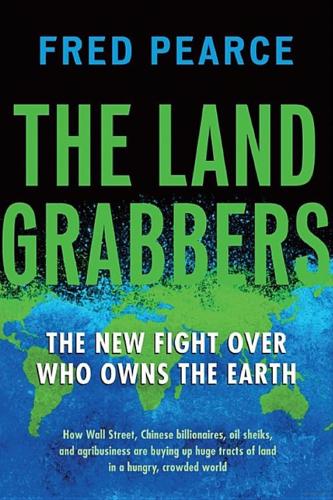
The Land Grabbers: The New Fight Over Who Owns the Earth
by
Fred Pearce
Published 28 May 2012
After decades of poverty and deprivation, the fierce Mennonite devotion to taming the Chaco has brought dividends. The main streets, such as Avenida Hindenberg, are wide enough to turn an oxcart, but this is Land Cruiser territory now. Filadelfia is one of the most prosperous towns in Paraguay, full of air conditioners and four-by-fours. The big-box store still has a wide range of farm implements, but they are being pushed aside by garden furniture and barbecues. The agricultural college boasts a Conservatorio de Musica on the side. Filadelfia’s museum celebrates both the Mennonites’ past and the wildlife that they are continuing to destroy.
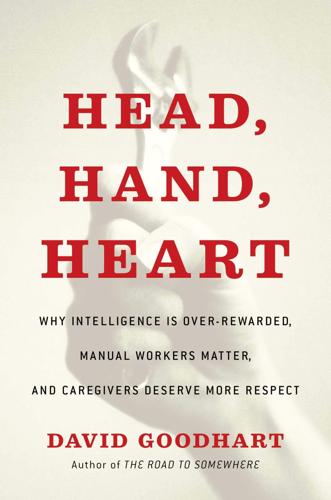
Head, Hand, Heart: Why Intelligence Is Over-Rewarded, Manual Workers Matter, and Caregivers Deserve More Respect
by
David Goodhart
Published 7 Sep 2020
The American sociologist Mike Hout has found that the social standing of dozens of specific manufacturing jobs scored just as highly in 2012 as they had in 1989 and 1968.4 “Less cognitively demanding occupations are as esteemed as ever, though the number of people working in them is a fraction of what it once was. The guy who spent the first twenty years of his working life stressing and straining to manipulate heavy machinery in a factory manufacturing autos, appliances, or the steel to make them laments his current circumstances driving a forklift in a big-box store—if he is lucky enough to be doing that. A robot does his old job, maybe in the same factory but more likely in Mexico or Brazil. He’d still rather make stuff than move stuff around,” says Hout.5 There is, of course, little point being nostalgic for the mass skilled manual labor of the industrial era.
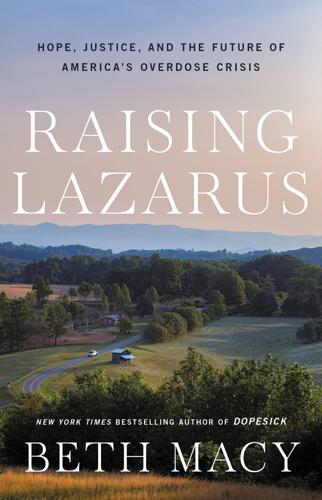
Raising Lazarus: Hope, Justice, and the Future of America’s Overdose Crisis
by
Beth Macy
Published 15 Aug 2022
I always tell them, ‘I’m here for you, even after hours,’ and ‘There’s a different route when you’re tired and you’re done.’” But some people are so traumatized—including one of her participants who was repeatedly raped by his dad—that what they really need is full-on psychiatric care. Now thirty, this young man sleeps in a tent next to a big-box store clutching a flashlight and his knife. He tells her about his childhood abuse and how the needle (he injects meth) is the only relief he gets from his spiraling thoughts. “I can’t blame him. You hear that, and you almost don’t know where to start,” Maloney says. Though she was trying to help him access psychiatric care, until that happened she would keep bringing him food and clean needles.
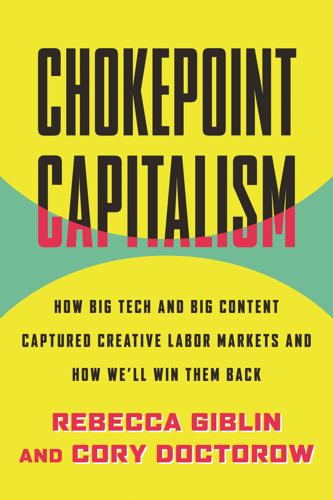
Chokepoint Capitalism
by
Rebecca Giblin
and
Cory Doctorow
Published 26 Sep 2022
Publishers became fixated on raising prices from $9.99, which they thought was devaluing their products, undercutting physical sales, and threatening the viability of their non-Amazon sellers. At this point independent bookstores were disappearing fast, worn down by decades of fighting first the big box stores, and now the online giant. Salvation (or so publishers thought!) came from Apple, about to launch its iPad and keen to create an accompanying bookstore. Working together, the tech giant and five of the then–Big Six (Hachette, HarperCollins, Macmillan, Penguin, and Simon & Schuster—but not Random House, the largest) came up with a different model.

Poverty for Profit
by
Anne Kim
It’s one of the most segregated communities in the United States, the result of decades of redlining and housing discrimination.1 Nine in ten of its roughly six thousand residents are Black; less than 3 percent are white.2 Though the city’s median household income is a hair below the national median ($69,099 versus $70,784 in 2021), the community is far less prosperous than other DC-area suburbs.3 Its poverty rate is more than double that of affluent Arlington, Virginia, and nearly five times that of its northern Maryland neighbor, Bethesda.4 At nearby Suitland High School, part of the Prince George’s County school system, two-thirds of students qualify for free or reduced-price lunch.5 The city’s main commercial thoroughfare is Pennsylvania Avenue (you can follow it north straight to the Capitol), which culminates in Penn Station, a massive collection of strip malls at the corner of Pennsylvania and Silver Hill Road. But this is not the kind of shopping center you’d find in mostly white suburbs, with a Panera next to Starbucks and big-box stores like Target and Old Navy. Instead, you’ll find an Ace Cash Express, Penn Station Liquors, dd’s Discount clothing store, and Ashley Outlet, which sells rent-to-own furniture. You’ll also find dialysis centers, bail bondsmen, and predatory tax preparers nearby. Within a ten-minute drive of this intersection is a microcosm of “Poverty, Inc.”
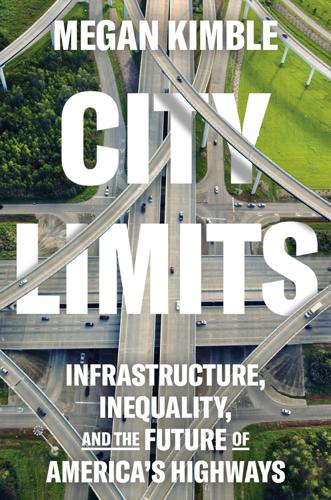
City Limits: Infrastructure, Inequality, and the Future of America's Highways
by
Megan Kimble
Published 2 Apr 2024
They liked North Houston, which unrolled into the Piney Woods region of East Texas, with lush stands of loblolly pine and sugar maple and red cedar. “We’re tree people,” Mark says. In 1992, Mark and Judy bought a home in Spring, five miles north of the farm to market road that had once seemed like the end of the earth. But by then, Houston’s urban footprint had poured over the fields of grazing cattle, big-box stores sprouting like mushrooms as hardwoods were felled and the ground below them was scraped clean. As the Cook family settled into their new home in Spring, Mark commuted downtown to his job at Enron. When he was hired, the company was called Houston Natural Gas, but it had since been acquired by a company called InterNorth, and after a brief stint as Enteron—which turned out to be the Latin word for intestine, leading to the joke “We’ll pass your gas!”

Brazillionaires: The Godfathers of Modern Brazil
by
Alex Cuadros
Published 1 Jun 2016
This caused the local currency, the real, to soar in value, which in turn made it cheaper for Brazilians to buy stuff abroad. In 2012 Brazilians accounted for one in seven Miami home purchases. The occasion for the party was Miami Swim Week, a fashion-industry swimsuit event. A taxi dropped me off at Artefacto’s Aventura location, a big-box store glowing white in the night. A light rain fell as bow-tied valets jogged to receive well-polished cars—Escalades, Bentleys. Past a three-pillared entryway, photographers snapped shots of the guests coming in. The paparazzi seemed to know who everyone important was; they did not take my picture.
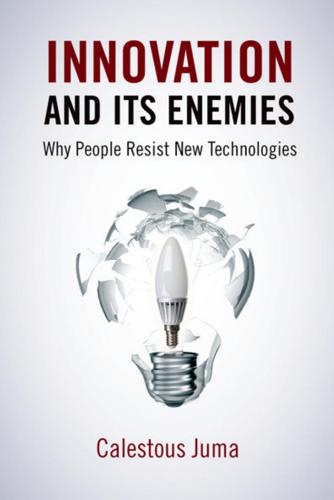
Innovation and Its Enemies
by
Calestous Juma
Published 20 Mar 2017
See Farm mechanization Media reinforcement of false balance, 249–250 social media, 37, 91 on transgenic salmon, 263 Medical technologies, 12–13, 30, 285 data management, 300 digital medicine, 300–301 incubator, 306 resistance to, 30–31, 35–36, 306, 307, 325n80 Medicine. See Health and healthcare Medico-Legal Society of New York, 162 Medieval Technology and Social Change (White), 16 Mediterranean flour moth (Ephestia kuehniella), 231 Mège-Mouriès, Hippolyte, 100–101 Meijer (big box stores), 271 Men, as coffee drinkers, 60, 329–330n39, 330n40 Menlo Park, Edison’s experiments at, 149–150 Merrill, William Henry, 184 Microbial biopesticide, Bt as, 231–232 Microelectronics, 292 Microprocessors, 40–41 Middle East, opposition to coffee in, 91 Mid-South Cotton Growers Association, 115 Military archery, 15, 16 horses and, 131 military bands, 206 technological innovation in, 26 Mill, John Stuart, 44 Milnes, Henry, 39 Milnes Electrical Engineering Company, 39 al-Mi’mar, Kha’ir Beg, 48–49 Misinformation.
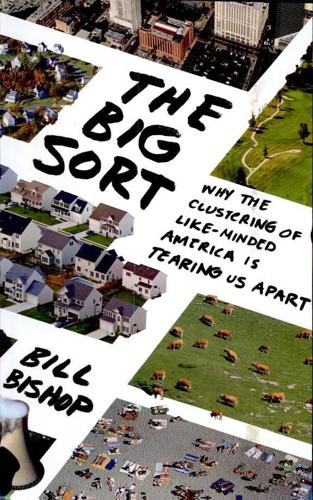
The Big Sort: Why the Clustering of Like-Minded America Is Tearing Us Apart
by
Bill Bishop
and
Robert G. Cushing
Published 6 May 2008
We divide evenly in elections or sit them out entirely because we instinctively seek the center while the parties and candidates hang out on the extremes."13 Fiorina argued that the fractious politics Americans were experiencing were wholly a result of polarized political leadership and extreme issue activists. Elected officials might be polarized, the professor wrote, but people were not. Journalists miss what's really happening in the country, he contended, because "few of the journalists who cover national politics spend much of their time hanging out at big box stores, supermarket chains, or auto parts stores talking to normal people ... When they do leave the politicized salons of Washington, New York and Los Angeles, they do so mainly to cover important political events which are largely attended by members of the political class ... The political class that journalists talk to and observe is polarized, but the people who comprise it are not typical."14 Fiorina announced that his book was needed to debunk what he described as the "new consensus" that Americans were deeply divided.15 In the meantime, however, Fiorina's view became the new truism.
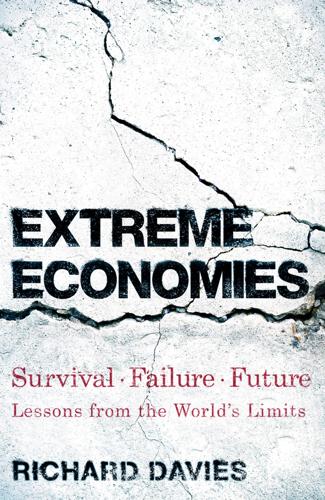
Extreme Economies: Survival, Failure, Future – Lessons From the World’s Limits
by
Richard Davies
Published 4 Sep 2019
This adds, they reckon, around 20 per cent to the prices they pay. Buying on credit is common in Chile: the country’s current president, Sebastián Piñera, made his name and fortune introducing credit cards here, and credit-card debt has rocketed in recent years, but this form of credit has not reached Nuevo 14. Santiago has plenty of malls with big-box stores and discount supermarkets but because the people here survive paycheque to paycheque they are unable to buy in bulk. In the local markets of the poorest areas people buy in tiny amounts: toilet tissue is sold by the roll, hawkers sell individual cigarettes. The families at the dump know the savings they could make by avoiding expensive credit and buying in bulk but earn too little to take advantage of them.

The Job: The Future of Work in the Modern Era
by
Ellen Ruppel Shell
Published 22 Oct 2018
Cooperative ownership is one economic strategy that spans political divides—both conservatives and progressives have noted its advantages. On one end of the spectrum are reformers taking a stand for what they call “democratic ownership,” and on the other are residents of struggling flyover America aiming to revitalize devastated local economies. With so many big box stores pulling up stakes and leaving—in early 2018, Walmart shuttered 63 outlets and closed 250 in 2016—these towns are often left with no grocery, no pharmacy, and fewer jobs. In these communities cooperatives are seen as a lifeline. Co-ops are sometimes misunderstood, regarded not as a challenge to existing business models but as an escape from business altogether.
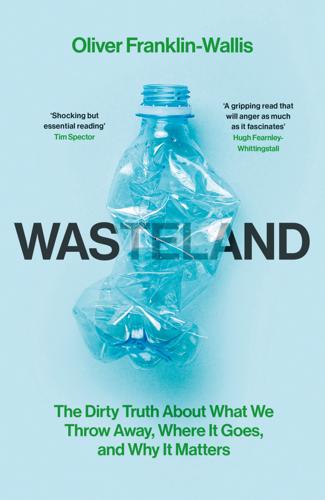
Wasteland: The Dirty Truth About What We Throw Away, Where It Goes, and Why It Matters
by
Oliver Franklin-Wallis
Published 21 Jun 2023
This is partly down to reputational pressure, and partly due to legislation: the 2015 Paris climate agreement, signed by 196 countries, set a global target of cutting food waste in half by 2030. France recently passed a law requiring that all food waste be donated or fed to animals. In Italy and Spain, restaurants are now required to package up leftovers so they can be eaten at home.21 The pressure seems, at least on the surface, to be working: several big box stores, including Walmart in the US and the UK’s four largest supermarket chains, have set aggressive zero-waste targets and pledged to send zero waste to landfill. Instead, unsold and wasted food is increasingly being used for animal feed, sent for anaerobic digestion – that is, turned into biogas, which is used to generate electricity – or donated to food charities
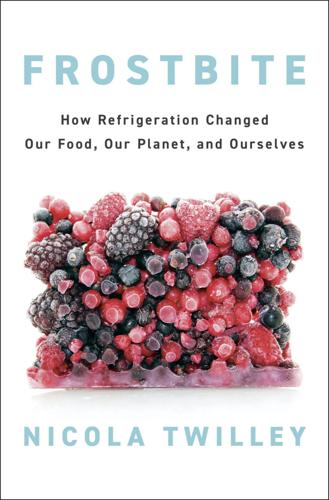
Frostbite: How Refrigeration Changed Our Food, Our Planet, and Ourselves
by
Nicola Twilley
Published 24 Jun 2024
Abundance, as manifest in refrigerators and homes, is both comforting and stifling: the thirty-two families stockpiled food so as not to worry about running out but then got frustrated when they couldn’t find anything in their overstuffed appliances. The mother of Family 16—the one with the extra ham from Ralphs—confessed that the freezer was the bane of her husband’s existence. “He hates it, cause it’s so full,” she told researchers. “He can’t make ice because there are chicken nuggets in it.” Big-box stores incentivize this kind of overstock, rewarding shoppers with two-for-one bargains and bulk discounts. “We’re a Costco family,” said the mother of Family 23, surveying the jam-packed shelves of her garage freezer and storage shelves. “I should just buy stock.” Much of the food hoarded in this manner is premade and microwave ready—frozen pizza, fish sticks, and burritos, valued for their ease of preparation and convenience.

The Bookshop: A History of the American Bookstore
by
Evan Friss
Published 5 Aug 2024
No, Barnes & Noble wasn’t an independent, they admitted, but neither was it a chain, they claimed puzzlingly. The whole retail landscape was in the midst of transformation. Dollars and traffic flowed away from indoor malls and toward strip malls stitched together by supersize retailers. The big-box stores included Barnes & Noble’s main rival. Borders began in Ann Arbor, Michigan, as a small used bookshop in 1971. It had grown tremendously by the time Kmart acquired it in 1992, at which point Kmart already owned Waldenbooks, which already owned Brentano’s. Borders-slash-Waldenbooks-slash-Brentano’s-slash-Kmart was a powerhouse.
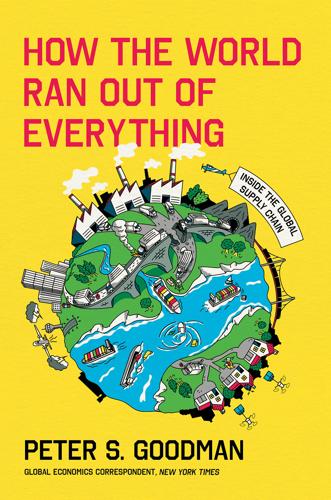
How the World Ran Out of Everything
by
Peter S. Goodman
Published 11 Jun 2024
See agriculture; corporate profit and investors; Great Supply Chain Disruption; manufacturing; monopolies; regulation; workforce; individual names of agencies; individual names of industries; individual names of politicians United States Shipping Board, 108 University of Chicago, 272 US Chamber of Commerce, 172 Uyghurs, 34, 287–88 Valley Pride, 129–30, 131–34 Vanderbilt, Cornelius, 195, 200, 268 Vanguard, 52 Veronica’s Embroidery, 318 vertical integration, 46, 53 Vespucci Maritime, 117 Vibram, 313 Vietnam China’s manufacturing cost vs., 347–48 COVID-19 wave in, 160–61 manufacturing in, 14, 42, 285, 289–95, 326, 327, 330 Vietnam War, 28, 98–99 Viscelli, Steve, 182, 235 Volcon, 307–8 Volkswagen, 26 Walgreens, 116 Walker, Hagan Glo business of, 4–5, 15, 19–23 ground transportation arrangements by, 177, 192, 210, 227–29, 247 manufacturing decisions by, 33, 38, 39–40, 44, 283–85, 292–95 procurement planning by, 82–84, 89 shipping arrangements by, 90–91, 101, 102–3, 118–20, 123, 152, 162 shipping via Maersk Emden, 3–5, 120, 152–54, 162, 177 Wall Street. See corporate profit and investors Walmart automation by, 337 big box stores as shipping priority, 110, 116, 134, 207 China and procurement by, 36–37 COVID-19 pandemic and demand change, 86 Mexican manufacturing by, 314–16 Platform88 and, 40 Walton, Sam, 37 Wang, Harry, 103, 118 Wang Yeping, 29 warehouses flexible workforce of, 67–68 of Inland Empire (California), 178, 187, 190 Just in Time vs., 14 workforce shortage at, 233 Watts, Steven, 46–47 Weber, 40 Weiss, Jacob, 149–51 Weiss, Jessica Chen, 37–38 Whelan, John, 105 When McKinsey Comes to Town (Bogdanich and Forsythe), 70 Whitney, Asa, 196 Wilson, Woodrow, 269 Wirth, Erin M., 150–51 workforce.

The Optimist: Sam Altman, OpenAI, and the Race to Invent the Future
by
Keach Hagey
Published 19 May 2025
(Confusingly, Singularity University purchased the rights to the Singularity Summit and other branding in 2012 from Yudkowsky’s organization, which had been rebranded the Machine Intelligence Research Institute.) In 2011, McCauley and colleagues from Singularity University co-founded the robotics company Fellow Robots, which made robots for everything from “telepresence” (one early prototype named Helo resembled a tablet atop a Segway) to customer service in big box stores (a sleek ATM machine with a female voice). She got an MBA in 2014 from USC’s Marshall School of Business (she would serve, between 2019 and 2022, as CEO of GeoSims, where her father was the chairman of the board and one of the company’s investors). In 2014, she married actor Joseph Gordon-Levitt—who starred in Inception—and the following year, in addition to having their first baby, they attended the Effective Altruism Global conference in San Francisco and quickly became known in the effective altruist community.
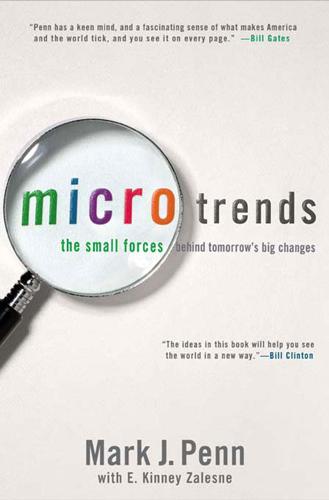
Microtrends: The Small Forces Behind Tomorrow's Big Changes
by
Mark Penn
and
E. Kinney Zalesne
Published 5 Sep 2007
While that group still makes up a big portion of classical activity online, a member survey conducted by www.classicalarchives.com reveals that nearly half of its subscribers are under 50, almost 1 in 5 did not finish college, and 1 in 3 have never played a musical instrument. When you think about it, it makes so much sense. The Internet is far friendlier to the casual classical fan than big-box stores ever were. When you can sample free tracks, or download just one track at a time and listen in the privacy of your iPod, classical music is suddenly not intimidating at all. An unintended consequence of the Internet is that it has opened up classical music to a younger, more diverse, and more adventurous brand of listener.
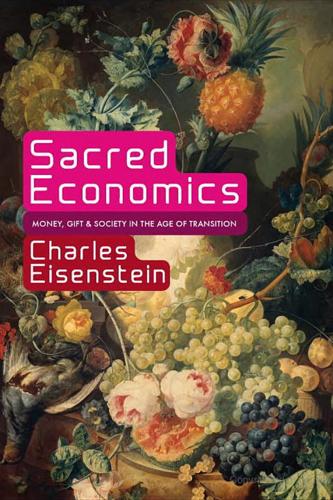
Sacred Economics: Money, Gift, and Society in the Age of Transition
by
Charles Eisenstein
Published 11 Jul 2011
Or, better, we could devote them to labor-intensive roles like permaculture, care for the sick and elderly, restoration of ecosystems, and all the other needs of today that go tragically unmet for lack of money. A world without weapons, without McMansions in sprawling suburbs, without mountains of unnecessary packaging, without giant mechanized monofarms, without energy-hogging big-box stores, without electronic billboards, without endless piles of throwaway junk, without the overconsumption of consumer goods no one really needs is not an impoverished world. I disagree with those environmentalists who say we are going to have to make do with less. In fact, we are going to make do with more: more beauty, more community, more fulfillment, more art, more music, and material objects that are fewer in number but superior in utility and aesthetics.

Worn: A People's History of Clothing
by
Sofi Thanhauser
Published 25 Jan 2022
Tired of haunting fields and factories, one evening I decided to visit the city’s downtown. Downtown Lubbock, however, seemed not to exist, hollowed out like so many American downtowns by a move toward the car-centric suburbs. There was some life to be found on the ring road outside of town: some barbecue and big-box stores, a Hooters. Downtown, I walked for blocks without seeing a soul. The windows were boarded over with plywood that glowed orange in the twilight. The Cotton Club, where Buddy Holly’s band used to play, was shut. Lubbock cotton now flows into the global supply chain with an eerie silence: no celebration amongst a community—no matter how flawed and blind to suffering—to see it off.
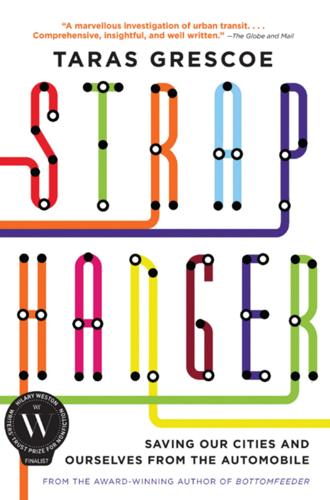
Straphanger
by
Taras Grescoe
Published 8 Sep 2011
It’s only when you get off the freeways that you see how the subprime crisis stormed through this city like a tornado in a trailer park. “Three Months Free Rent,” read the signs on countless low-rise apartment buildings. Metrocenter, once Arizona’s biggest mall and now a crime-ridden shell of vacant big-box stores, is known as the place where rapper DMX was arrested; lately, locals have dubbed it “Ghettocenter.” But it is in the outer subdivisions, what real estate experts call the “ring of death,” that things really get grim. Entire subdivisions in Buckeye, Tolleson, and Surprise seem to have no residents.

The Lonely Century: How Isolation Imperils Our Future
by
Noreena Hertz
Published 13 May 2020
By then, the death rate in Roseto had climbed back up to the average due to the ‘erosion of traditionally cohesive family and community relationships’ from the late 1960s and beyond.29 As the wealthiest amongst them started to display their riches in ever more ostentatious ways, as local stores closed down due to the arrival of larger ‘big box’ stores out of town and as single family homes with fenced yards sprung up replacing the multigenerational living set-ups, so did the protective health benefits of their community dissipate.30 Other examples of cohesive communities protecting their members’ health include the lifetime residents of Sardinia and Japan’s Okinawa island, as well as the Seventh-Day Adventists in Loma Linda, California.

The Controlled Demolition of the American Empire
by
Jeff Berwick
and
Charlie Robinson
Published 14 Apr 2020
From the owner of the small store’s perspective, all the years of relationship building, their integration into the community, the history with their customers can all be thrown away just in order to save a couple of dollars? No loyalty, no friendships, no banked goodwill, no nothing. Everything that they have built within their community over the decades can all go away the minute a big-box store opens in the next town with lower prices. It looks like all they really ever had with their customers was theoretical loyalty because when that bond was actually tested, it revealed that it was really only about the money. Marx thought that part of the loss of identity would happen when it became impossible to tell the difference between whether a shopper was standing in a store in Moscow or Mexico City due to the corporate homogenization of the store design and layout.

A Man and His Ship: America's Greatest Naval Architect and His Quest to Build the S.S. United States
by
Steven Ujifusa
Published 9 Jul 2012
During the spring of 2010, United States awaited a decision about her future at Philadelphia’s Pier 82, surrounded by a maze of security cameras and barbed wire. The once-busy Delaware River waterfront scene, where Willy Gibbs watched the St. Louis christened in 1894, is long gone. In place of piers and shipyards are strip malls, big-box stores, parking lots, and highways. Each day thousands speed by United States on Columbus Boulevard, Interstate 95, and the Walt Whitman Bridge, scarcely noticing the faded red, white, and blue funnels that loom over South Philadelphia. But close up, the great ship’s immense size is still overwhelming.
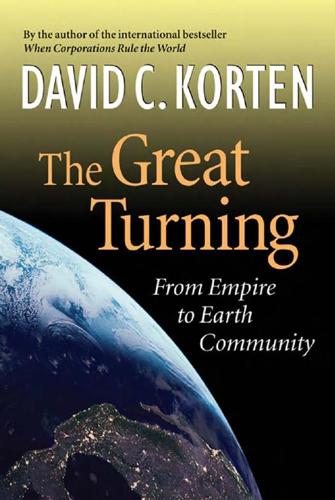
The Great Turning: From Empire to Earth Community
by
David C. Korten
Published 1 Jan 2001
Less visible, but ultimately even more important, are the many initiatives aimed at growing corporatefree economies that mimic healthy ecosystems. These initiatives range from “buy local” campaigns and efforts to rebuild local food systems based on independent family farms, to efforts to eliminate corporate subsidies, stop the intrusion of big-box stores, hold corporations accountable for harms committed, and reform corporate chartering. There are groups that encourage humane animal husbandry and sustainable agriculture, seek to abolish factory farms and ban genetically modified seeds, promote green business, introduce sustainable community-based forestry-management practices, and work to roll back the use of toxic chemicals.

The Zero Marginal Cost Society: The Internet of Things, the Collaborative Commons, and the Eclipse of Capitalism
by
Jeremy Rifkin
Published 31 Mar 2014
A growing number of retail industry analysts are forecasting the imminent death of large segments of the brick-and-mortar retail trade. Jason Perlow, technology editor at ZDNet, says that convenience stores like 7-Eleven, drug stores like Walgreens, and supermarket chains like Kroger will continue to keep their doors open, along with high-end specialty and luxury stores like Crabtree & Evelyn, and a few big box stores like Walmart. Much of the brick-and-mortar retail business, however, is going to shrink, especially as a younger generation weaned on purchasing online comes of age. Perlow says that while brick-and-mortar retail will not disappear, in “ten years hence [the] retail footprint will be a shadow of its former self and heavy competition from online will allow only the strongest brick-and-mortar businesses to survive.”32 As in other industries where automation is quickly reducing human labor, virtual retailing is following suit.
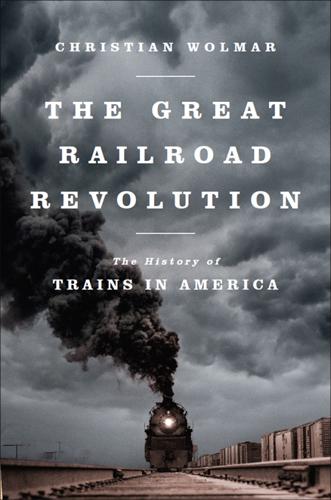
The Great Railroad Revolution
by
Christian Wolmar
Published 9 Jun 2014
There were disadvantages, too. A small town that had been self-sufficient could quickly change into one dependent on the regional, or even the national, economy as people switched to using the larger town’s amenities, in much the same way that today downtowns have been killed because local residents have access by road to big-box stores and strip malls. The station, or depot, however modest, would become a hub, the start or the end point of most people’s visits or of journeys by local inhabitants to distant places. The relationship between the town and the station would be symbiotic, and again it is difficult to disentangle interwoven threads of cause and effect.

Venice: A New History
by
Thomas F. Madden
Published 24 Oct 2012
The buying up of Venice’s residential spaces has had two complementary outcomes: There are fewer homes for Venetians and their cost is much greater. When the other difficulties of living in a city without cars are factored in, a great many Venetians have made the logical choice to move to the mainland. There one can find a home for a fraction of the cost, own a car, and shop at the big-box stores without fighting through waves of tourists. Since 1950 the population of Venice has decreased from approximately 150,000 to around 60,000. Venice is also aging, as schools close and children become rare. Although this is an Italian, not a Venetian, problem (Italian birthrates in 2011 were 9.18 per 1,000 population), it hits Venice particularly hard.

How Everything Became War and the Military Became Everything: Tales From the Pentagon
by
Rosa Brooks
Published 8 Aug 2016
And like Walmart, the tempting one-stop-shopping convenience it offers has a devastating effect on smaller, more traditional enterprises—in this case, the State Department and other civilian foreign policy agencies. It’s fashionable to despise Walmart—for its cheap, tawdry goods, for the human pain we suspect lies at the heart of the enterprise, for its sheer vastness and mindless ubiquity. Most of the time, we prefer not to see it, and use zoning laws to exile its big box stores to the commercial hinterlands away from the center of town. But much as we resent Walmart, we can’t, in the end, seem to live without it. As the military struggles to define its role and mission, it evokes similarly contradictory emotions in its civilian masters. Civilian officials want a military that costs less but provides more, a military that stays deferentially out of strategy discussions but remains eternally available to ride to the rescue.
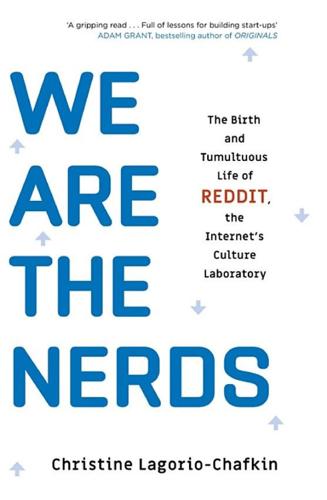
We Are the Nerds: The Birth and Tumultuous Life of Reddit, the Internet's Culture Laboratory
by
Christine Lagorio-Chafkin
Published 1 Oct 2018
He answered a newspaper ad placed by a startup called Sidea, and spent a summer hawking software at CompUSA. One of the pieces of software was a children’s game based on Ludwig Bemelmans’s Madeline books. He demonstrated it every thirty minutes, on loop, regardless of whether anyone was watching, his unsteady teenage voice booming through the cavernous big-box store. It was the ultimate, ridiculously mortifying crash course in public speaking. But he was getting paid. “So,” he said, “it was wonderful.” * * * If Ohanian’s early engagement with computers didn’t glorify startup life, Huffman’s sure did. Coding was Huffman’s primary hobby, and he loved reading accounts of startups, such as Jeff Bezos’s founding of Amazon.
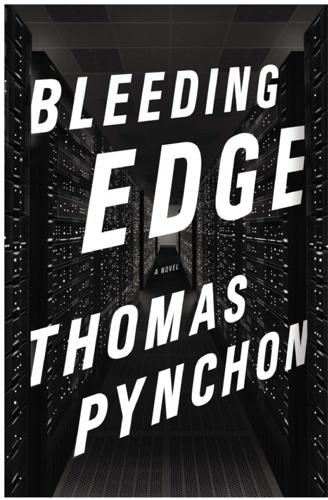
Bleeding Edge: A Novel
by
Thomas Pynchon
Published 16 Sep 2013
The sleazy old Deuce she remembers from her less responsible youth is so no more, Giuliani and his developer friends and the forces of suburban righteousness have swept the place Disneyfied and sterile—the melancholy bars, the cholesterol and fat dispensaries and porno theaters have been torn down or renovated, the unkempt and unhoused and unspoken-for have been pushed out, no more dope dealers, no more pimps or three-card monte artists, not even kids playing hooky at the old pinball arcades—all gone. Maxine can’t avoid feeling nauseous at the possibility of some stupefied consensus about what life is to be, taking over this whole city without mercy, a tightening Noose of Horror, multiplexes and malls and big-box stores it only makes sense to shop at if you have a car and a driveway and a garage next to a house out in the burbs. Aaahh! They have landed, they are among us, and it helps them no end that the mayor, with roots in the outer boroughs and beyond, is one of them. And here they all are tonight, converged into this born-again imitation of their own American heartland, here in the bad Big Apple.
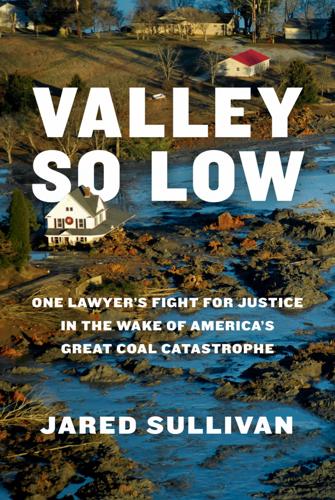
Valley So Low: One Lawyer's Fight for Justice in the Wake of America's Great Coal Catastrophe
by
Jared Sullivan
Published 15 Oct 2024
The drinking water was safe, Ray assured viewers. There was nothing to worry about. * * * — A week or two after the Kingston disaster, Jim Scott drove his Ford Explorer out of Knoxville. The winter had been especially cold and wet, and the distant hills were gray and lonesome as he motored down I-40, past the strip malls, big-box stores, and truck stops of the west Knoxville suburbs. On the morning the dike collapsed, he knew that there was potential for a lawsuit against TVA, but state bar associations largely restrict attorneys from soliciting clients directly—they had to come to him. And they had already begun to. Jim Scott Scott’s dad, Buddy, the former judge, had cautioned him against getting involved in a suit against TVA.
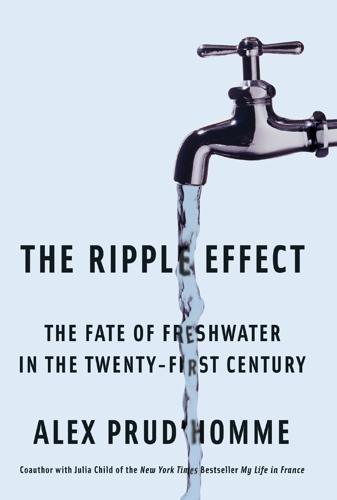
The Ripple Effect: The Fate of Fresh Water in the Twenty-First Century
by
Alex Prud'Homme
Published 6 Jun 2011
The Shenandoah Valley has nine hundred poultry farms, and in 2000 they held 265 million broiler chickens, 25.5 million turkeys, and 824 million eggs. A giant bronze turkey statue, mounted on a stone base, declares Rockingham County, a two-hour drive from downtown Washington, DC, to be Virginia’s “turkey capital.” At the same time, Rockingham’s farmland is increasingly being plowed under for new highways, developments, and big-box stores. Each of these is equipped with hard roads, roofs, and parking lots, which hasten storm-water runoff. In the 1800s, farmers in Rockingham County kept simple chicken coops in their backyards. As the population grew, so did the poultry business. In the 1920s, Charles W. Wampler Sr., “the father of the modern turkey industry,” raised the first flock hatched in an incubator and matured in confinement here.
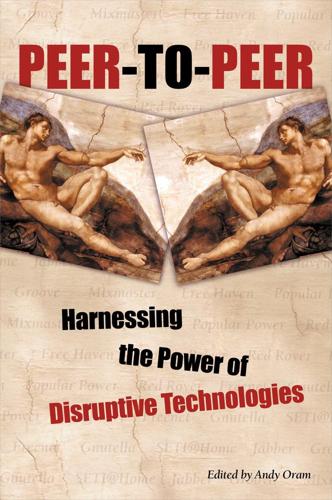
Peer-to-Peer
by
Andy Oram
Published 26 Feb 2001
Their strategic positioning is to appeal to the “dummy” who needs to learn about computers but doesn’t really want to. Ours is to appeal to the people who love computers and want to go as deep as possible. Their marketing strategy is to build a widely recognized consumer brand, and then dominate retail outlets and “big box” stores in hopes of putting product in front of consumers who might happen to walk by in search of any book on a given subject. Our marketing strategy is to build awareness of our brand and products in the core developer and user communities, who then buy directly or drive traffic to retail outlets. The former strategy pushes product into distribution channels in an aggressive bid to reach unknown consumers; the latter pulls products into distribution channels as they are requested by consumers who are already looking for the product.

American Gun: The True Story of the AR-15
by
Cameron McWhirter
and
Zusha Elinson
Published 25 Sep 2023
Sales of Colt’s new AR-15 were robust and helped to keep the company afloat. “Everybody was happy,” said Dinkel. Executives at Feinberg’s gun firm moved to grab an even larger share of the expanding AR-15 market. They changed the company’s name from American Heritage Arms to Freedom Group. They pushed their AR-15s into big-box stores such as Walmart, slashing the prices of their low-end rifles to get them on the shelves of America’s largest retailer. They wanted to sell as many as possible. “With Cerberus and them, it’s all about the numbers and volume,” remembered Luth, who was still in charge at DPMS. Money poured into Freedom Group and other gun companies, while every other business sector struggled as the global financial crisis plunged the United States into a recession.
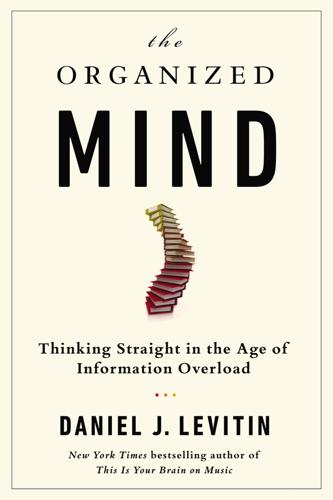
The Organized Mind: Thinking Straight in the Age of Information Overload
by
Daniel J. Levitin
Published 18 Aug 2014
John Venhuizen is president and CEO of Ace Hardware, a retailer with more than 4,300 stores in the United States. “Anyone who takes retailing and marketing seriously has a desire to know more about the human brain,” he says. “Part of what makes the brain get cluttered is capacity—it can only absorb and decipher so much. Those big box stores are great retailers and we can learn a lot from them, but our model is to strive for a smaller, navigable store because it is easier on the brain of our customers. This is an endless pursuit.” Ace, in other words, employs the use of flexible categories to create cognitive economy. Ace employs an entire category-management team that strives to arrange the products on the shelves in a way that mirrors the way consumers think and shop.

Colorado
by
Lonely Planet
The downtown stands at a junction of roads leading elsewhere: US 40 goes east–west between Steamboat Springs and Dinosaur National Monument; Hwy 789/13 runs north through desolate, rolling hills near the Wyoming Border; and 394 follows the Yampa River south to Meeker. The main drag is Yampa Ave, but its taxidermy shops, automotive suppliers and liquor stores offer a fairly grim stroll. At least there are big box stores and several grocers if you’re stocking up for a trip out west. Sights & Activities Museum of Northwest Colorado MUSEUM ( 970-824-6360; www.museumnwco.org; 590 Yampa Ave; 9am-5pm Mon-Fri, 10am-4pm Sat; ) The hats, chaps and saddles in the cowboy collection are the highlight of this community museum.
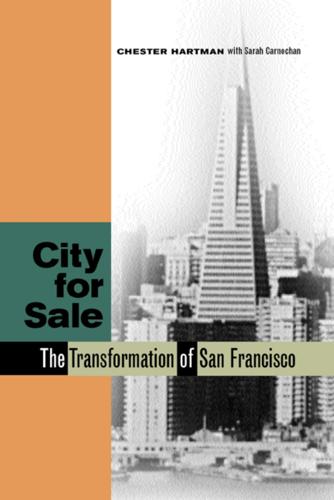
City for Sale: The Transformation of San Francisco
by
Chester W. Hartman
and
Sarah Carnochan
Published 15 Feb 2002
He sought and received support from the local Republican Party* as well as from landlord groups such as the San Francisco Apartment Association—the latter related to his support of a controversial proposal, introduced by the rental property owners, to study the City’s rent control law, a move seen by tenant advocates as the first step to weakening or abolishing this safeguard. Ammiano constantly stressed the downsides of gentrification, holding himself out as the champion of neighborhoods, inveighing against chain stores and big box stores. He also introduced and worked hard to pass a “living wage” ordinance that would guarantee every worker employed by a City contractor or by businesses that lease property from the City at least eleven dollars an hour, plus benefits (subsequently enacted, but at a lower level—see chapter 13). Ammiano also pushed the image of Brown as a deal maker, beholden to development interests, a machine politician, antagonistic to citizen participation.† A related charge was Brown’s undermining of neighborhoods and neighborhood- *“In one of the most amazing twists yet to San Francisco’s crazy mayoral election, the county Republican Central Committee voted last night to endorse the reelection of its longtime archenemy, Mayor Willie Brown . . . the man whom California Republicans have long reviled as the very symbol of errant Democratic liberalism” (Edward Epstein, “Republicans Grit Teeth, Back Brown,” San Francisco Chronicle, 9 November 1999).

This Changes Everything: Capitalism vs. The Climate
by
Naomi Klein
Published 15 Sep 2014
If we don’t think about how the economy is structured, then we’re actually never going to the real root of the problem.”46 These kinds of economic reforms would be good news—for unemployed workers, for farmers unable to compete with cheap imports, for communities that have seen their manufacturers move offshore and their local businesses replaced with big box stores. And all of these constituencies would be needed to fight for these policies, since they represent the reversal of the thirty-year trend of removing every possible limit on corporate power. From Frenetic Expansion to Steady States Challenging free trade orthodoxy is a heavy lift in our political culture; anything that has been in place for that long takes on an air of inevitability.
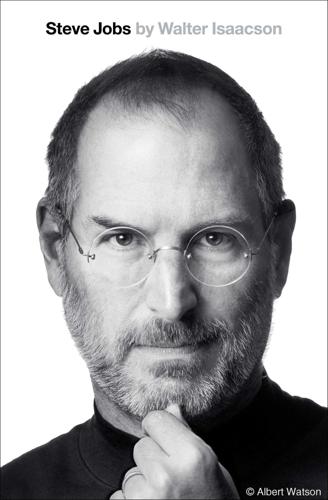
Steve Jobs
by
Walter Isaacson
Published 23 Oct 2011
CHAPTER TWENTY-NINE APPLE STORES Genius Bars and Siena Sandstone New York’s Fifth Avenue store The Customer Experience Jobs hated to cede control of anything, especially when it might affect the customer experience. But he faced a problem. There was one part of the process he didn’t control: the experience of buying an Apple product in a store. The days of the Byte Shop were over. Industry sales were shifting from local computer specialty shops to megachains and big box stores, where most clerks had neither the knowledge nor the incentive to explain the distinctive nature of Apple products. “All that the salesman cared about was a $50 spiff,” Jobs said. Other computers were pretty generic, but Apple’s had innovative features and a higher price tag. He didn’t want an iMac to sit on a shelf between a Dell and a Compaq while an uninformed clerk recited the specs of each.
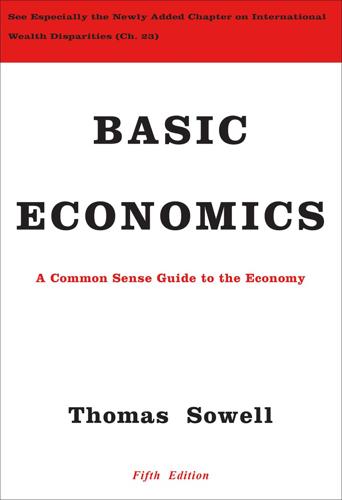
Basic Economics
by
Thomas Sowell
Published 1 Jan 2000
Manish, “Market Reforms in India and the Quality of Economic Growth,” The Independent Review, Fall 2013, pp. 257–259. {197} Paul R. Lally, “Note on the Returns for Domestic Nonfinancial Corporations in 1960–2005,” Survey of Current Business, May 2006, p. 7. {198} Richard Vedder and Wendell Cox, The Wal-Mart Revolution: How Big-Box Stores Benefit Consumers, Workers, and the Economy (Washington: AEI Press, 2006), p. 69. {199} Kate Linebaugh, “Inventory Traffic Jam Hits Chrysler,” Wall Street Journal, January 12, 2009, p. B1. {200} Ann Harrington, “Honey, I Shrunk the Profits,” Fortune, April 14, 2003, p. 197. {201} Walter E.
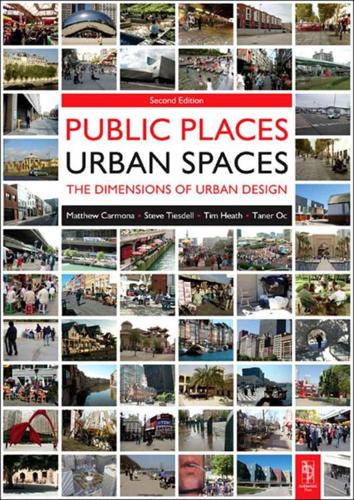
Public Places, Urban Spaces: The Dimensions of Urban Design
by
Matthew Carmona
,
Tim Heath
,
Steve Tiesdell
and
Taner Oc
Published 15 Feb 2010
It may also be considered an ‘urbane disguise’ because there is still the economic impact (both positive and negative) of big box retail In the USA, practices have developed whereby larger single-use buildings – big box retail, department stores, movie theatres, etc. – are completely or partially wrapped in what are termed ‘liner’ buildings (see Mouzon, in Steuteville et al 2009: 90–106, 291–2) – ‘… a relatively shallow building that conceals a larger, outwardly uninteresting structure such as a parking garage, cinema complex, or big box store.’ Containing retail and small businesses at ground level and offices or residential above, liner buildings have a shallow footprint in terms of depth (6–12m; 20–40ft) and are often single-loaded, though sometimes they are detached from the big box and have a service-way between them and the big box unit allowing rear servicing.

Lonely Planet Washington, Oregon & the Pacific Northwest
by
Lonely Planet
The town itself is not particularly glamorous, but it has a cute downtown core beside the lovely Skagit River, and a riverside park that invites leisurely strolls and bicycle rides. For cyclists, it makes an ideal launching point for tours of the valley and is generally a less expensive base than adorable La Conner. With big-box stores and gas stations galore, it’s an excellent place to stock up before setting off on a Mt Baker adventure. Skagit Riverwalk ParkWALKING (509 S Main St) A nice flat semipaved boardwalk wedged between downtown Mt Vernon and the Skagit River is ideal for running, cycling or walking, with lots of benches along the way for catching the sunset.

Bourgeois Dignity: Why Economics Can't Explain the Modern World
by
Deirdre N. McCloskey
Published 15 Nov 2011
It was a wonderful store, exhibiting I thought bourgeois virtue. Through the combined virtues of prudence and courage called enterprise Metzel kept obscure university-press books in stock. Mine, for instance. It was a policy that a decade later, under a new owner, led to the shop’s shuttering, under pressure from the big-box stores and especially from Amazon (where all my books, dear friends, stand ready to be purchased). On second thought, maybe Metzel was not all that prudent. Anyway, I was saying to him, “You know, there are only two well-known European novels since 1848 that have portrayed businessmen on the job in anything like a sympathetic way.

Northern California Travel Guide
by
Lonely Planet
Redding is the last major outpost before the small towns of the far north, and the surrounding lakes make for easy day trips or overnight camps. If you get off the highway – way off – this can be an exceptionally rewarding area of the state to explore. Redding Originally called Poverty Flats during the gold rush for its lack of wealth, Redding today has a whole lot of tasteless new money – malls, big-box stores and large housing developments surround its core. A tourist destination it is not, though it is the major gateway city to the northeast corner of the state and a useful spot for restocking before long jaunts into the wilderness. Recent constructions like the Sundial Bridge and Turtle Bay Exploration Park are enticing lures and worth a visit…but not a long one.

Hawaii Travel Guide
by
Lonely Planet
Central Maui 1Top Sights 1Maui Ocean CenterB5 1Sights 2Haycraft ParkC5 3ʻIao NeedleA2 4ʻIao Valley State ParkA2 5Kanaha Beach ParkD2 6Kealia Pond National Wildlife RefugeC5 7Kepaniwai Park & Heritage GardensA2 8Old Puʻunene BookstoreD3 2Activities, Courses & Tours Air Maui Helicopter ToursD2 Blue Hawaiian HelicoptersD2 9Flyin Hawaiian ZiplineB3 10Kahului HeliportD2 11Kealia Coastal BoardwalkC5 12King Kamehameha Golf ClubB4 13Lahaina Pali TrailA5 14Maʻalaea Harbor ActivitiesB5 15Maʻalaea PipelineB5 16Pacific Whale FoundationB5 QuicksilverB5 Shark Dive MauiB5 Sunshine HelicoptersD2 4Sleeping 17Old Wailuku InnB2 5Eating Beach Bums Bar & GrillB5 18Maʻalaea General Store & CafeB5 Kahului Pop 26,337 Most Hawaiian islands have a working town like Kahului, full of warehouses, strip malls, shopping centers, and that island-wide magnet, the big-box store. Like its counterparts, Kahului also contains Maui’s main harbor and airport, turning it, in the eyes of many, into a transit stop. But at the same time, you’ll find a great swath of local life here. You can talk story with the locals at the Saturday swap meet, watch a concert on the lawn of the cultural center and join the wave-riders at Kanaha Beach. 1Sights Kanaha Pond Bird SanctuaryNATURE RESERVE ( MAP GOOGLE MAP ; Hwy 37; hsunrise-sunset)SF You wouldn’t expect a wildlife sanctuary to be so close to a main road, but a short walk leaves it behind.
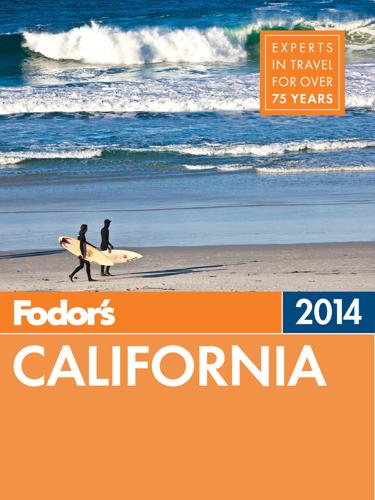
Fodor's California 2014
by
Fodor's
Published 5 Nov 2013
Helena teems with elegant boutiques and restaurants; mellow Calistoga, known for spas and hot springs, feels a bit like an Old West frontier town, and has a more casual attitude. Previous Map | Next Map | California Maps Napa 46 miles northeast of San Francisco The town of Napa is the valley’s largest, and visitors who get a glimpse of the strip malls and big-box stores from Highway 29 often speed right past on the way to smaller and more seductive Yountville or St. Helena. But Napa is changing. After many years as a blue-collar town that more or less turned its back on the Wine Country scene, Napa has spent the last few years attempting to increase its appeal to visitors.

Caribbean Islands
by
Lonely Planet
If nothing else, this lane of street stalls and tiny shops is a great spot to hang out with the locals, in their element, and find some real bargains. Otherwise, outside of the obvious appeal of market days, just wander the small shops along the streets and enjoy the kind of shopping that was universal before the big box stores. Information Ferry Terminal internet (per hr US$2) A great way to kill some time while waiting for the ferry and also a good option if you’re in this end of town. Good computers and a pretty fast connection. Kingstown General Hospital ( 456-1185; 24hr) On the Leeward Hwy. For serious illness or decompression sickness you will be sent to Barbados.

Principles of Corporate Finance
by
Richard A. Brealey
,
Stewart C. Myers
and
Franklin Allen
Published 15 Feb 2014
Now suppose instead that all the shares are issued to new stockholders, so that existing stockholders don’t have to contribute any cash. Does the value of the company to the existing stockholders change, assuming that the new shares are sold at a fair price?) 34. DCF valuation and PVGO Delhi Big-Box Stores is solidly profitable and growing rapidly. At the same time it faces a relatively high opportunity cost of capital, which the CFO estimates at 14%. Construct a table in the same format as Table 4.7. Assume a starting asset value of R10 billion, initial ROE of 20%, and an initial growth rate of assets and earnings of 15% per year.

USA Travel Guide
by
Lonely, Planet
And while old-timers grumble that Austin has lost its funky charm, the city has still managed to hang on to its incredibly laid-back vibe. Though this former college town with a hippie soul has seen an influx of tech types and movie stars, it’s still a town of artists with day jobs, where people try to focus on their music or write their novel or annoy their neighbors with crazy yard art. Along the freeway and in the ’burbs, big-box stores and chain restaurants have proliferated at an alarming rate. But the neighborhoods still have an authentically Austin feel, with all sorts of interesting, locally owned businesses, including a flock of food trailers – a symbol of the low-key entrepreneurialism that represents Austin at its best.